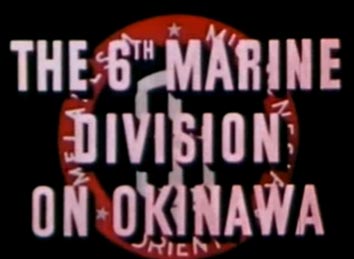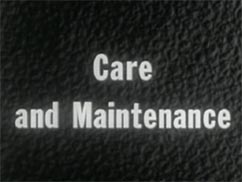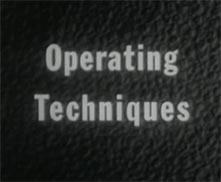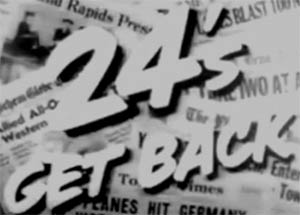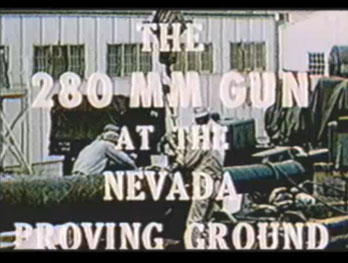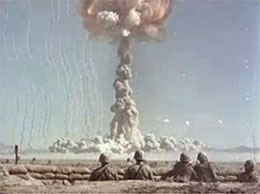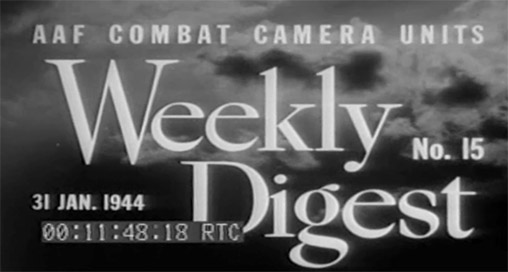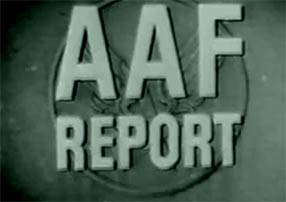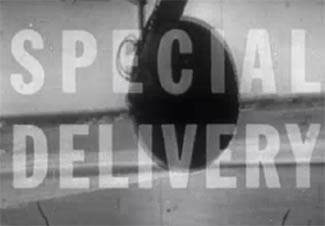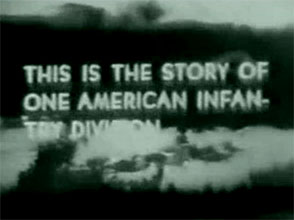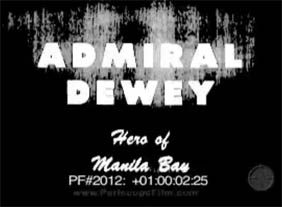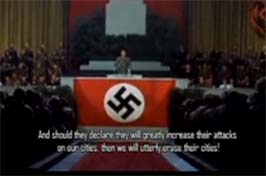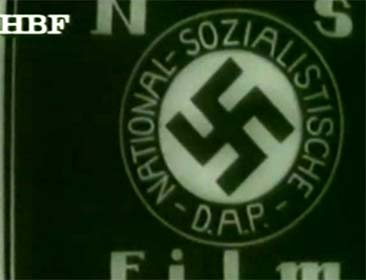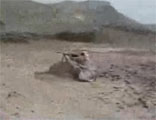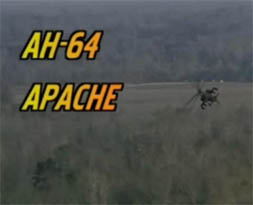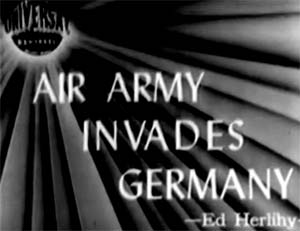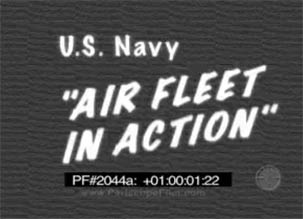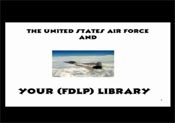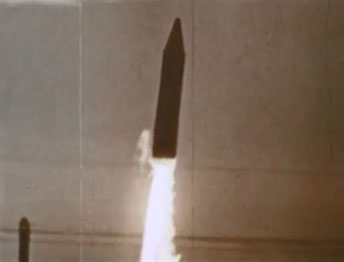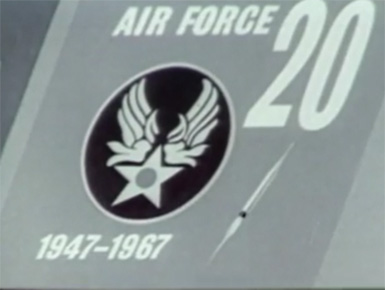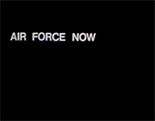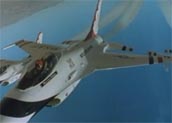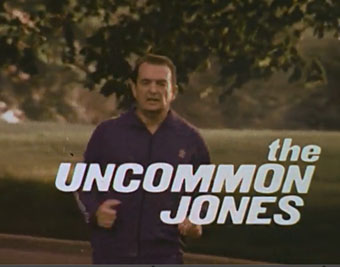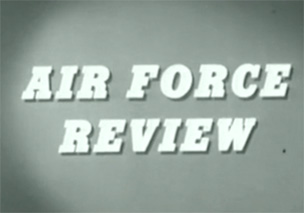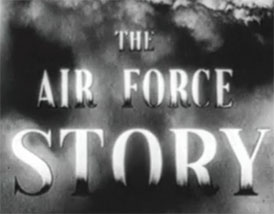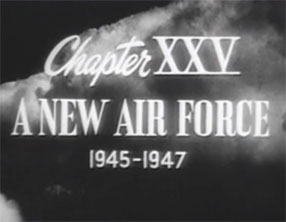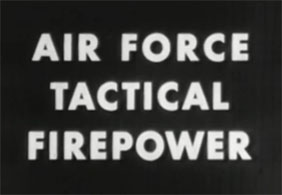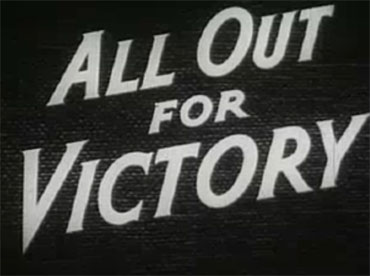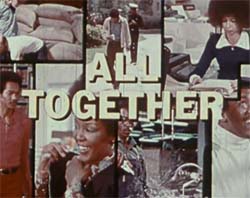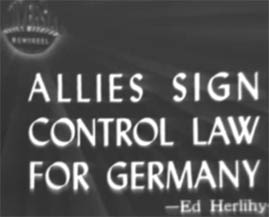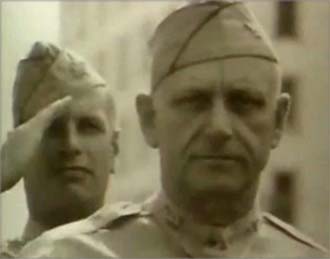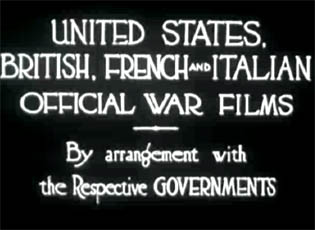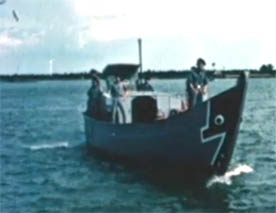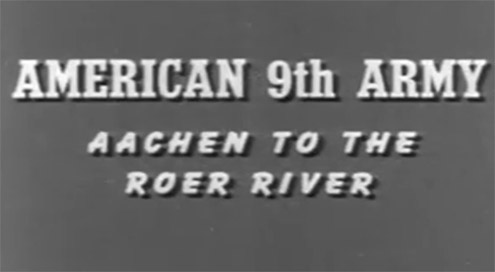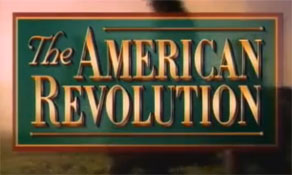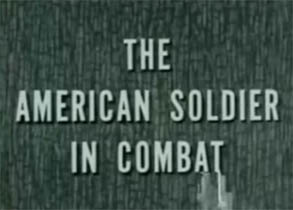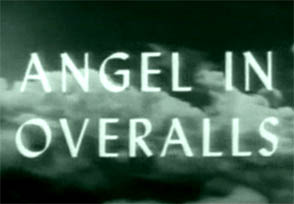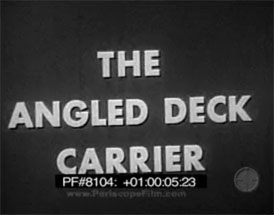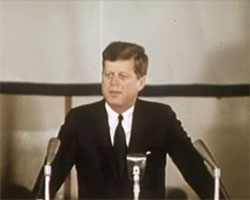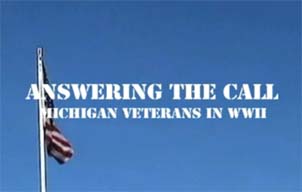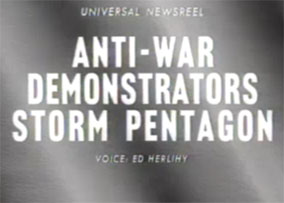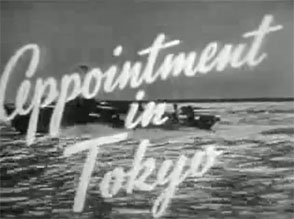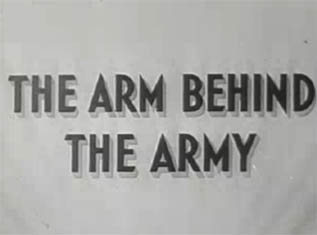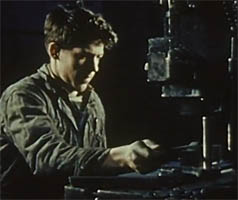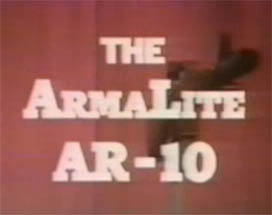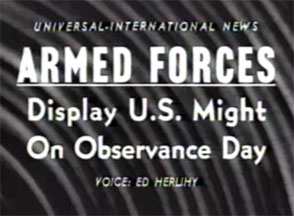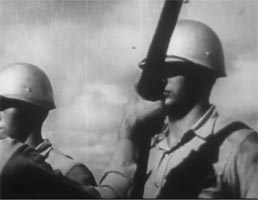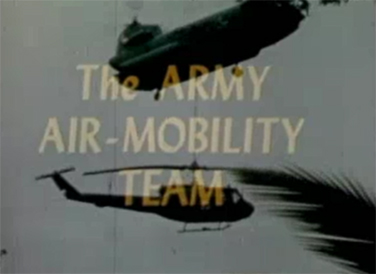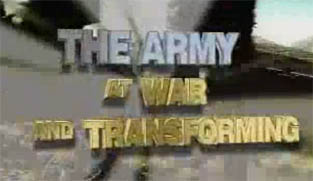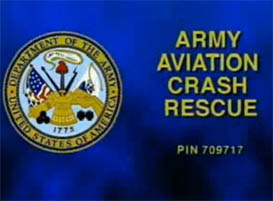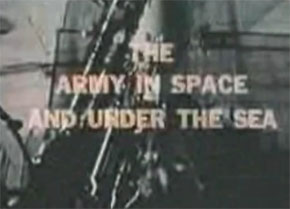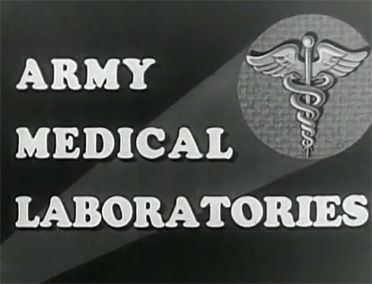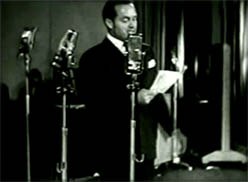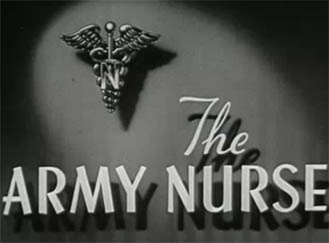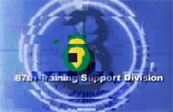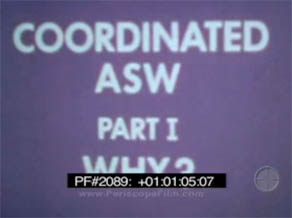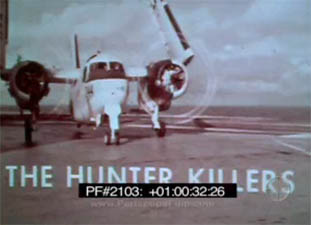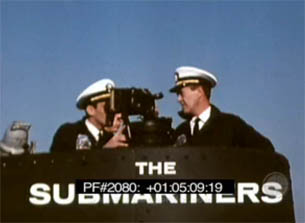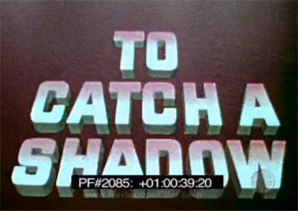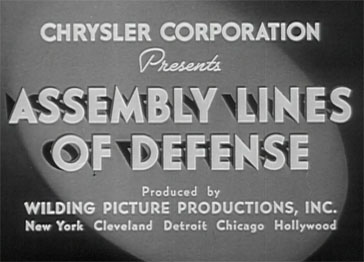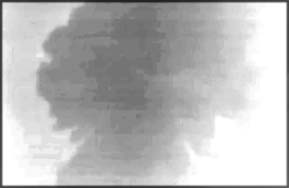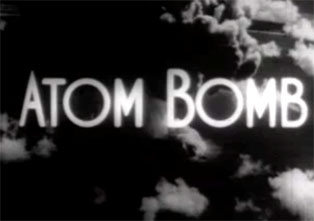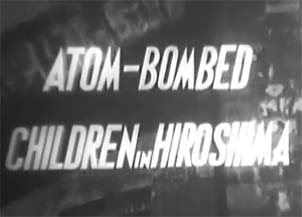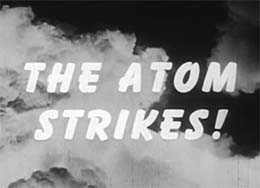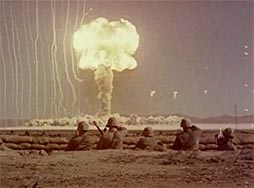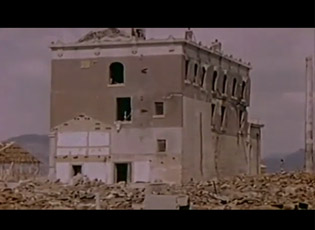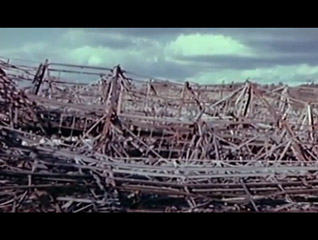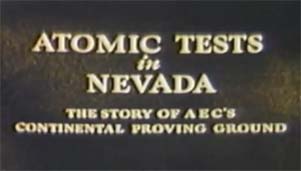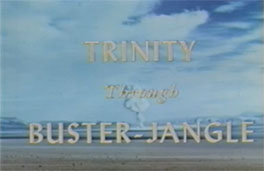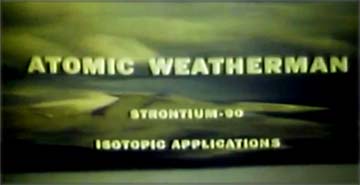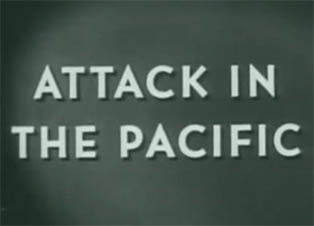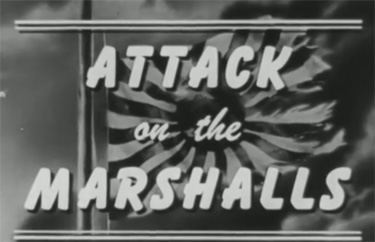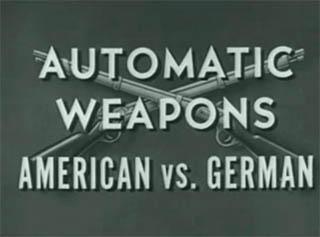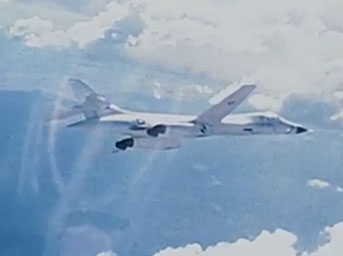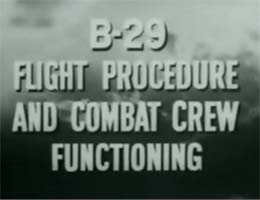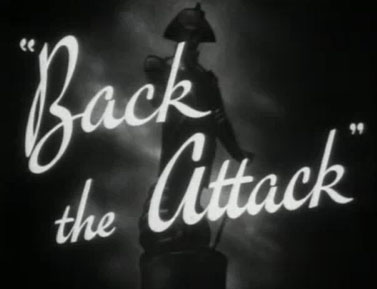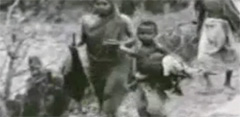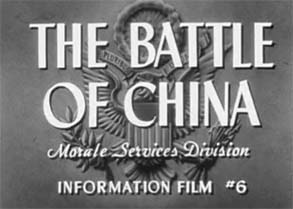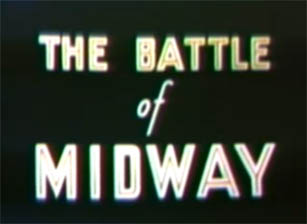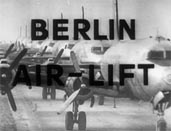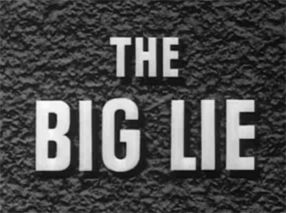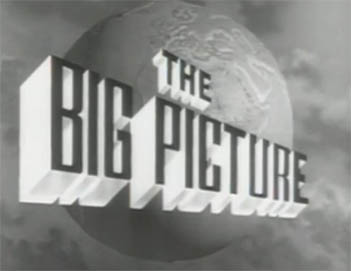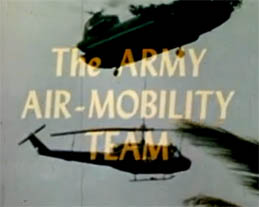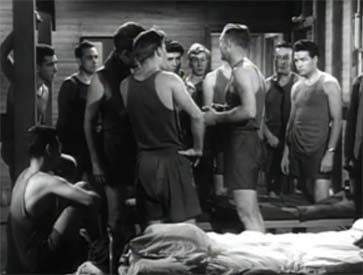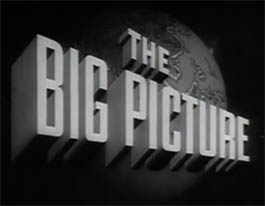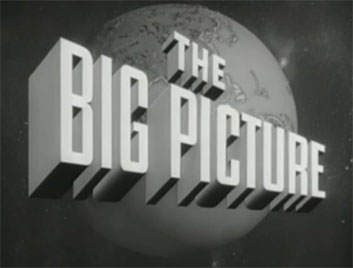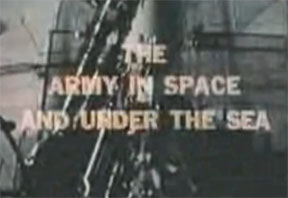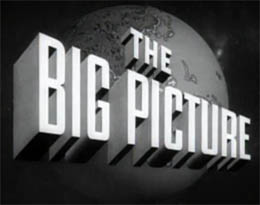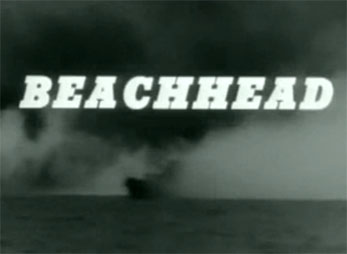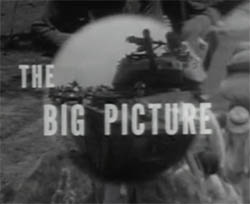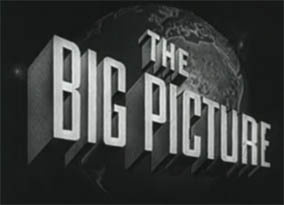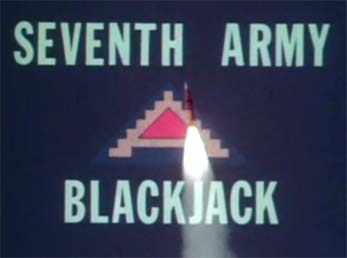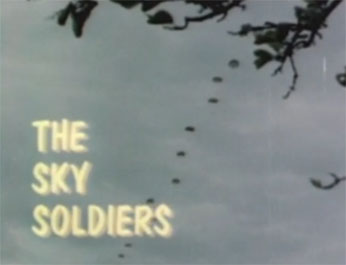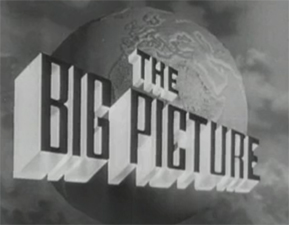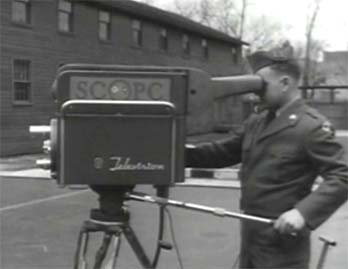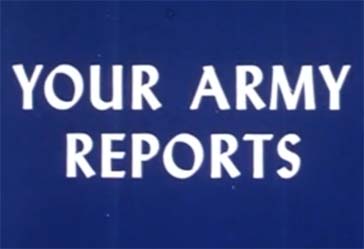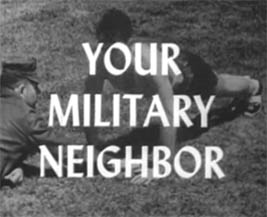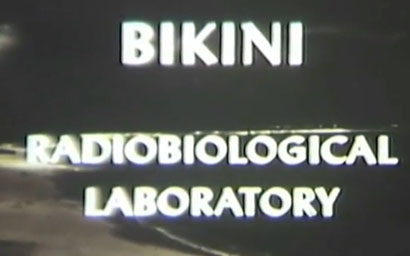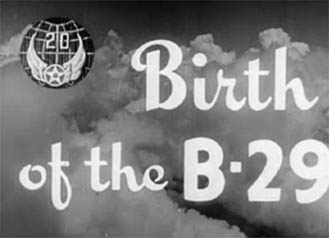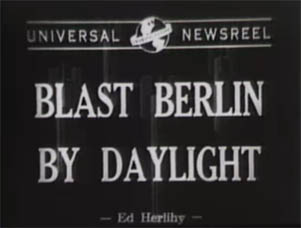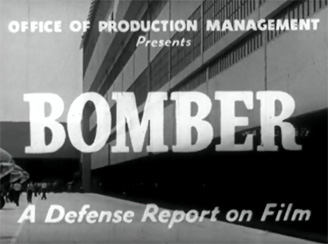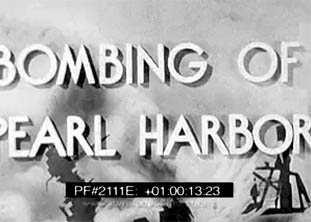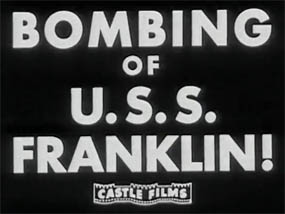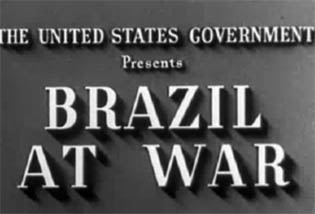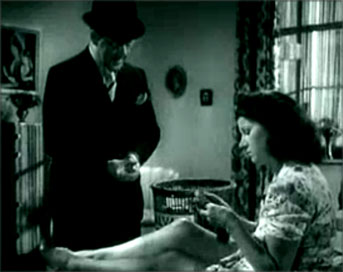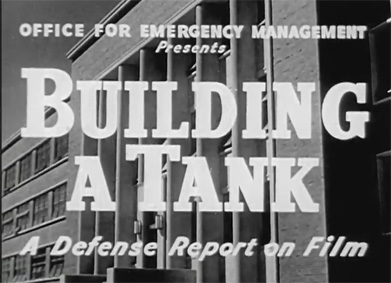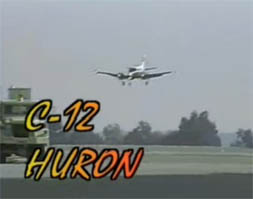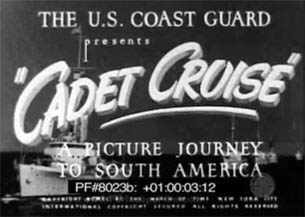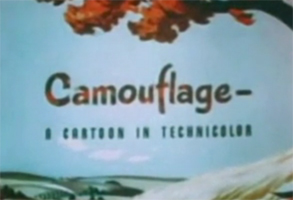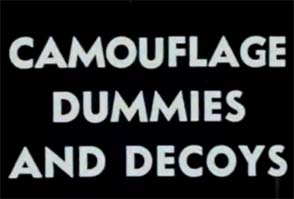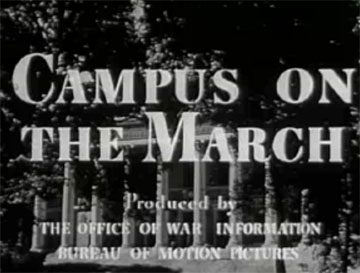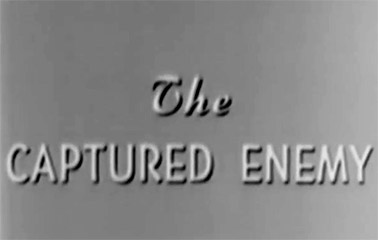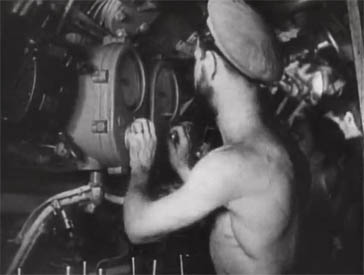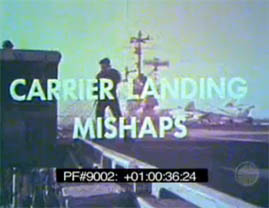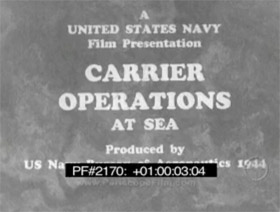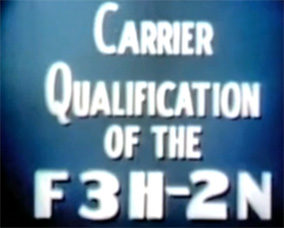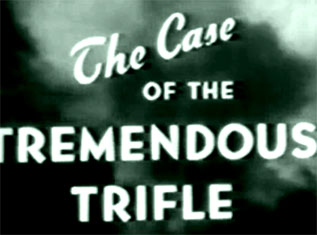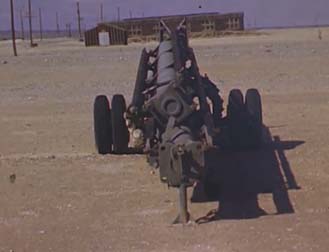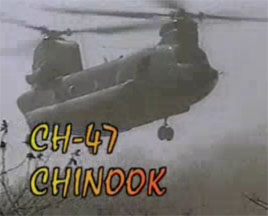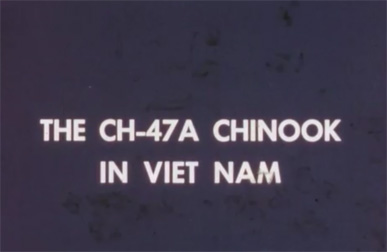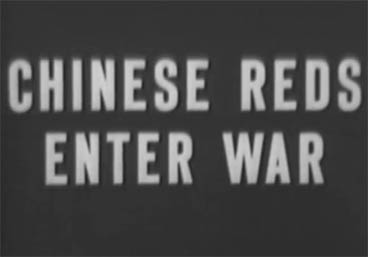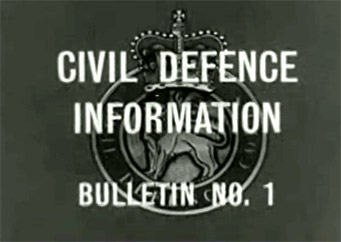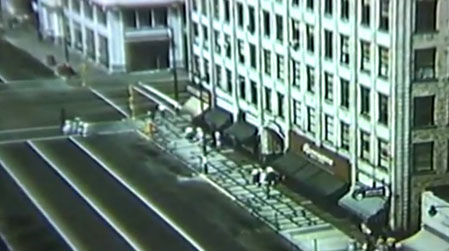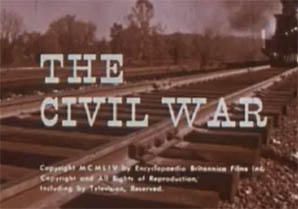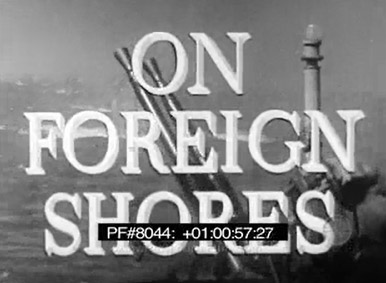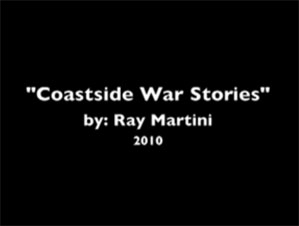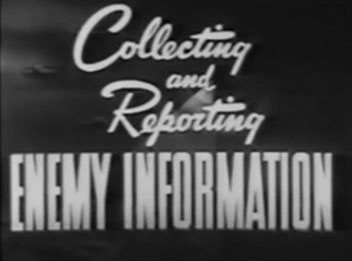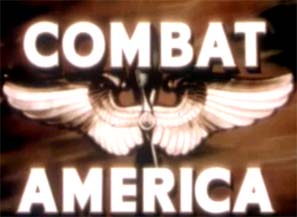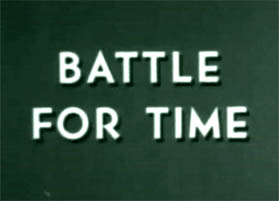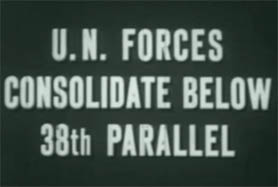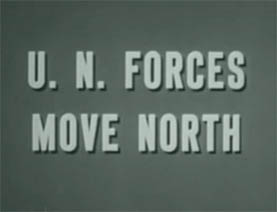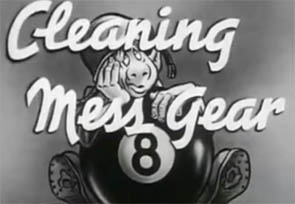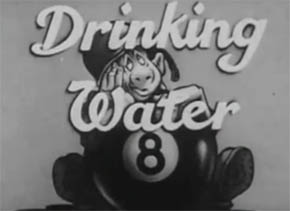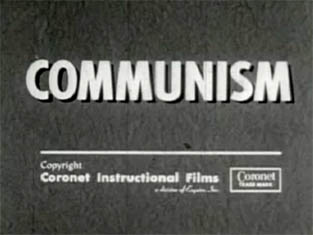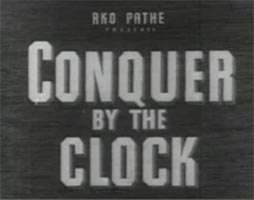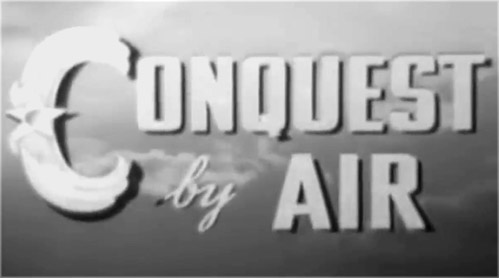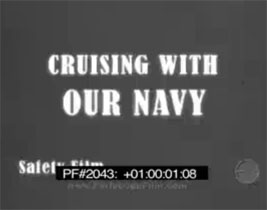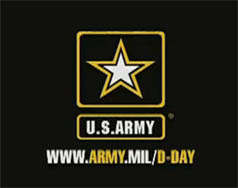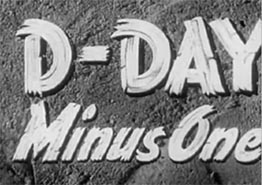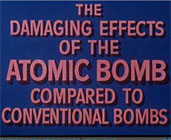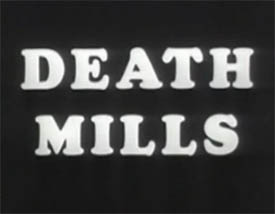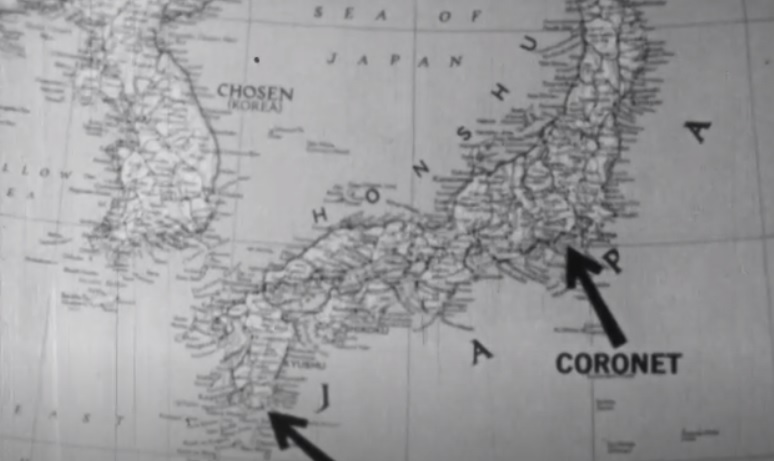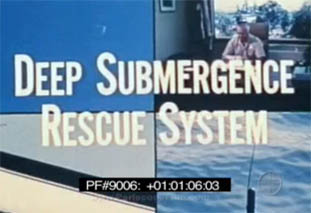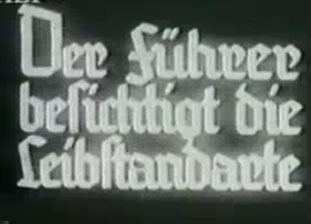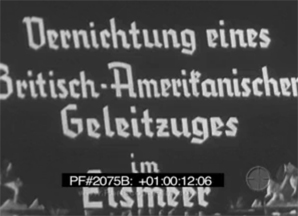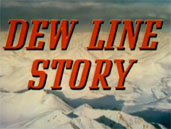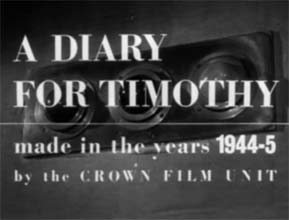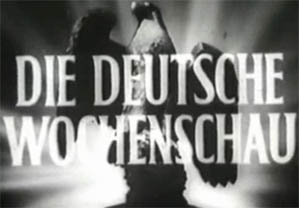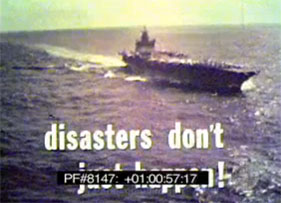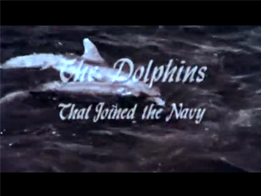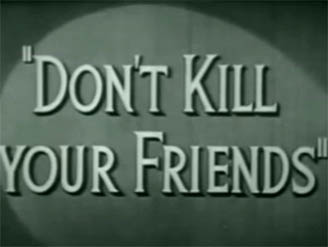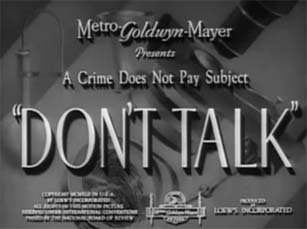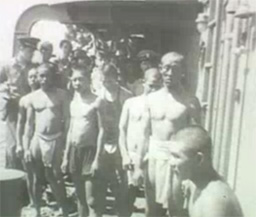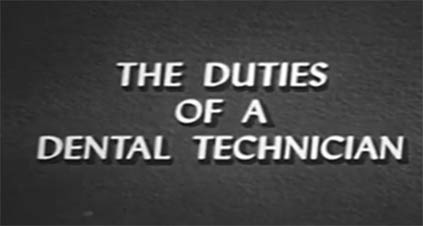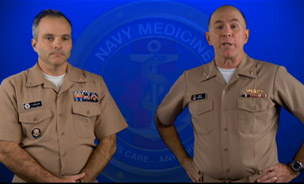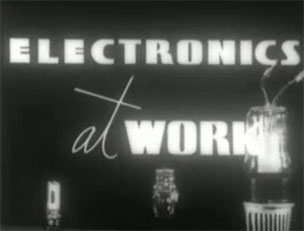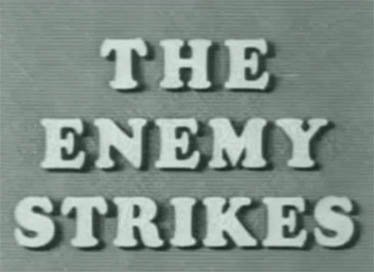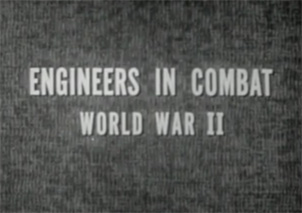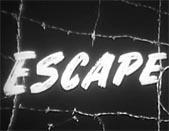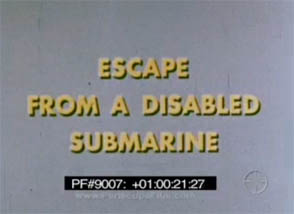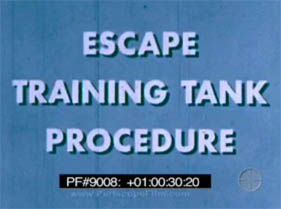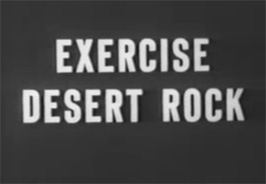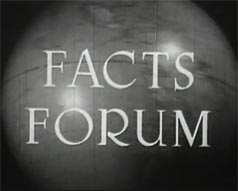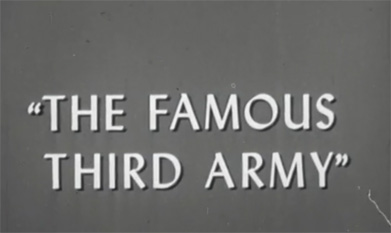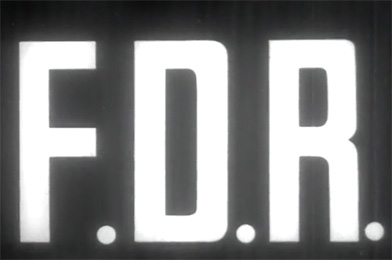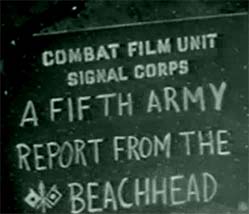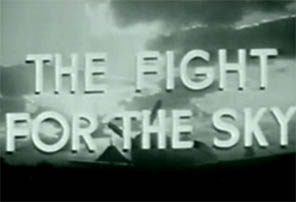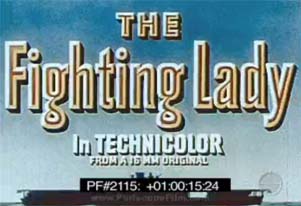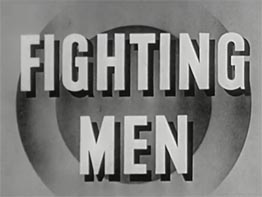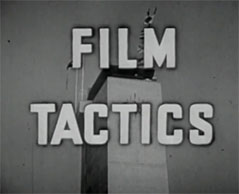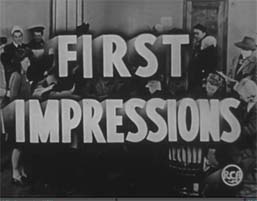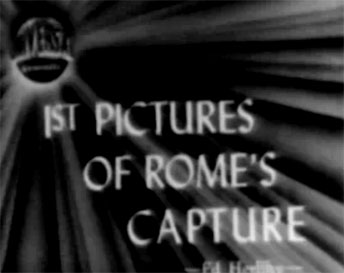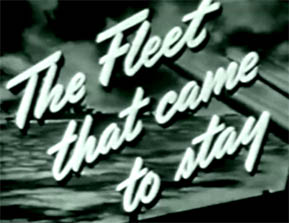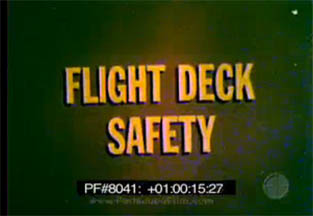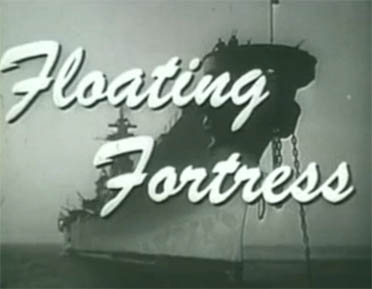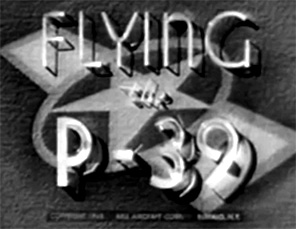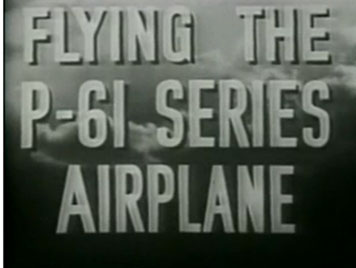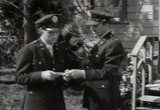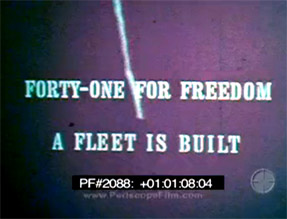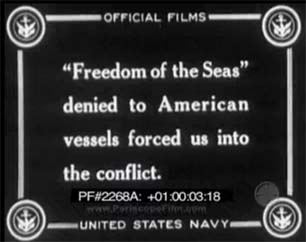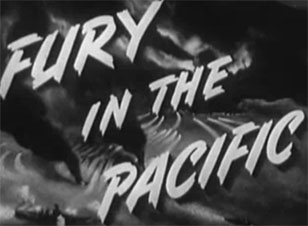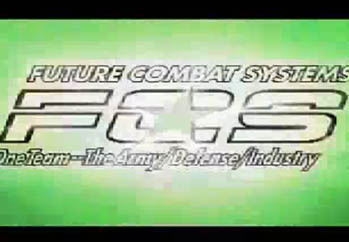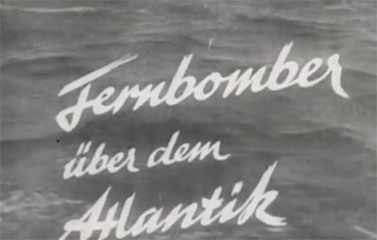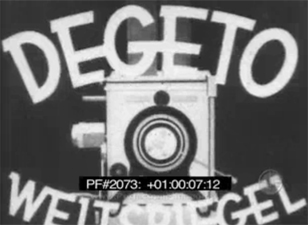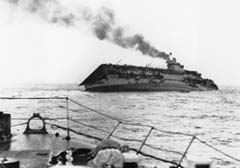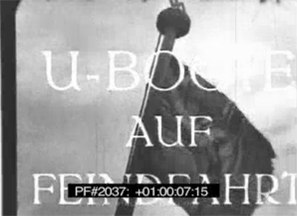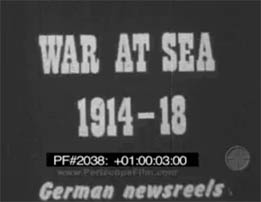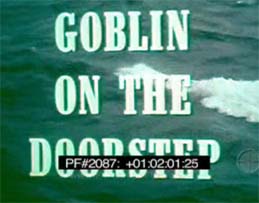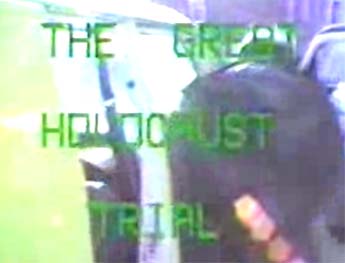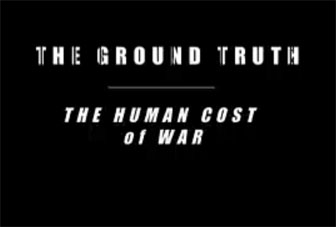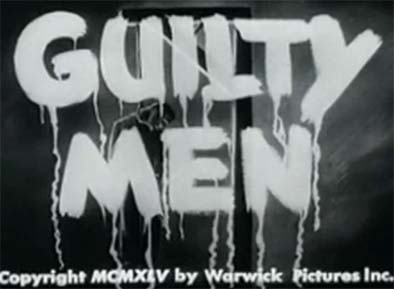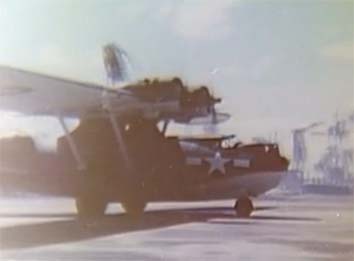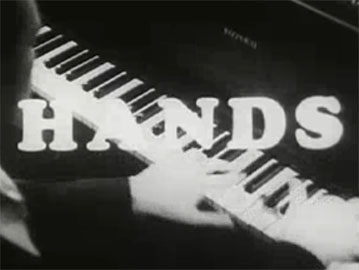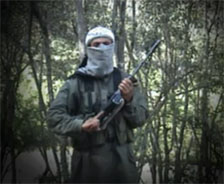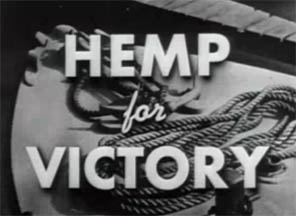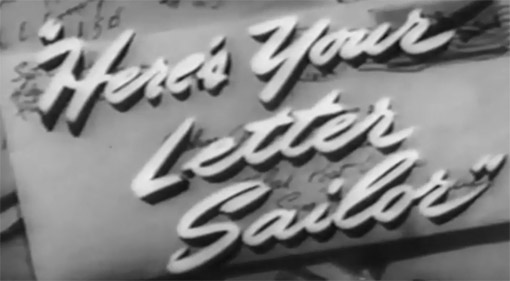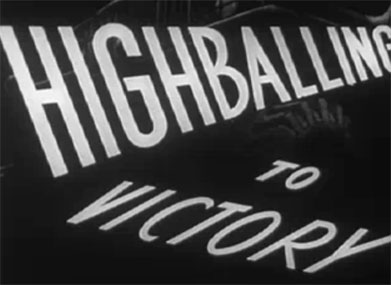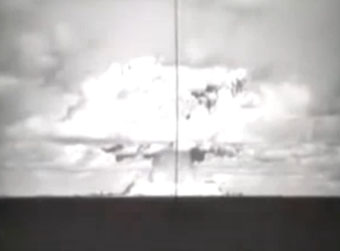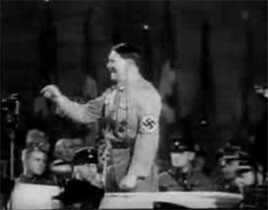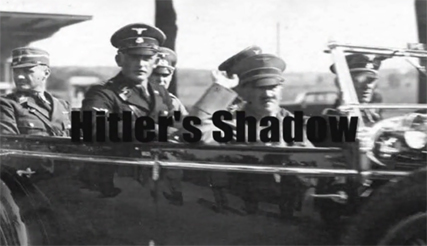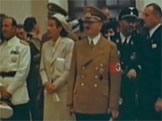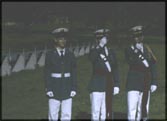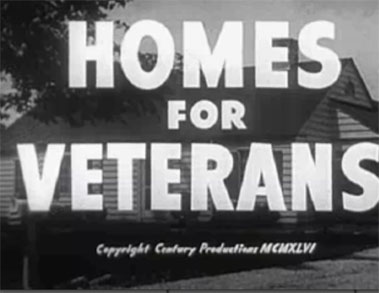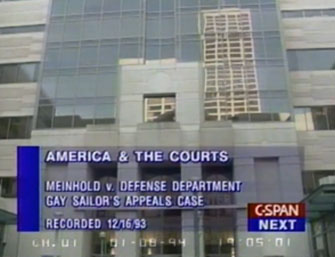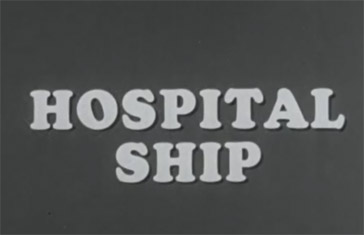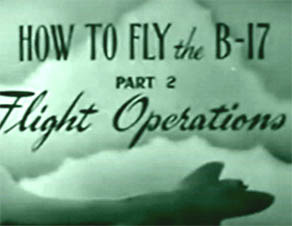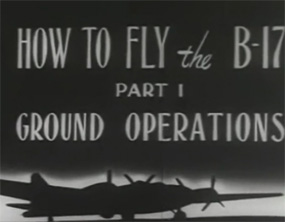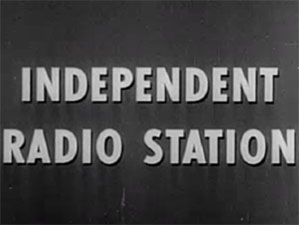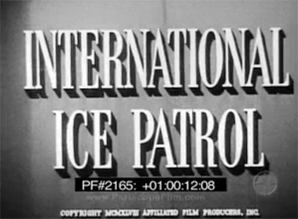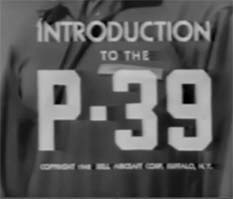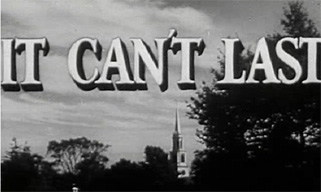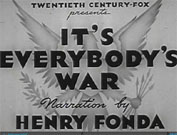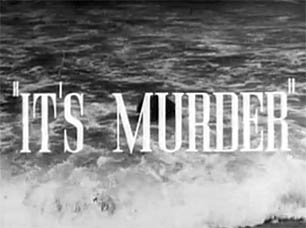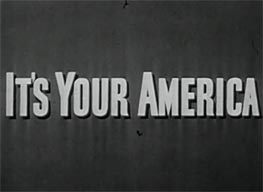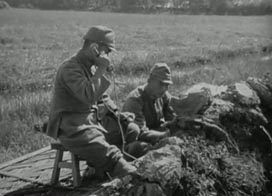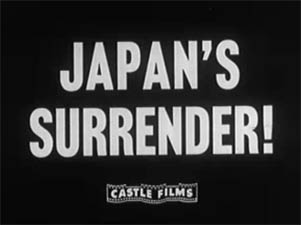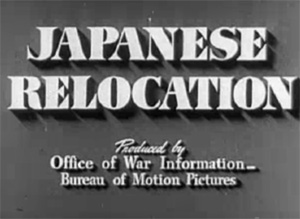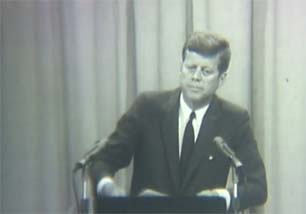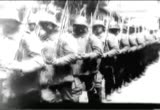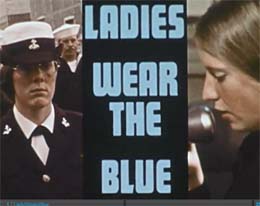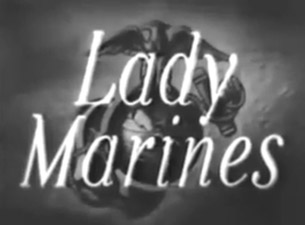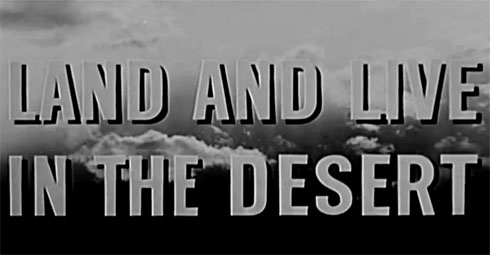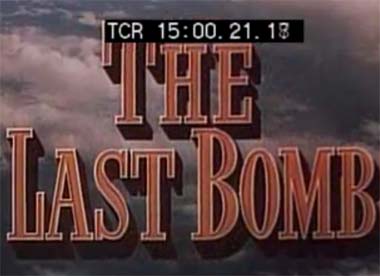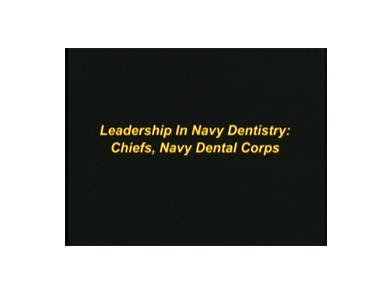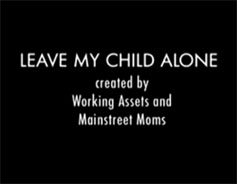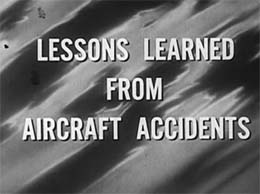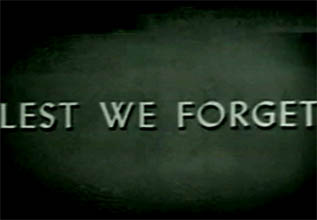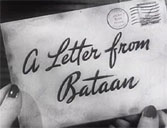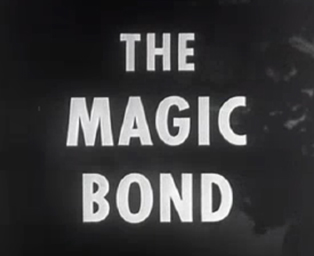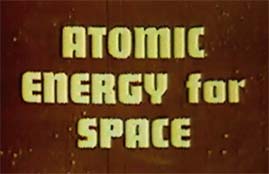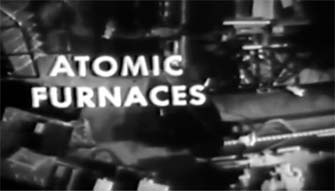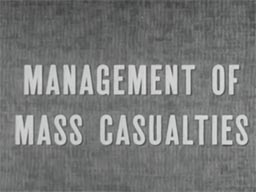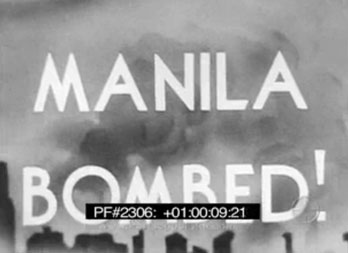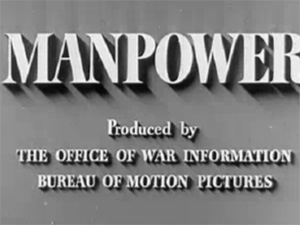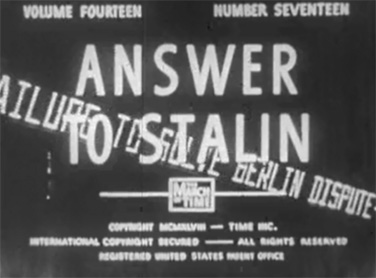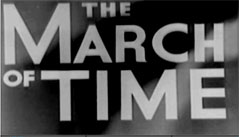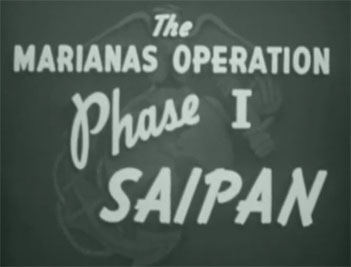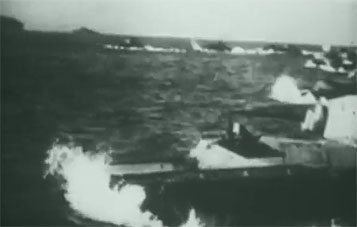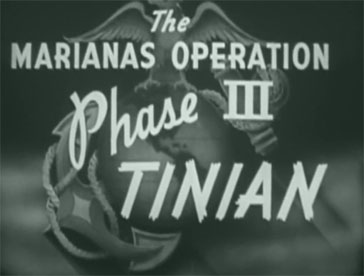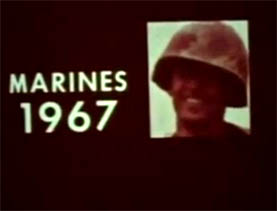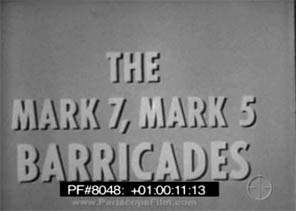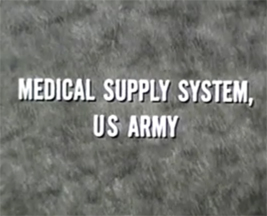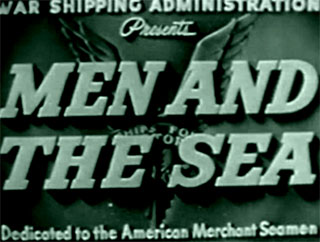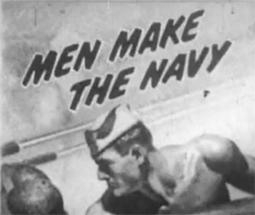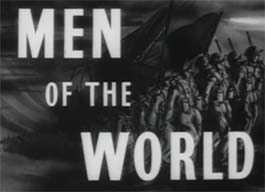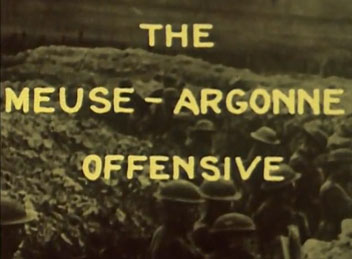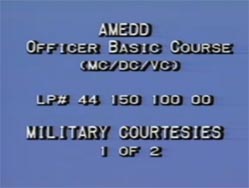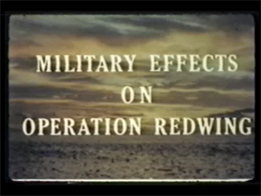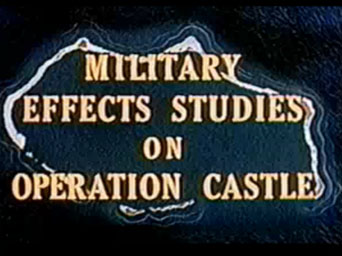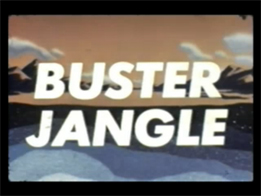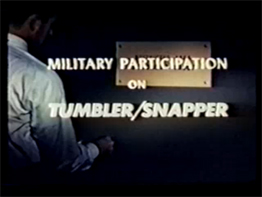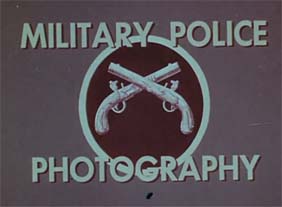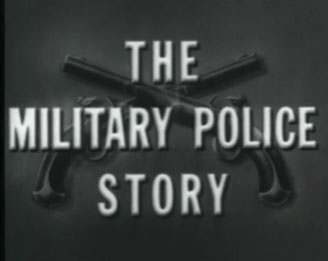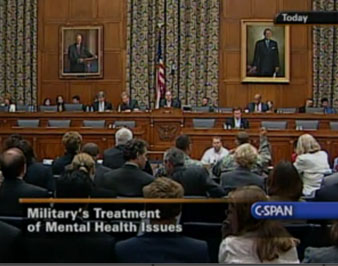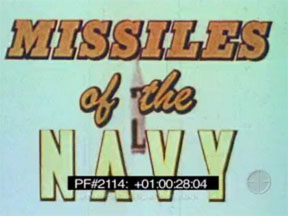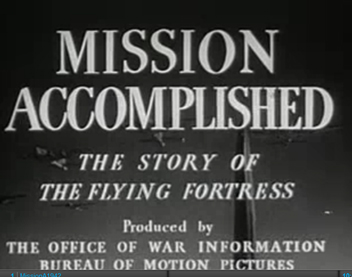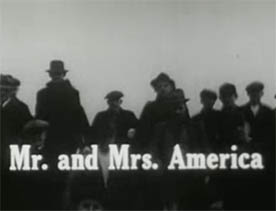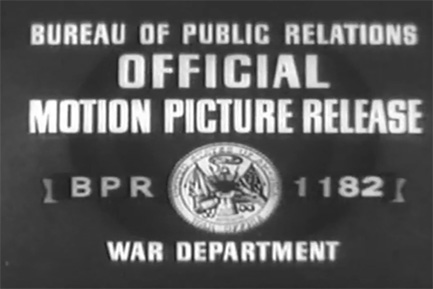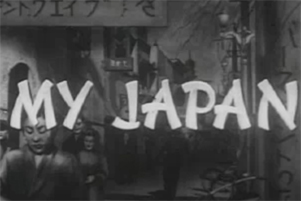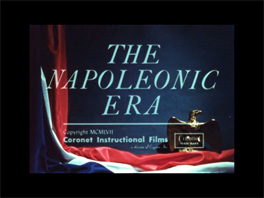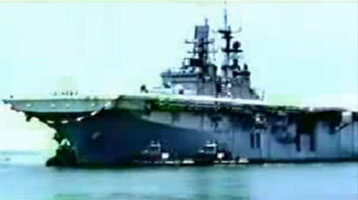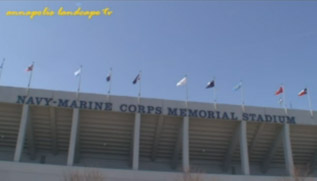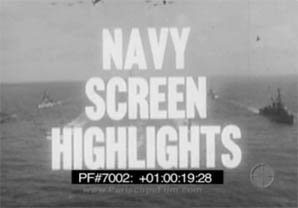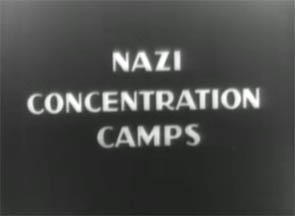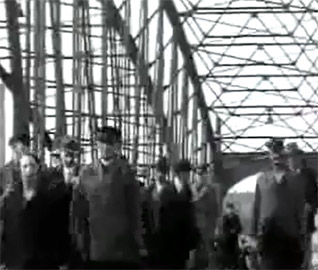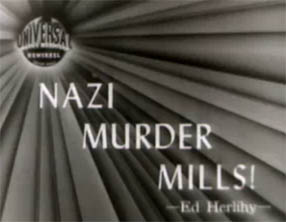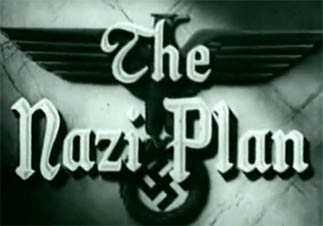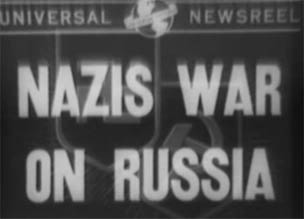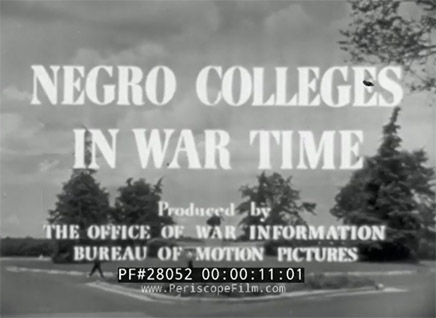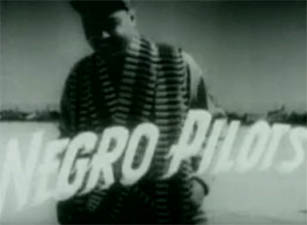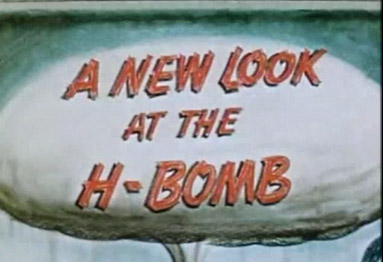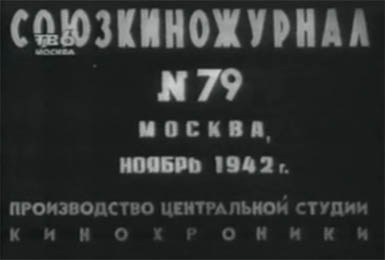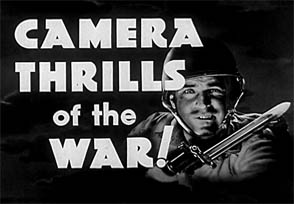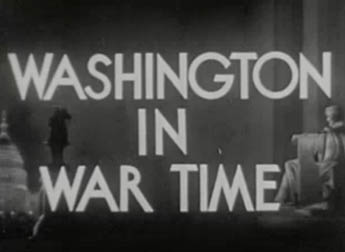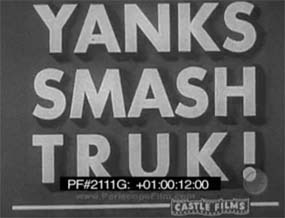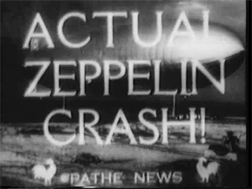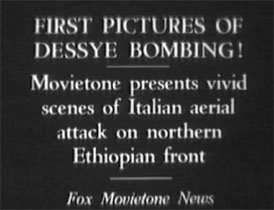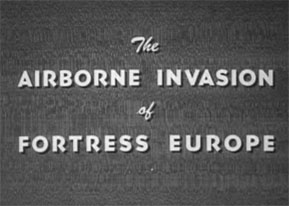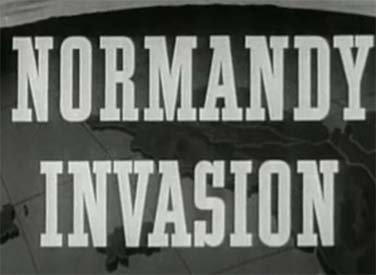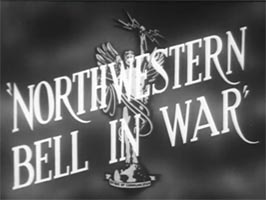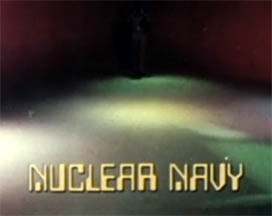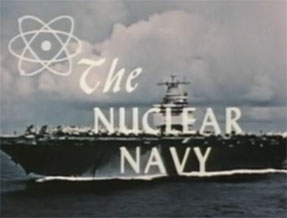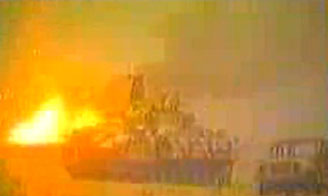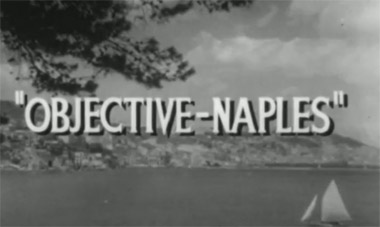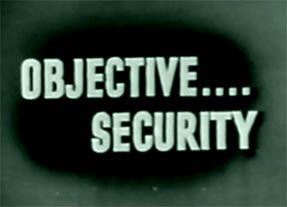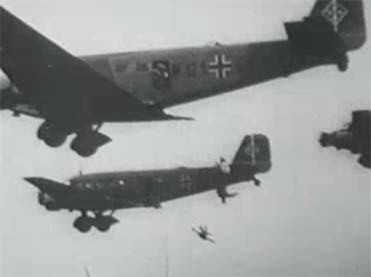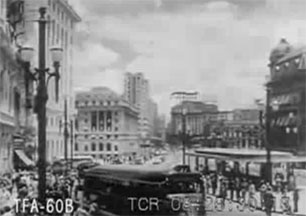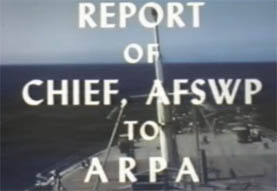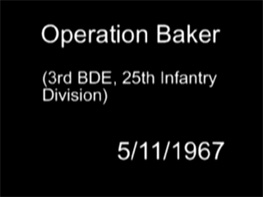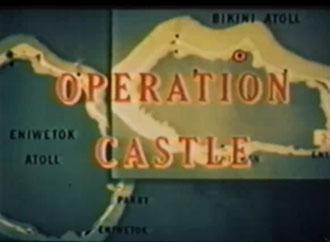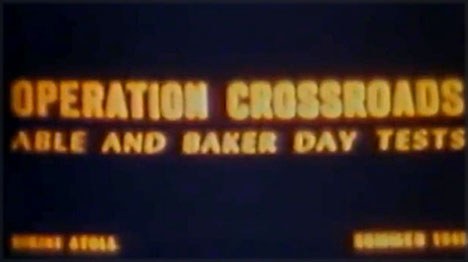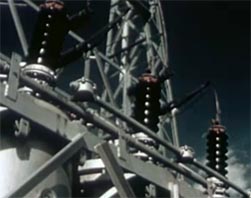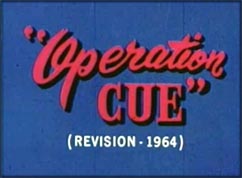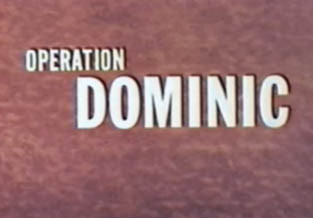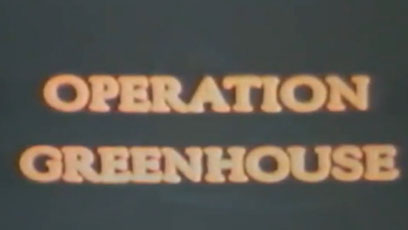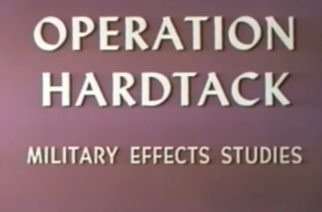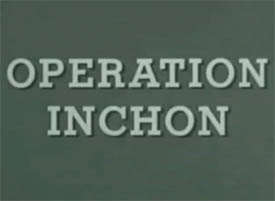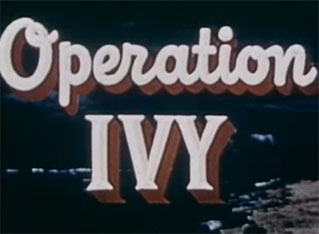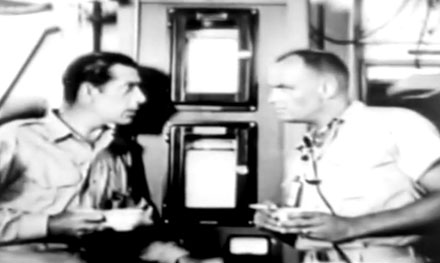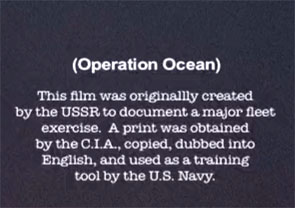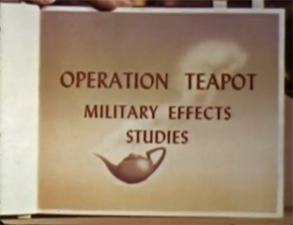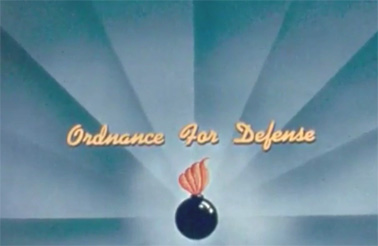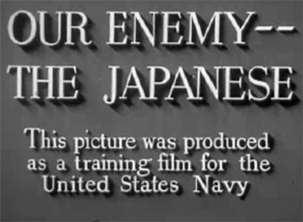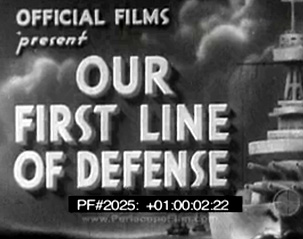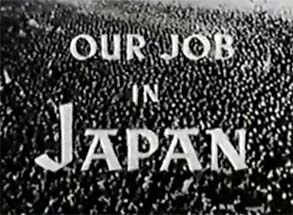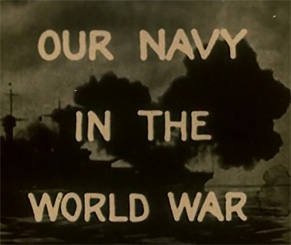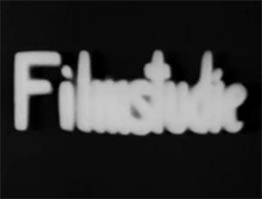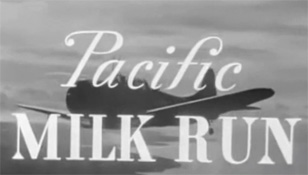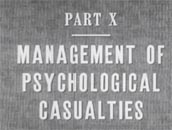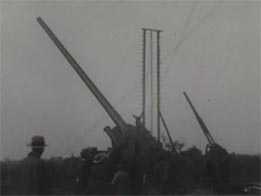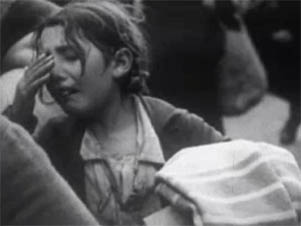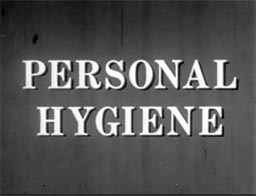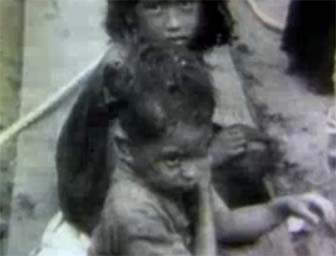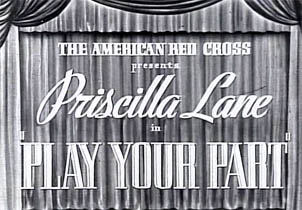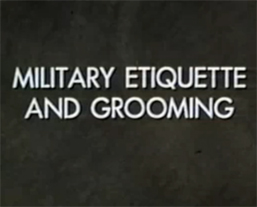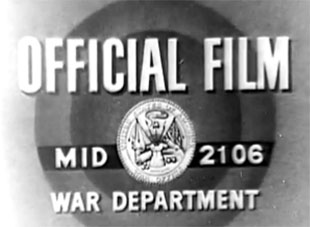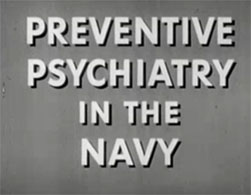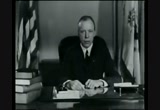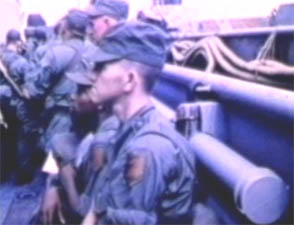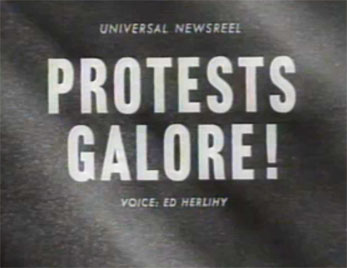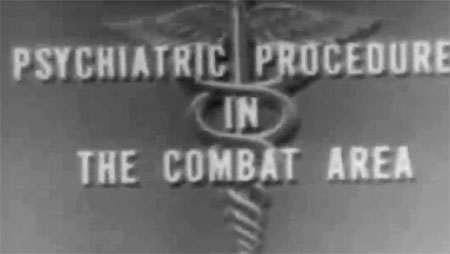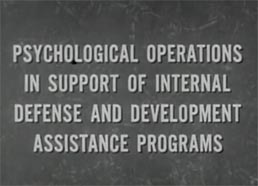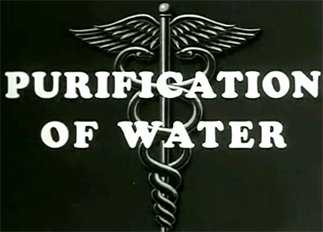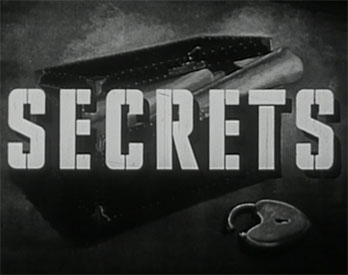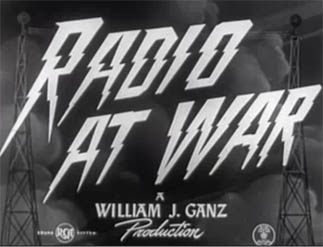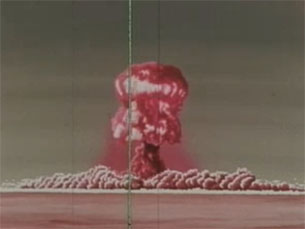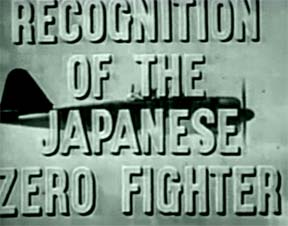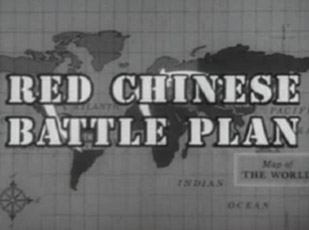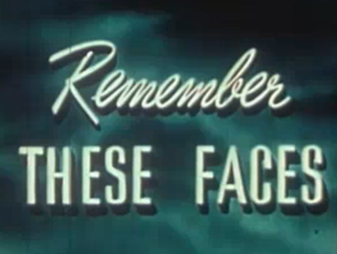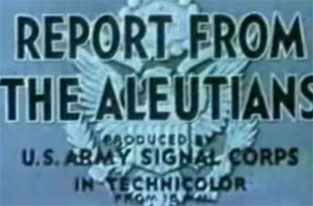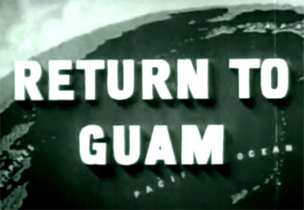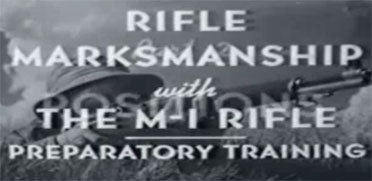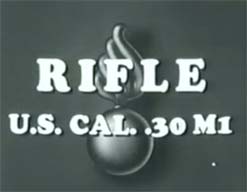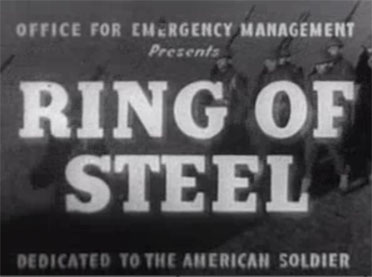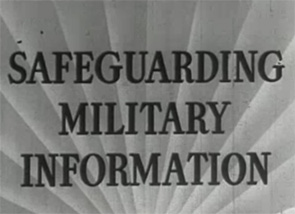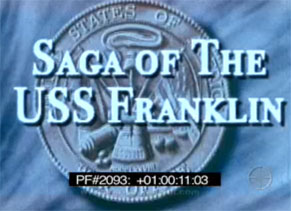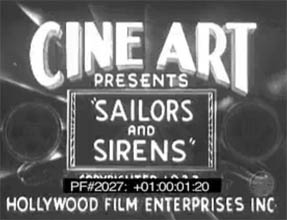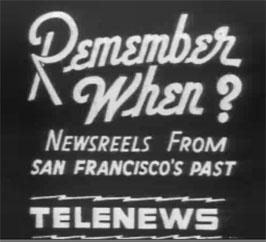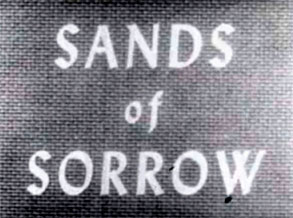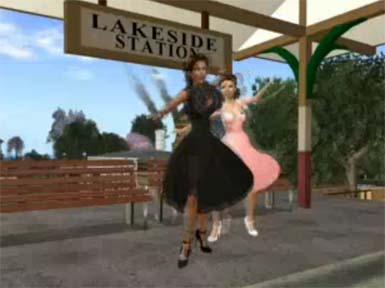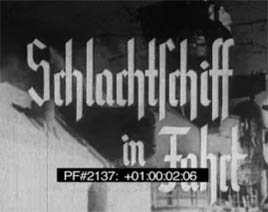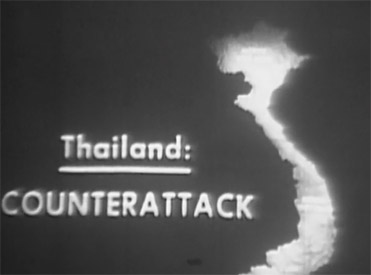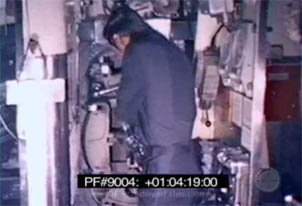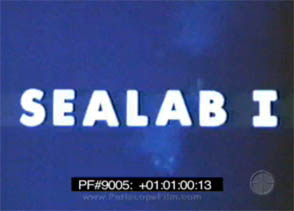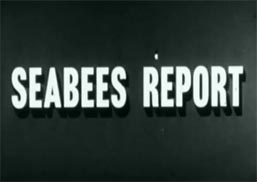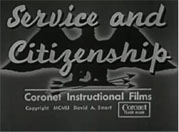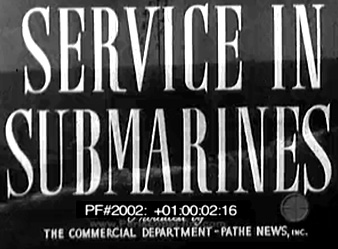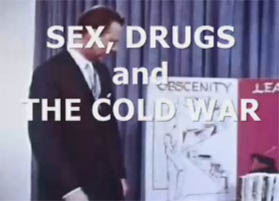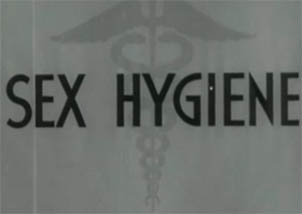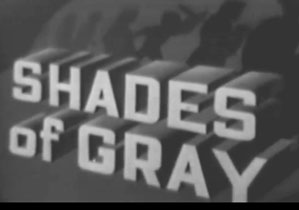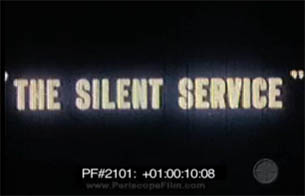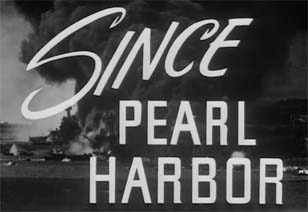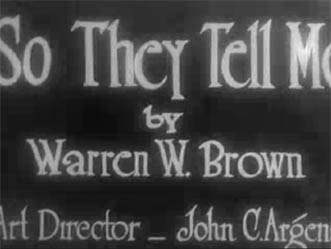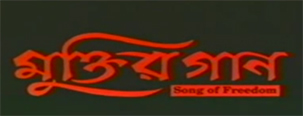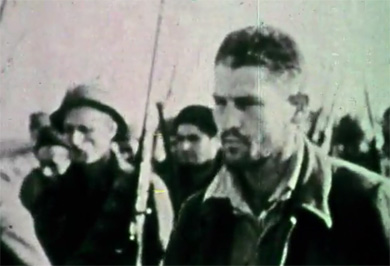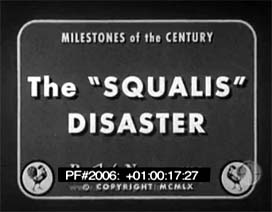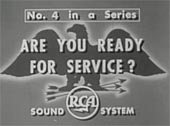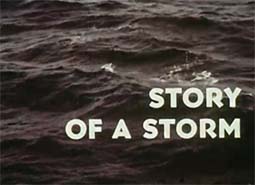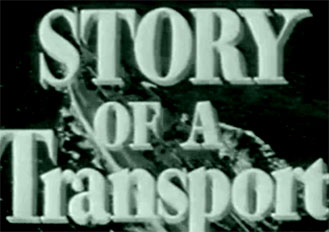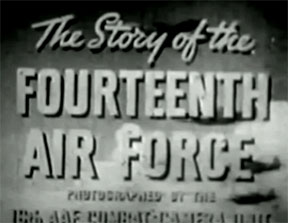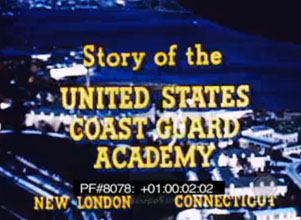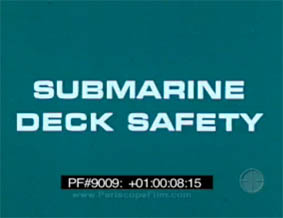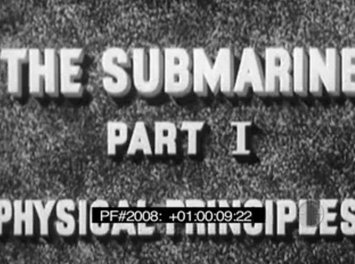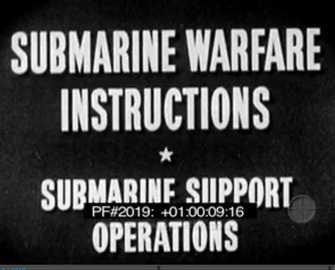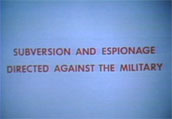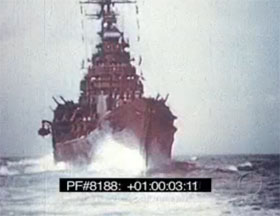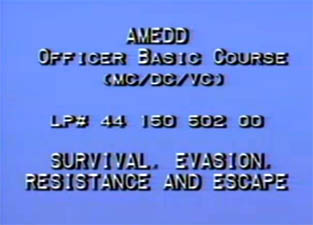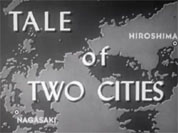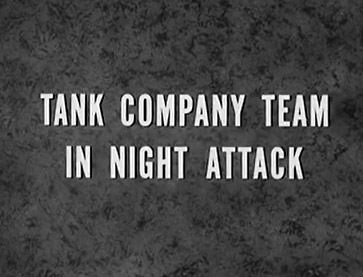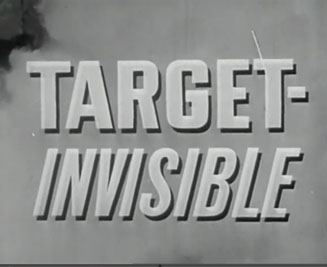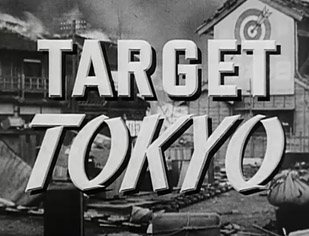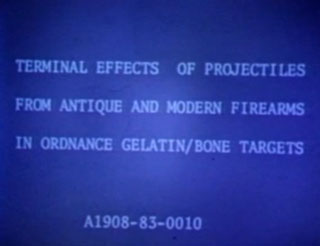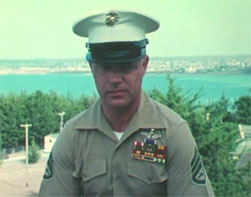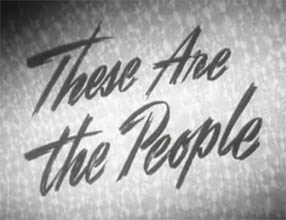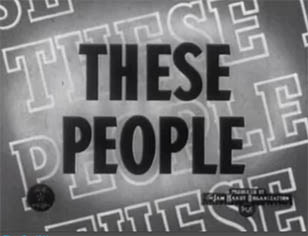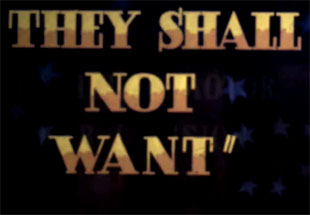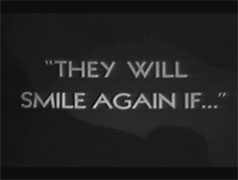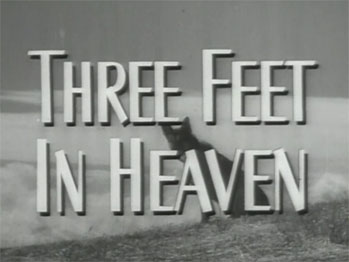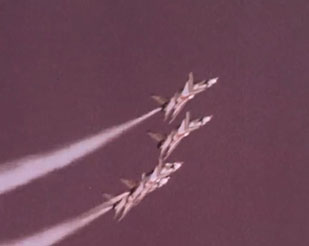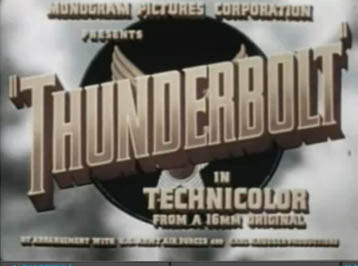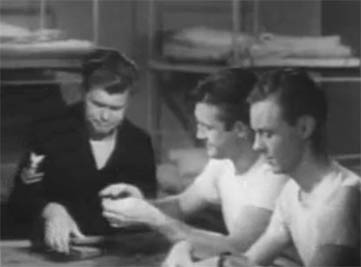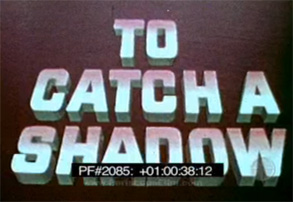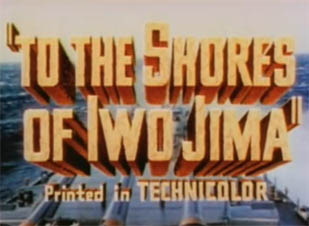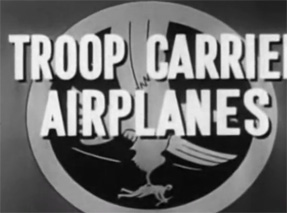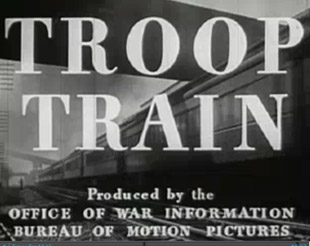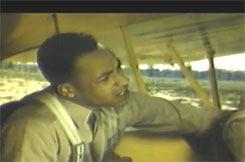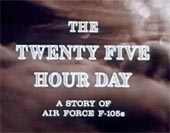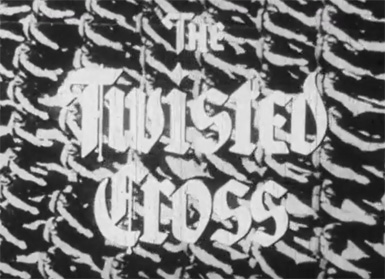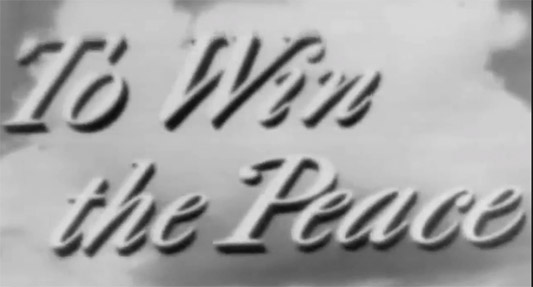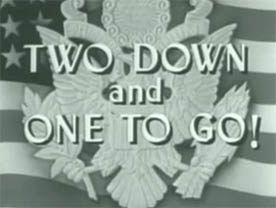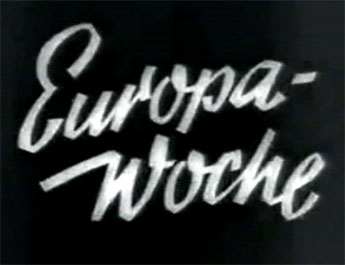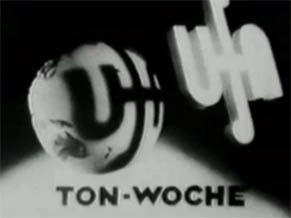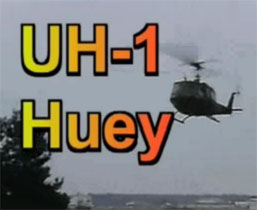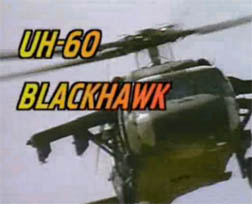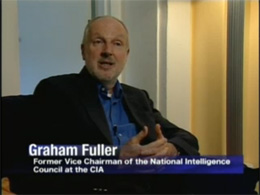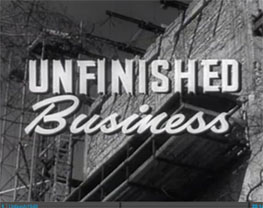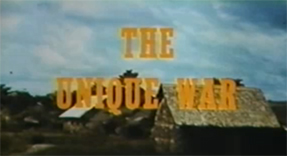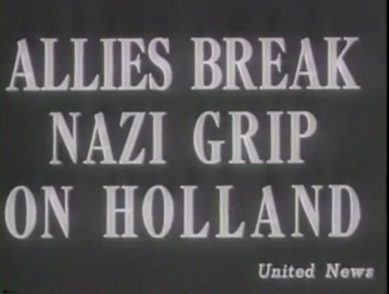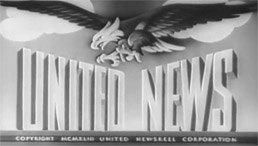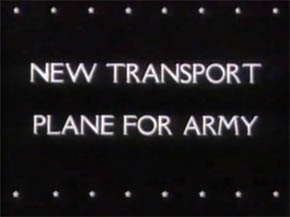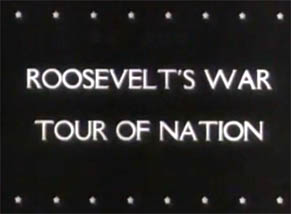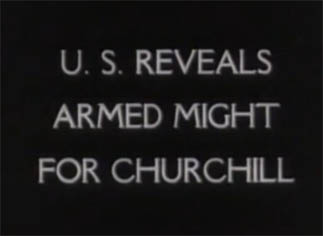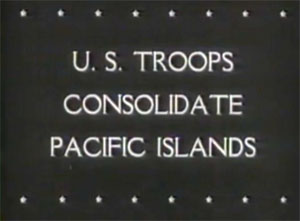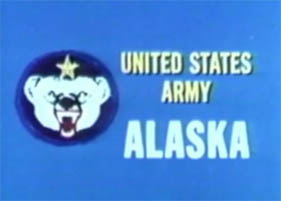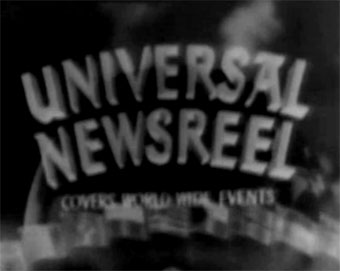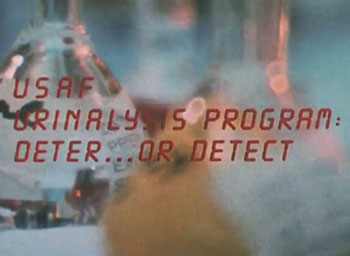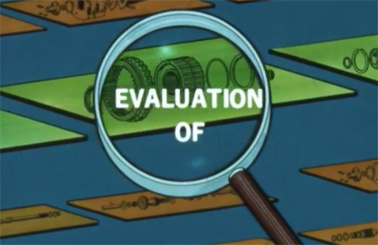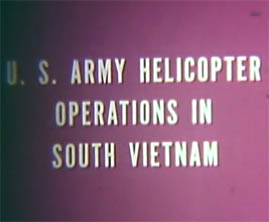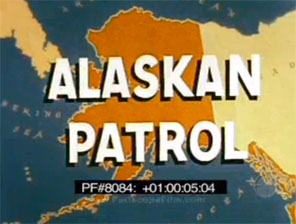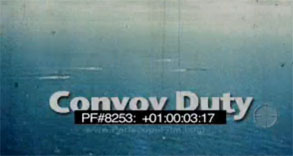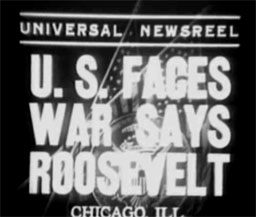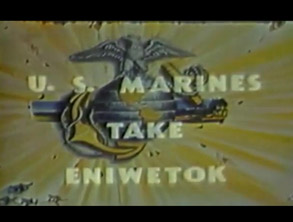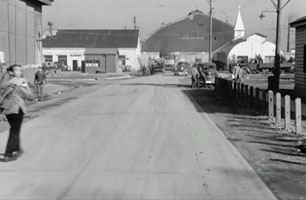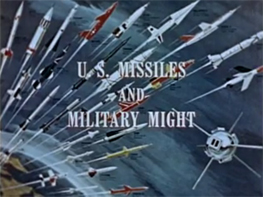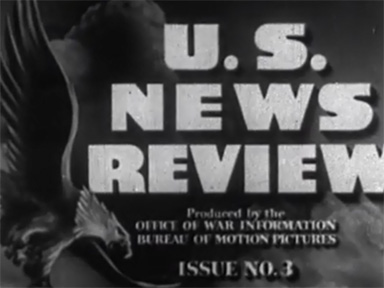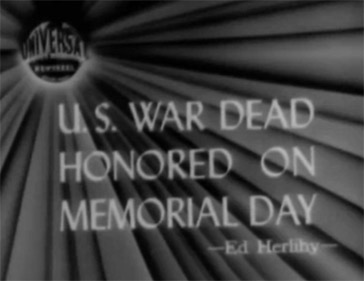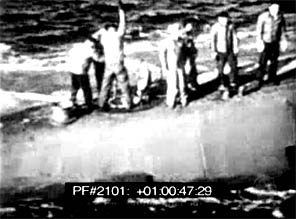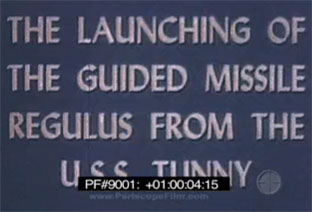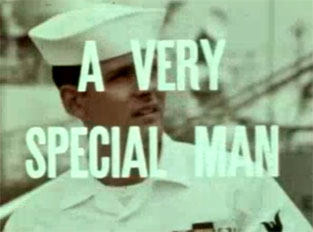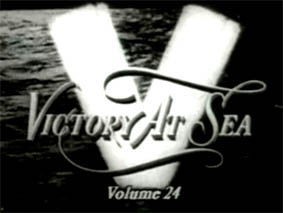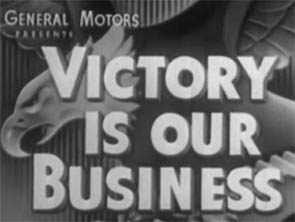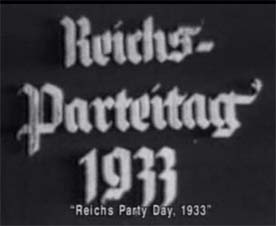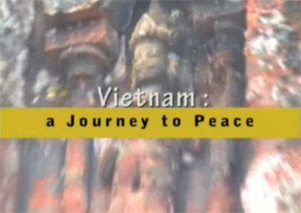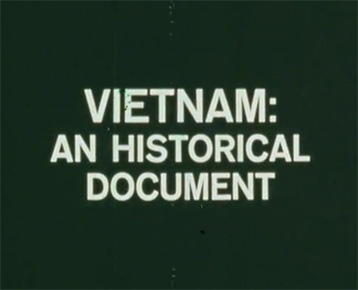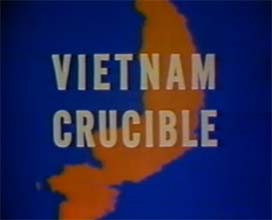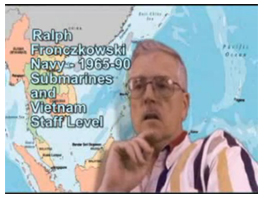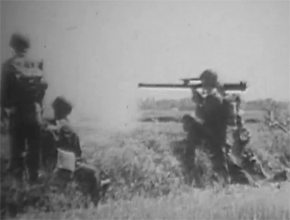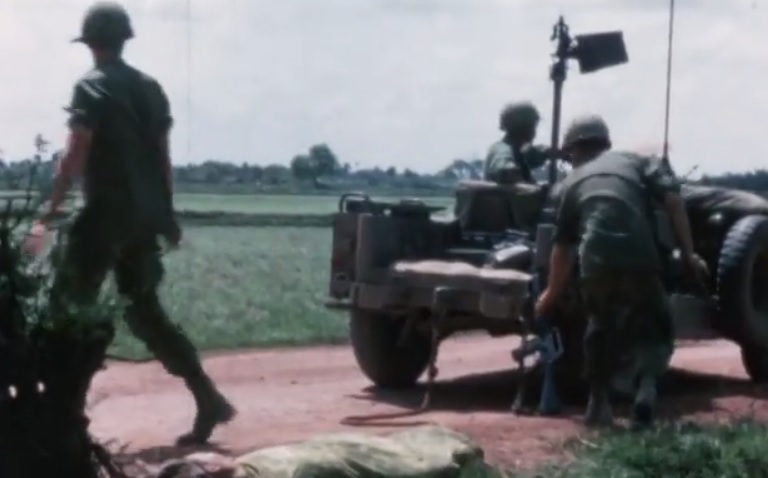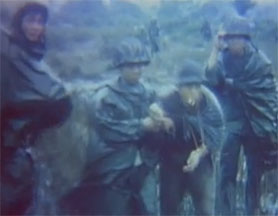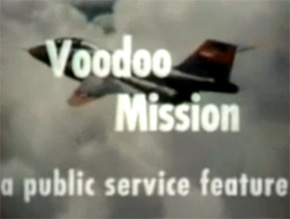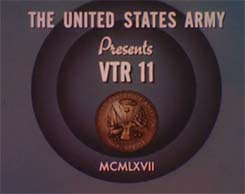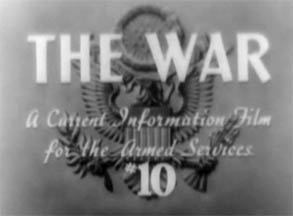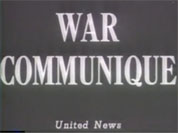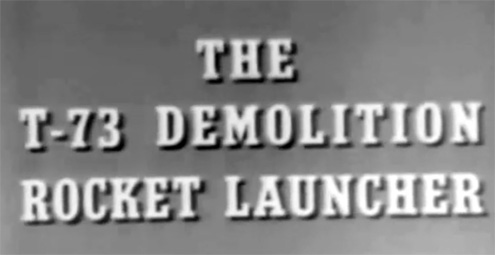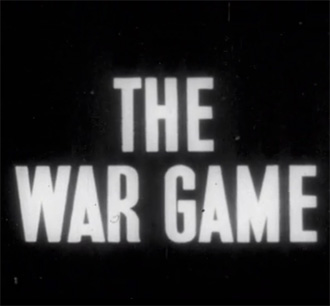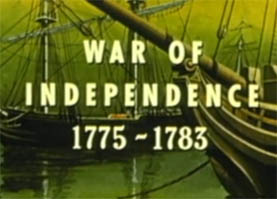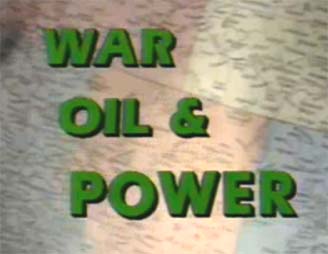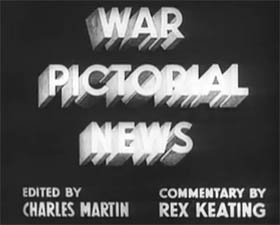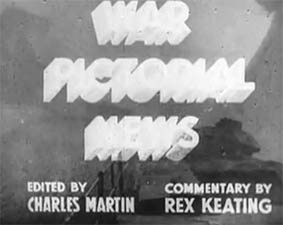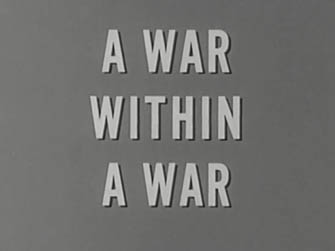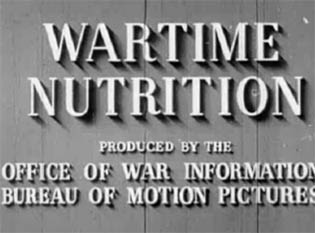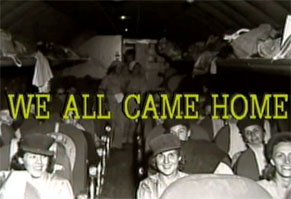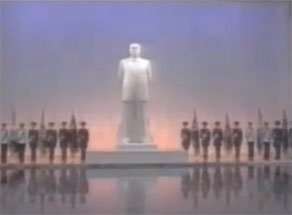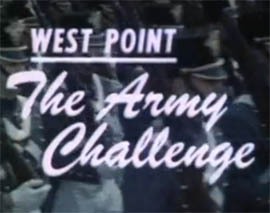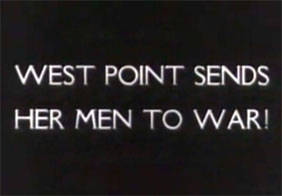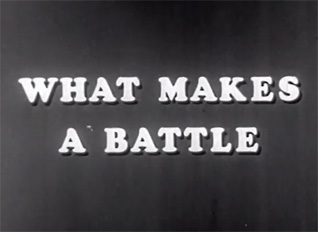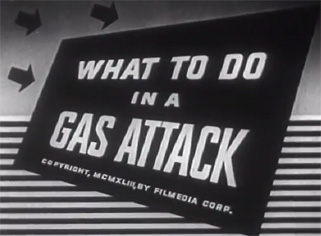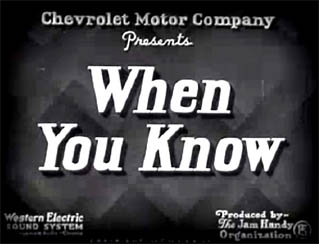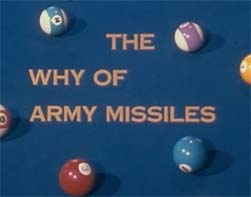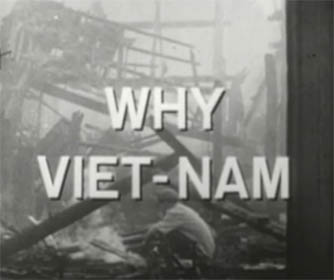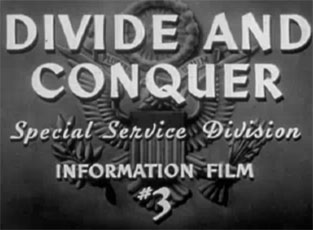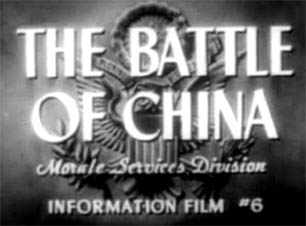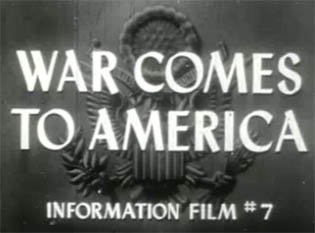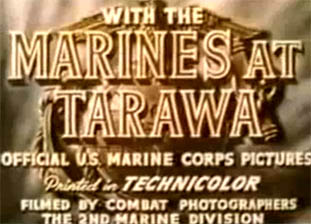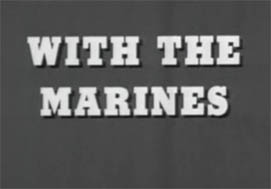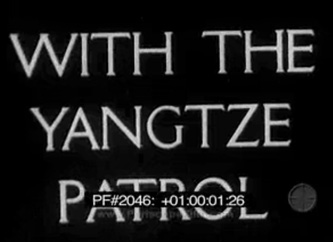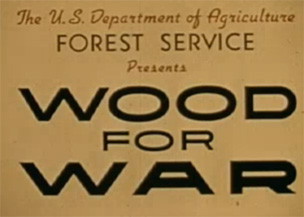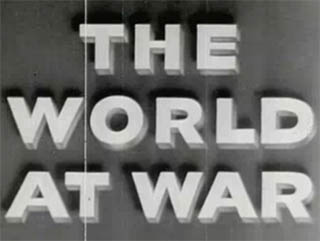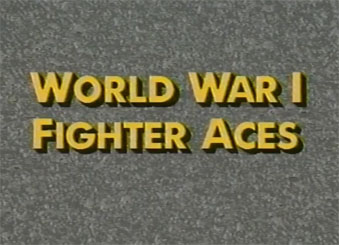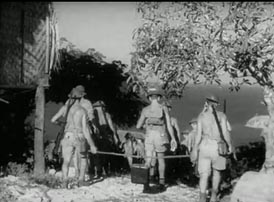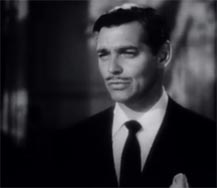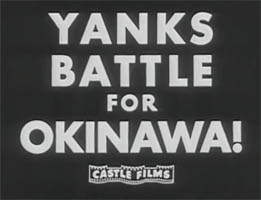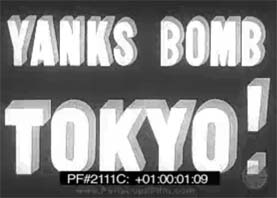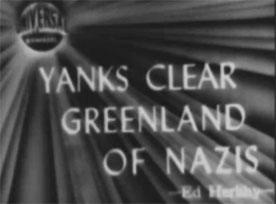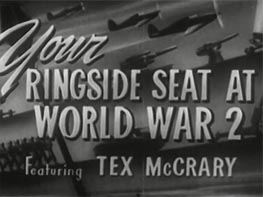|
|
The 6th Marine Division On Okinawa* (1945) |
This Academy Award nominated Kodachrome color documentary film tells the story of the 82 days fighting on the Island of Okinawa where the 6th Marine Division was assigned to the III Amphibious Corps.
|
|
|
7th Infantry Division* (1949) |
Follows the 7th Infantry Division from the Aleutian Islands to Seoul.
|
|
|
The 16mm Motion Picture Projector: Care And Maintenance* (1961) |
This is a narrated training film for military projectionists with the emphasis on the care and maintenance of the equipment.
|
|
|
The 16mm Motion Picture Projector: Operating Techniques* (1961) |
This is a narrated training film for military projectionists.
|
|
|
24's Get Back* (1944) |
This training film demonstrates specific techniques for landing B-24 Liberators that have sustained a wide variety of damage in differing conditions, including water landings.
|
|
|
The 280 mm Gun At The Nevada Proving Ground* (1953) |
This film shows the testing of the Mark 9 atomic artillery shell that was the Grable event, part of a much larger series of nuclear detonations under the umbrella of Operation UPSHOT-KNOTHOLE.
|
|
|
A-Bomb Blast Effects* (1959) |
This chilling film shows some awesome footage of soldiers performing tasks and watching the A-Bomb go off in the desert. They are not wearing much protection. Silent.
|
|
|
AAF Combat Camera Units Weekly Digest: 013144* (1944) |
AtoG Three R4Ds flying low over the water. AV Single airstrip showing parked planes on side. MCU R4Ds landing. MS Crowds of men on field that have turned out to see the planes. Silent.
|
|
|
AAF Report* (1944) |
General H.H. Arnold's story of how the United States Army Air Force in a period of two years emerged from the seventh to the first rate air power. Shows the latest methods of air warfare. Audio sync is a little off but still worth a watch.
|
|
|
AAF Special Delivery* (1946) |
Airplanes and missions of the U.S. Army Air Forces, emphasizing Operation Crossroads (the Bikini Island atomic bomb tests).
|
|
|
The Academy* (1938) |
This film shows the 4 yr USCGA Academy program and the various academy, sport and other opportunities. Seagoing activities aboard a modern cutter are shown, including gunnery practice.
|
|
|
Action At Anguar* (1945) |
Action at Anguar tells the story of the invasion and capture of Anguar Island by the US 81st Infantry Division in September 1944.
|
|
|
Admiral Dewey Newsreel* (1899) |
Transfer of a rare paper print of Admiral Dewey great White Fleet featuring the USS Olympia as it cruised through the Suez Canal and Gibraltar. Also featured are the USS New York, USS Chicago.
|
|
|
Adolf Hitler: Berlin* (1940) |
A collection of clips from various speeches by Adolf Hitler with English subtitles for the historic record. German.
|
|
|
Adolf Hitler: Wahlkampfrede In Eberswalde* (1932) |
1932 - Adolf Hitler - Wahlkampfrede in Eberswalde am 27. Juli 1932. German.
|
|
|
Afghanistan War* (2000) |
This film shows us many scenes of war and fighting in Afghanistan. It is narrated in Persian.
|
|
|
AH-64 Apache* (2004) |
Discusses the AH-64 Apache attack helicopter.
|
|
|
Air Army Invades Germany* (1945) |
When the entire Rhine front explodes into action the First Allied Airborne Army takes flight for the Westphalian plains. Other highlights include the unveiling of a gigantic 6 motor French flying boat.
|
|
|
Air Fleet Of The Sky* (1928) |
Pre World War II (WWII) of U.S. Navy battleships and aircraft carriers on manuevers. Features the USS Lexington, CV-2.
|
|
|
Air Force At Your Library* (2000s) |
This is a sampling of US Air Force materials held or accessed by the nation's Federal Depository Libraries set to the official Air Force Song.
|
|
|
Air Force Missle Test Center Footage* (1970s) |
This film shows us various shots of early rocket tests and some manned missions before there was a NASA. Silent.
|
|
|
Air Force News Review: Air Force 20* (1967) |
Traces the history of US Air power from its official beginning in 1907. Highlights the early days of aviation, the overwhelming might of airpower in WWII and the Korean War.
|
|
|
Air Force Now 080* (1976) |
This film explores the meaning of America's 200th birthday. It reminds us of the struggle, hardship and difficulties which our country has survived and the sacrifices of people which overcame them.
|
|
|
Air Force Now 200* (1986) |
This is a narrated special feature about the USAF Thunderbirds and their top notch maintenance team stationed at Nellis AFB NV. They thrill audiences worldwide with their high-powered flying.
|
|
|
Air Force Now: The Uncommon Jones* (1970s) |
This film gives us a profile of David C Jones who was the head of the US Air Force.
|
|
|
Air Force Review* (1950) |
This Review showing the new air planes of the U.S. Air Force in 1950. Although defined as typical American Design you can see the designs are based mainly on German wartime design concepts and ideas.
|
|
|
The Air Force Story: Cold War* (1953) |
Russia's attempt to blockade West Berlin futile; largest peacetime airlift by western powers; and success of B-36, the first intercontinental bomber.
|
|
|
The Air Force Story: A New Air Force* (1953) |
Signing of United Nations Charter; big cut in air force's wartime strength; nonstop flight of superfortress pacusan to Egypt; slow conversion to jets; autonomy for the Air Force; and debut of F-86.
|
|
|
Air Force Tactical Firepower* (1963) |
Flashbacks record gain in tactical air power since World War I. Gun camera footage demonstrates effectiveness of flexible and accurate firepower to cut hostile supply lines, destory enemy positions, and support friendly forces.
|
|
|
Airpower At Khe Sanh* (1968) |
The besieged Marine fire base was supported by Operation Niagara in early 1968, which supplied 24,000 tactical sorties and 2,700 B-52 sorties. Airpower dropped over 110,000 tons of bombs on the enemy over a two-month period.
|
|
|
All Out For Victory* (1943) |
Contributions of handicapped and disabled workers to World War II industrial production.
|
|
|
All Together* (1970) |
Lou Rawls plays a naval recruiter trying to lure the young black men and women who are tired of the limited work opportunities and discrimination in the civilian workplace.
|
|
|
Allies Sign Control Law For Germany* (1945) |
The Allied Control Commission for the conduct of affairs in civil Germany is brought into being by the military signatories for the four powers who will administer the quadruple occupation of Germany.
|
|
|
America Gets Involved In WWII* (1945) |
The events leading up to WWII.
|
|
|
America Goes Over - Pt 1* (1918) |
Government-produced historical record of major World War I battles. Silent.
|
|
|
America Goes Over - Pt 2* (1918) |
Government-produced historical record of major World War I battles. Silent.
|
|
|
America Goes Over - Pt 3* (1918) |
Government-produced historical record of major World War I battles. Silent.
|
|
|
America Goes Over - Pt 4* (1918) |
Government-produced historical record of major World War I battles. Silent.
|
|
|
America Goes Over - Pt 5* (1918) |
Government-produced historical record of major World War I battles. Silent.
|
|
|
The American Navy In Vietnam* (1967) |
A comprehensive review of the naval mission in Vietnam, 1967. Bombing and missile strikes, a Mekong Delta River assault landing, civic action by navy seabees and doctors and historical footage depicting the growth of United States involvement.
|
|
|
American Ninth Army: Aachen To The Roer River* (1946) |
Shows rubbled houses, rail centers, and electric plants in Aachen, Ger. Allied Military Government agents distribute food and supervise crews clearing debris. Refugees return to the city.
|
|
|
The American Revolution: 1776* (1990s) |
This epic production tells the stories of the men and events that shaped the birth of our nation.
|
|
|
The American Soldier In Combat* (1959) |
This Army information Film follows the US Serviceman from the American Revolutionary War to Korea.
|
|
|
Angel In Overalls* (1944) |
This World War II-era film tells the story of the worker back home in the States, who ran the factories to make the Lockheed P-38.
|
|
|
The Angled Deck Carrier* (1955) |
The USS Antietam aircraft carrier was the first that had an angled deck which let aircraft take off while others were landing.This film was made to show naval aviators and deck crew the new feature.
|
|
|
An Answer Pt 1* (1962) |
John F. Kennedy and other dignitaries review the second fleet and second marine division in action. There are excellent views of combat aircraft, battleships, carriers, sailors, and marines.
|
|
|
An Answer Pt 2* (1962) |
John F. Kennedy and other dignitaries review the second fleet and second marine division in action. There are excellent views of combat aircraft, battleships, carriers, sailors, and marines.
|
|
|
Answering The Call* (2007) |
The stories of a few brave men and women who served in WWII. Presented by Michigan Veterans.
|
|
|
Anti-China Atrocities Of The New Tsars* (1969) |
Chinese documentary on the Sino-Soviet split.
|
|
|
Anti-War Demonstrators Storm Pentagon* (1967) |
This short newsreel shows mass protest against Vietnam war in Washington DC, on mall, across Potomac river to Pentagon, MPs with bayonets emerge from Pentagon, tear gas is used. A new turbo jet transport plane is mentioned briefly at the end.
|
|
|
Appointment In Tokyo* (1945) |
DRAMA: Appointment in Tokyo is the film story of four years of Pacific war detailing the history of the defeat of Japan. May contain some racial stereotypes. Douglas MacArthur.
|
|
|
The Arm Behind The Army* (1942) |
How winning World War II depends on successful labor-management collaboration.
|
|
|
Arm For Defense* (1940) |
The National Youth Administration (NYA) was a New Deal agency in the United States that focused on providing work and education for Americans between the ages of 16 and 25.
|
|
|
The Armalite AR-10* (1956) |
This is a promotional film for the Armalite AR-10. This is the rifle that led to the M-16 currently used by US forces.
|
|
|
Armed Forces Display US Might On Observance Day* (1956) |
Armed Forces Day at AFB in Michigan features new Redstone missile; Scorpion attack plane fires rockets at old B-17 in Florida; crash landing of jet on USS Essex, pilot rescued by helicopter.
|
|
|
Army* (1969) |
This film shows various footage of army recruits at army bases and you hear military men talking about their experiences.
|
|
|
The Army Air Mobility Team* (1965) |
US Army film that outlines Air Mobility Team doctrine in the early-mid Vietnam war. Contains a wide variety of helicopter and ground combat footage.
|
|
|
The Army: At War And Transforming* (2005) |
Changing The Army is first about changing the way we think, and better business practices represent practical application of common sense initiatives that best serve The Army and our Nation.
|
|
|
Army Aviation Crash Rescue* (2004) |
Discusses a simulated crash hands-on training exercise.
|
|
|
The Army In Space And Under The Sea* (1971) |
Spotlights the Army's contribution to the space program and its underwater salvage operations.
|
|
|
Army Medical Laboratories* (1947) |
This film presents an overview of the organization and functions of United States Army medical laboratories in the United States and overseas during World War II.
|
|
|
Army-Navy Screen Magazine #20* (1943) |
The Army-Navy Screen Magazine was a 20 minute biweekly news, information, and entertainment short subject made for servicemen and screened before feature films in all military motion picture theaters. Bob Hope, Judy Garland.
|
|
|
The Army Nurse* (1945) |
Shows the daily life and work of the Army nurse, including training and off-duty activities.
|
|
|
Army Training Services Division Promo* (2002) |
This short promo film talks about Army training.
|
|
|
ASW: Coordinated Anti-Submarine Warfare* (1976) |
A basic training film made by the U.S. Navy, Co-ordinated Anti-Submarine Warfare discusses how surface ships, aircraft and submarines work together to unravel the submarine threat.
|
|
|
ASW: The Hunter Killers* (1967) |
Shows the Navy's anti-submarine patrol in action during the late 1960s. Featuring flight operations off the aircraft carrier USS Wasp (CV-18), fixed wing and rotary wing aircraft perform sweeps of the sea in the vicinity of the fleet main body.
|
|
|
ASW: The Submariners* (1965) |
Shows the submarine USS Shark (SSN-591) conducting anti-submarine warfare maneuvers. A nuclear attack submarine, Shark was one of the Skipjack class boats launched in 1960. The film shows the crew conducting sonar searches, and living and working at sea.
|
|
|
ASW: To Catch A Shadow* (1969) |
Showcases the combined effort that is part of modern anti-submarine warfare, in which fixed and rotary wing aircraft work in conjunction with destroyers and escorts to locate and destroy enemy submarines.
|
|
|
Assembly Lines Of Defense* (1940s) |
About the first assembly line plant dedicated to tanks. Situated close to Detroit, this plant produced thousands of tanks in WWII (and onwards).
|
|
|
Atom Blast: Yucca Flat, Nevada* (1953) |
An experimental house burns, an atom bomb explodes and we see the pan of the mushroom cloud against the dark sky.
|
|
|
Atom Bomb* (1955) |
Joe Bonica's Movie of the Month Newsreel featuring early atomic weapons testing.
|
|
|
Atom-Bombed Children In Hiroshima* (1952) |
Kaneto Shindo's Children of Hiroshima was released in Japan in 1952, when the memories of World War II and the dropping of atomic bombs on Hiroshima and Nagasaki were still fresh and painful.
|
|
|
The Atom Strikes!* (1945) |
This narrated film gives an account of the first experimental atomic bomb blast in New Mexico. We see aerial views of the Hiroshima and Nagasaki bombings, and detailed shots of the ruins.
|
|
|
Atomic Bomb Blast Effects* (1959) |
This film shows color footage of atomic bomb tests with active duty military personnel at Camp Desert Rock, Nevada Test Site, Nevada. Silent.
|
|
|
Atomic Bomb Physical Damage, Blast Effect, Hiroshima, 03/13/46 - 04/08/46* (1946) |
This film shows the physical destruction caused by the Atomic Bomb and the blast effect on Hiroshima. Silent.
|
|
|
Atomic Bomb Physical Damage, Nagasaki, 01/23/46 - 01/28/46* (1946) |
This atomic bomb physical damage film shows in the foreground the failure of girder and bracing due to fire and in background shows fire damage to the large storage tank and other damages. Silent.
|
|
|
Atomic Tests In Nevada: The Story Of Aec's Continental Proving Ground* (1955) |
This narrated film discusses the atomic testing fallout near St. George, Utah.
|
|
|
Atomic Weapons Tests: Trinity Through Buster-Jangle* (1952) |
This was a broad overview report to carefully qualified members of secret oversight committees of U.S. Congress, as well as a collective archive of the Armed Forces Special Weapons Project.
|
|
|
Atomic Weatherman: Strontium 90 Isotopic Applications* (1961) |
This narrated semitechnical film describes the world's first radioisotope-powered weather station, which is operating unattended at a remote site in the Canadian Arctic.
|
|
|
Attack In The Pacific* (1944) |
The cartoon arrows take us from Guadalcanal through Midway to Iwo Jima, without spending any particular time on any of these conflicts. No mention of one of the most blood-soaked, Okinawa, because it was yet to come.
|
|
|
Attack On The Marshalls* (1943) |
This fascinating WWII film shows the campaign in the Marshall Islands in 1943-1944, with the strategic importance of the islands described — hitting the Japanese flank near the naval base at Truk and securing a line of assault in the south Pacific.
|
|
|
Autism Live: Tribute To Autism Military Families* (2013) |
On Let's Talk Autism Nancy and Shannon talk with famous singer song writer Robbin Thompson, to discuss his song, Maybe Tomorrow, that he wrote for Military families who have Autistic children.
|
|
|
Automatic Weapons: American Vs. German* (1943) |
A comparison of American and German automatic weapons: Accuracy vs. Firepower.
|
|
|
The B-1B* (1985) |
This military documentary gives us an overview of the Rockwell B-1B low level bomber and the plans to employ 100 of these bombers by the Strategic Air Command.
|
|
|
B-29 Flight Procedure And Combat Crew Functioning* (1944) |
This narrated military training film details the flight procedure, crew assignments, and armament of the B-29 bomber aircraft.
|
|
|
Back The Attack* (1940) |
Talks about 1940 Britain's activity in the war.
|
|
|
Bangladesh Liberation War* (1971) |
Talks about the events of the Bangladesh Liberation War of 1971 as seen through the eyes of Bengali musicians.
|
|
|
The Battle Of China* (1944) |
This motion picture film explores Japanese aggression toward China.
|
|
|
The Battle Of Midway* (1942) |
Academy Award winning documentary on the pivotal naval battle of the war in the Pacific. Filmed while the attack on Midway Island was underway, standout director John Ford was actually injured during filming.
|
|
|
The Battle Of San Pietro* (1945) |
Documentary of the US efforts to take Italy by acclaimed director John Huston. The US Army which commissioned the film refused to show it because it was too honest in its portrayal of the high cost of battle and the difficulties faced.
|
|
|
Before You Fly* (1945) |
Dramatized US Navy flight training film: Primary Flight Instruction Before You Fly. Covers flight line safety, pre-flight check, etc.
|
|
|
Berlin Air-Lift* (1949) |
In this narrated film we see the Western powers airlift supplies to Berlin during the Soviet Blockade of Berlin, Operation Plain Fare and The Berlin blockade.
|
|
|
The Big Lie* (1951) |
The Big Lie was a 1951 anti-communist propaganda film produced by the US Army. It begins with the quote by Adolf Hitler: The great masses will more easily fall victim to a big lie than to a small one.
|
|
|
The Big Picture: The 29th Division* (1940s) |
Provides a pictorial history of the infantrymen of the 29th Division. Shows amphibious maneuvers in England, the conflict at St. Lo and Brest, and the beach at Normandy.
|
|
|
The Big Picture: The Army Air-Mobility Team* |
Demonstrates how air mobility enables units and supplies to be immediately responsive to needs of combat operations in the difficult terrain of southeast Asia.
|
|
|
The Big Picture: The Army Chaplain* (1950s) |
We review the heroic and inspiring work of the Army Chaplain, especially the Chaplains who have served so gallantly with our fighting troops.
|
|
|
The Big Picture: Army Digest Number Eight* (1960s) |
The Mathew Brady Story shows the work of the famed photographer who, during the Civil War, earned the title of The First Combat Photographer. The Clara Barton Story is her accounting of her part in a single day of the Battle of Antietam.
|
|
|
The Big Picture: Army In Action* (1940s) |
This episode portrays world events from 1939 to 1941, including the war in China, the early phases of WWII in Europe including the Fall of France, the U.S. mobilizing for war, and finally Japan's attack on Pearl Harbor.
|
|
|
The Big Picture: Army In Space And Under The Sea* (1971) |
This 28-minute film produced in 1971 (part of the Army's Big Picture series) spotlights the Army's contribution to the space program and its underwater salvage operations.
|
|
|
The Big Picture: Army Language School* |
This is the story of the U.S. Army Language School which provides a program for training officer and enlisted personnel to meet Army requirements for linguists in at least one foreign language.
|
|
|
The Big Picture: Beachhead Anzio* (1963) |
Beachhead Anzio documents the establishment of an allied beachhead at Anzio.
|
|
|
The Big Picture: Chinese Reds Enter The Korean War* (1950s) |
Traces the course of events in the Korean campaign.
|
|
|
The Big Picture: The Cobra Strikes* (1965) |
Chronicles the events leading up to the Korean War, the conduct of the war from 1950 to 1953, and the cessation of hostilities in July 1953.
|
|
|
The Big Picture: D-Day Anniversary* (1969) |
Replays the drama and battle action of the period of the landing at Normandy and the fierce combat to overcome the wall of 'Fortress Europe' in June 1944.
|
|
|
The Big Picture: Eisenhower* (1963) |
General Eisenhower's career with the military is traced from west point to WWII - does not cover his service as president of the United States.
|
|
|
The Big Picture: Flying Soldiers* (1958) |
Flying Soldiers is a documentary film which dramatically presents the story of Army aviation.
|
|
|
The Big Picture: Fort Bliss, Heart Of Army Air Defense* (1972) |
In this episode The Big Picture Tells the story of Fort Bliss - Air Defense Artillery Center - and the air defense artillery training of US soldiers.
|
|
|
The Big Picture: The Korean War* (1954) |
In this episode The Big Picture describes the Korean conflict in 1951/52.
|
|
|
The Big Picture: Military Justice* (1950s) |
This shows Army courtroom staged sequences to teach soldiers about The Uniform Code of Justice. It explains how the laws came into being, who made them and who continues to make them.
|
|
|
The Big Picture: Pentomic 101st* (1956) |
A comprehensive historical review of the 101st Airborne Division from it's early days and training in WWII, through combat in Europe, to Reorganization Day Ceremonies held late in 1956 when the Division became the Army's first nuclear equipped, long-range, fire brigade.
|
|
|
The Big Picture: The Pershing, Seventh Army Blackjack* (1966) |
Features highlights of the preparations and conduct of the quick reaction alert mission carried out stateside in 1966 by a Seventh Army group that tested the feasibility of integrating the Pershing into the Seventh Army's arsenal of weapons.
|
|
|
The Big Picture: Religious Emphasis Day In Philadelphia* (1958) |
Religious Emphasis Day in Philadelphia in 1958 marked the second time that this city in cooperation with the USO and 40 churches and synagogues invited 6,000 servicemen and women to partake of traditional city hospitality in this most unusual program.
|
|
|
The Big Picture: The Sky Soldiers* (1968) |
The story of the 173rd airborne brigade in Vietnam; operations at Vung Tau and Bien Hoa, and operation New Life,'' protecting the rice harvest for a hungry people.
|
|
|
The Big Picture: The Soldier In Japan* (1957) |
In an attempt to correct years of anti-Japanese propaganda, this film tries to show that Japan is a beautiful country filled with hard working people who deserve a chance.
|
|
|
The Big Picture: Special Forces* (1950s) |
From the rigorous, demanding training at the Special Warfare Center, Fort Bragg, North Carolina, to an exciting Special Forces Training Mission high in the Bavarian Alps.
|
|
|
The Big Picture: Third Army* (1950s) |
Television audiences will see and hear soldiers of America's ground forces at work in Third Army which covers an area in the Southeastern portion of the United States. Viewers will visit with Paratrooper, Signal and Military Police training Units.
|
|
|
The Big Picture: TV In The Army* (1940s) |
In these days, the safety of our nation and those of the entire free world depends upon American military strength. In this program, one of the most unique and versatile devices now being used by the Army is shown--television.
|
|
|
The Big Picture: The Twenty-Fourth Infantry Division* (1971) |
In this episode the devision with the insignia of the hawaiian taro leaf is portrayed in action as it fights his way across the Pacific and occupies Japan.
|
|
|
The Big Picture: Walter Reed Army Medical Center* (1950s) |
Our camera takes us to all departments of the Center... we see the doctors and nurses at work... we see how the patients react to this highly specialized treatment. The story is told by the soldiers and doctors themselves.
|
|
|
The Big Picture: War's End* (1959) |
This is the final film on The Korean War. Brigadier General S L A Marshall assesses the war and the effect it has had on training in the current army.
|
|
|
The Big Picture: Winter War* (1959) |
This is the second film about The Korean War which is narrated by William H. Lawrence, New York Times Correspondent.
|
|
|
The Big Picture: Your Army Reports-Number 4* (1966) |
This film highlights some of the activities of the U.S. Army in 1966. The stories presented are on aircraft survivability, high-altitude parachute training, and the challenges that were posed by the Vietnam terrain.
|
|
|
The Big Picture: Your Military Neighbor* (1966) |
How U.S. Armed forces achieve good community relations by promoting the public welfare here and abroad, under normal and emergency conditions. Narrated by Jason Robards.
|
|
|
Bikini Radiobiological Laboratory* (1949) |
This narrated nontechnical film explains studies of effects of radioactivity from the 1946 atomic tests at Bikini Atoll on plants and marine life in the area three years later.
|
|
|
Birth Of The B-29* (1945) |
Design, production and testing of World War II bomber.
|
|
|
Blast Berlin By Daylight* (1944) |
We accompany one of the 2,000 American plane formations that are bringing ruin and panic to Berlin.
|
|
|
Blood, Ink And Oil* (1975) |
Combines paintings from the navys combat art center, Washington, D.C., interviews with artists, and historical footage to present a graphic portrait of combat artists who served with the navy during World War II.
|
|
|
Bomber* (1941) |
Narrated by Carl Sandburg. World War II Army Air Forces. Second film included - Australian wartime industrial about aircraft production.
|
|
|
Bombing Of Pearl Harbor* (1942) |
This short newsreel, produced for the home market, shows the aftermath of the Japanese attack on Pearl Harbor on December 7, 1941. Footage shows the wrecked seaplane base on Ford Island, the destroyer USS Shaw, USS Utah and USS Arizona.
|
|
|
Bombing Of U.S.S. Franklin* (1945) |
The USS Franklin, nicknamed Big Ben, was one of 24 Essex-class aircraft carriers built during World War II for the United States Navy. She was badly damaged by a Japanese air attack in March 1945, with the loss of over 800 of her crew. Silent.
|
|
|
Boston Marathon Bombing: The FBI And Bomb Drills* (2013) |
In this video, you'll see the great patriot and real journalist Ben Swann featured on Reality Check breaking down important FACTS about FBI staged terrorism.
|
|
|
Brazil At War* (1943) |
Praising Brazil for joining the Allies and declaring war against Germany, this film attempts to show Brazil's similarities to America.
|
|
|
British WWII Public Information Films 1* (1939) |
The films in this collection are: Salvage, Immunization, Save Fuel, Christmas Mail, Operator, Employment Exchange and Women's Royal Army Corps.
|
|
|
Building A Tank: A Defense Report On Film* (1941) |
Shows how a cornfield was turned into a tank arsenal.
|
|
|
C-12 Huron* (2004) |
Discusses C-12 Huron fixed wing turboprop plane.
|
|
|
Cadet Cruise* (1940) |
U.S. Coast Guard film shows the Cadet Cruise made by the USCG's class of 1940. The USCG cutter Bibb was deployed to South America with the cadets on board, and visits made to a variety of Central and South American ports.
|
|
|
Camouflage* (1944) |
In this U.S Air Force training film Hoodie the Chameleon explains the importance of camouflage and decoys for equiment and ground installations against aerial attacks.
|
|
|
Camouflage Dummies And Decoys* (1944) |
This War Department Film Bulletin explains the use of camouflage in desert warfare — the use of wire, cloth, paper, foliage, mud and soil in preparation and construction of dummies and decoys.
|
|
|
Campus On The March* (1942) |
U.S. colleges and universities retool to assist war effort.
|
|
|
The Captured Enemy* (1951) |
Reel 1 shows North Korean and Chinese prisoners and their life in the UN prisoner of war camps. Reel 2, Chinese and North Korean prisoners do construction work, attend religious services and school, and engage in sports.
|
|
|
Captured German War Films* (1945) |
Civilians receiving awards from Herman Goering. Karl Von Rumstedt, Admiral Erich Raeder and Herman Goering. Goering pays homage at dead soldier's bier. MS, casket placed into mausoleum and more. Not in English.
|
|
|
Carrier Landing Mishaps* (1968) |
This amazing training film graphically depicts various aircraft landing disasters. It also instructs pilots how to avoid them and what emergency ejection or ditching procedures to follow in case they do occur.
|
|
|
Carrier Operations At Sea* (1944) |
Details the life of the crew aboard a fleet aircraft carrier operating in the Pacific during WWII in 1944. Includes footage of aircraft operations including Grumman TBM Avengers and Hellcats, maintenance, take-offs and landings.
|
|
|
Carrier Qualification Of The F3H-2N* (1957) |
This film shows tests on Carrier takeoff, landing and deck handling of various models and the McDonnell F3H-2N Demon on the USS Ticonderoga.
|
|
|
The Case Of The Tremendous Trifle* (1944) |
This short documentary tells the story of the vital importance to the war effort of the pin-point bombing of the ball bearing industry in Schweinfurt Germany.
|
|
|
Catapults Reel 2* (1940s) |
This film shows us a demonstration of catapult for launching target planes for the military. Silent.
|
|
|
CH-47 Chinook Helicopter* (2004) |
Talks about the D model of the CH-47 Chinook helicopter.
|
|
|
The CH-47A Chinook In Vietnam* (1965) |
Dating from the mid-1960s, this Boeing Vertol publicity film profiles the CH-47A Chinook helicopter and shows the various missions that it was tasked with during this stage of the Vietnam conflict.
|
|
|
A Challenge To Democracy* (1944) |
Government-produced film attempting to defend the massive internment of Japanese Americans in concentration camps during World War II.
|
|
|
Chinese Reds Enter War* (1950) |
Chinese and North Korean prisoners of war are marched out of hills around Hamhung and Wonsan across the Wonsan airport to landing craft to be evacuated. U.S. wounded are evacuated by jeep, ambulance, and helicopter.
|
|
|
Civil Defence Bulletins* (1960s) |
It was the intention of the government to show these films during the lead-up to any threat of nuclear war.
|
|
|
Civil Defense Scenes* (1950) |
In this view of civil defense scenes we see people moving quickly through the streets. Silent.
|
|
|
The Civil War* (1954) |
Dramatization of important military events and imagery of the places where they occurred.
|
|
|
Coast Guard On Foreign Shores* (1946) |
This film shows the role of the Coast Guard in the Allied victory in WWII, and features terrific footage of many of the battles in which USCG ships and men participated.
|
|
|
Coast Guard SPARS* (1943) |
Women in the wartime Coast Guard.
|
|
|
Coastside War Stories* |
World War II veteran Ray Martini tells of his adventures in the Air Force during the war. Ray is a native Coastsider who was recently awarded a proclamation from the French government.
|
|
|
Collecting And Reporting Enemy Information* (1942) |
This war training film shows P-39 the 181st Squadron carrying out an entire mission, emphasizes briefing sessions, getting intelligence in a combat mission and how to give correct post action reports.
|
|
|
Combat America Pt 1* (1945) |
Follows the Flying Fortress crews of the 351st Bombardment Group from the end of their training at a Colorado training field to actual combat over Germany.
|
|
|
Combat America Pt 2* (1945) |
Follows the Flying Fortress crews of the 351st Bombardment Group from the end of their training at a Colorado training field to actual combat over Germany.
|
|
|
Combat America Pt 3* (1945) |
Follows the Flying Fortress crews of the 351st Bombardment Group from the end of their training at a Colorado training field to actual combat over Germany.
|
|
|
Combat America Pt 4* (1945) |
Follows the Flying Fortress crews of the 351st Bombardment Group from the end of their training at a Colorado training field to actual combat over Germany.
|
|
|
Combat Bulletin: Battle For Time* (1950) |
Logistics and combat operations of air sea, and ground forces of the United Nations in Korea From 10 july through 10 August 1950.
|
|
|
Combat Bulletin: U.N. Forces Consolidate Below 38th Parallel* (1950) |
This film shows operations in korea during 20 December 1950 through 20 January 1951, which include UN forces being evacuated from Hungnam and the flight of civilian refugees.
|
|
|
Combat Bulletin: U.N. Forces Move North* (1952) |
The combat in Korea during January and February 1951, including Suwon as it is captured and Red resistance as it stiffens on the central front.
|
|
|
Commandments For Health: Cleaning Mess Gear* (1945) |
Features the character Private McGillicuddy. Used to train U.S. Marines to clean their mess gear properly and the consequences of eating from dirty mess gear.
|
|
|
Commandments For Health: Drinking Water* (1945) |
Features the character Private McGillicuddy. Used to train U.S. Marines about safe drinking water and safe latrine practices.
|
|
|
Communism* (1952) |
Educational film on the Cold War conflict.
|
|
|
Conquer By The Clock* (1943) |
This narrated film encourages American workers to make the best possible use of their time in a war where industrial production and combat are synchronized on an international level.
|
|
|
Conquest By Air* (1945) |
Shows a flashback of French troops storming German trenches during World War I; B-26's, B-17's, and P-38's in the air and bombs falling on Rouen, France, on Aug. 17, 1942.
|
|
|
Countdown For Polaris* (1959) |
This film profiles the USS George Washington (SSBN-598), the lead ship of her class of Polaris ballistic missile submarines. This nuclear powered submarine the third ship of the United States Navy to be named for George Washington.
|
|
|
Cruising With Our Navy* (1916) |
Rare pre World War I (WWI) film depicting life in the U.S. Navy. Footage includes sailors playing baseball and football on the deck of battleship! Silent.
|
|
|
D-Day June 6, 1944* (1944) |
This is a short film clip, narrated by actual officers from D-Day and contains information cleared for public release.
|
|
|
D-Day Minus One* (1945) |
In this narrated film we see a record of the operations of the U.S. 82nd and 101st Airborne Divisions in the 1944 invasion of France.
|
|
|
The Damaging Effects Of The Atomic Bomb Compared To Conventional Bombs* (1954) |
This military film reflects it's title by joining animation of convention and atomic bomb damage and shows Hiroshima and Nagasaki after the blasts. There are great shots of radiation victims. Silent.
|
|
|
A Day In America* (1968) |
This narrated film is a Patriotic mosaic of American scenes at the height of the Vietnam War.
|
|
|
Death Mills* (1945) |
Originally made with a German soundtrack for screening in occupied Germany and Austria, this film was the first documentary to show what the Allies found when they liberated the Nazi extermination camps. WARNING: Contains graphic images.
|
|
|
December 7th* |
Directed by John Ford, begins with the aftermath of the Japanese attack on Pearl Harbor, nicknamed 'the Navy's hundred million dollar fist.' Authentic footage of the invasion is mixed with reenactments to provide a complete portrait of the events of that fateful day.
|
|
|
The Decision to Drop the Bomb* (1965) |
Dating to 1965, this documentary film The Decision to Drop the Bomb takes a look at the most difficult decision in President Harry Truman's term in office: the decision as to whether or not to use the newly-developed atomic bomb against Japan.
|
|
|
Deep Submergence Rescue System* (1972) |
Shows deployment procedures used by the U.S. Navy when using the Deep Submergence Rescue Vehicle DSRV-2, Avalon, in attempting to rescue the personell from a crippled submarine.
|
|
|
Der Fuehrer Besichtigt Die Leibstandarte* (1936) |
Hitler inspects the SS-Leibstandarte and Makes his entrance through Nurmberg for the Nazi Party congress of 1936.
|
|
|
Destruction Of Allied Fleet* (1941) |
This German propaganda movie was part of a U.S. Navy archive compiled during WWII. Dornier bombers, and Blohm und Voss Bv-138 flying boats raid Allied shipping, and German U-boats are seen conducting wolfpack raids.
|
|
|
Dew Line Story* (1958) |
This military film tells why and how the Distant Early Warning (DEW Line) system of attack detection was devised and how the Bell System used radar principles and specially devised techniques.
|
|
|
A Diary For Timothy* (1944) |
Classic British wartime propaganda film, arguing for a fairer peacetime.
|
|
|
Diary Of A Sergeant* (1945) |
Harold Russell lost both hands in a demolition accident and later appeared in this Army Signal Corps documentary in which he acted out the various phases of the rehabilitation process of an amputee.
|
|
|
Dictators Or Democracy?* (1939) |
Footage of Soviet Union, Germany, Italy, and Depression-era images of the United States; strikes, riots, workers, unemployed in long lines, etc. Silent.
|
|
|
Did You Ever Encounter The Japanese?* (2005) |
All interviewees were refugee children.
|
|
|
Die Deutsche Wochenschau: 080641* (1941) |
The 'Deutsche Wochenschau' is a newsreel out of the Third Reich which has been produced from June 1940 until March 1945. Political military cultural and sporting events from Germany and foreign contries are shown. German.
|
|
|
Die Deutsche Wochenschau: 022542* (1942) |
The Deutsche Wochenschau is a newsreel out of the Third Reich which has been produced from June 1940 until March 1945. Political, military, cultural and sporting events from Germany and foreign contries are shown. German.
|
|
|
Die Deutsche Wochenschau: 071542* (1942) |
The Deutsche Wochenschau is a newsreel out of the Third Reich which has been produced from June 1940 until March 1945. Political, military, cultural and sporting events from Germany and foreign contries are shown. German.
|
|
|
Die Deutsche Wochenschau: 050543* (1943) |
The Deutsche Wochenschau is a newsreel out of the Third Reich which has been produced from June 1940 until March 1945. Political, military, cultural and sporting events from Germany and foreign contries are shown. German.
|
|
|
Die Deutsche Wochenschau: 051943* (1943) |
The 'Deutsche Wochenschau' is a newsreel out of the Third Reich which has been produced from June 1940 until March 1945. Political military cultural and sporting events from Germany and foreign contries are shown. German.
|
|
|
Die Deutsche Wochenschau: 021745* (1945) |
The Deutsche Wochenschau is a newsreel out of the Third Reich which has been produced from June 1940 until March 1945. Political, military, cultural and sporting events from Germany and foreign contries are shown. German.
|
|
|
Disasters Don't Just Happen* (1971) |
Made in the wake of deadly accidents aboard aircraft carriers USS Forrestal (CV-59), USS Enterprise (CVN-65), and USS Oriskany (CV-34), this US Navy safety film explores accident causes and solutions.
|
|
|
The Dolphins That Joined The Navy* (1964) |
This U.S Navy documentary looks at the Navy's Marine Mammal Program. It is narrated by Commander Glenn Ford, USNR, a renowned Hollywood actor.
|
|
|
Don't Kill Your Friends* (1943) |
Dilbert fearlessly provides a string of negative examples of what not to do during aerial gunnery practice.
|
|
|
Don't Talk* (1942) |
1942 WWII dramatized short about industrial sabotage by the Axis and the importance of keeping one's trap shut. Nominated for an Academy Award in 1943 for Best Short Subject.
|
|
|
Doolittle Raid Launch Footage* (1942) |
The Doolittle Raid, April 18, 1942, was the first air raid by the United States to strike the Japanese home island of Honshu during World War II. Its the only time that bombers were launched from a U.S. Navy aircraft carrier on a combat mission.
|
|
|
Down To The Wire* (1978) |
Conrad Buff shot this portrait of naval aviation cadets struggling to receive their carrier wings circa 1970.The famed Essex class carrier USS Lexington aka The Blue Ghost, appears in the film.
|
|
|
The Duties Of A Dental Technician* (1944) |
This military training film gives instruction for dental technicians.
|
|
|
Ebola And Navy Medicine* (2014) |
Navy Medicine is actively working with the CDC to ensure steps are being taken to contain, control and prevent Ebola in the U.S. and around the globe.
|
|
|
Electronics At Work* (1943) |
Explains the six basic functions of electronic tubes and shows how each type of tube is used in industrial and military applications.
|
|
|
The Enemy Strikes* (1945) |
Documentary short film depicting the breakthrough of Von Rundstedt's German forces in Europe and how complacency on the American homefront may have contributed to near-disaster for the Allies.
|
|
|
Engineers In Combat WWII* (1957) |
Talks about the events of the Bangladesh Liberation War of 1971 as seen through the eyes of Bengali musicians.
|
|
|
Escape* (1955) |
This is a narrated training film which shows case studies of how one would escape if one were taken captive as a prisoner of war.
|
|
|
Escape From A Disabled Submarine* (1961) |
In this training film, see how the U.S. prepares its submariners and submarine support personnel to handle potentially disastrous emergencies. The USS Balao (SS-285) is used and has a fire aboard.
|
|
|
Escape Training Tank Procedure* (1963) |
A U.S. Navy training and safety film that covers the procedure a submarine crew would take to exit a submerged subamrine and get all the crewmembers to the surface without them getting the bends.
|
|
|
Exercise Desert Rock* (1951) |
In 1951, the Army, working with the Atomic Energy Commission, carried out the Desert Rock Exercises, an experiment to dispel much of the fear and uncertainty surrounding atomic radiation and the effects of gamma and x-rays.
|
|
|
Facts Forum* (1950s) |
This is the Facts Forum show where Dan Smoot discusses the United States involvement in the Korean War and whether we should negotiate with Red China.
|
|
|
The Famous Third Army* (1940s) |
This tribute to the Third Army in World War II details its 281 days of combat duty, from France and Belgium and into Germany in 1944-45, including the Battle of the Bulge. Features footage of General George S. Patton and the troops he commanded.
|
|
|
Farm Work Is War Work* (1942) |
Promotional film for Volunteer Land Corp recruitment; follows the experiences of Dick Shaw, a young adult who learns to work on a Vermont farm as part of his contribution to the war effort.
|
|
|
F.D.R.* (1945) |
This biographical sketch of President Roosevelt starts with scenes of his funeral. The film then goes back to scenes of his entry into politics in 1910. Following this he served in the navy under Wilson, and in 1920 he became the youngest VP candidate in history.
|
|
|
A Fifth Army Report From The Beachhead* (1944) |
This short U.S. Army Signal Corps report shows the fighting and casualties involved in securing Anzio beachhead during World War II.
|
|
|
The Fight For The Sky* (1945) |
Documentary detailing the activities of American fighter escort pilots during bombing raids over Germany. Narrated by Ronald Reagan.
|
|
|
The Fighting Lady* (1944) |
Life of seamen on board the second USS Yorktown the Fighting Lady. The film includes footage of combat in the Marcus Islands, the attack on Truk in the Carolines,and the famous Marianas 'turkey shoot'.
|
|
|
Fighting Men: Keep It Clean* (1942) |
This dramatized combat training film warns WWII American soldiers that they must keep their rifle clean, or face the consequences.
|
|
|
Film Tactics* (1945) |
This film explains through the use of dramatic episodes, how US Navy training films should and should not be used by instructors and demonstrates some results of good and bad teaching.
|
|
|
First Impressions* (1940s) |
This United States Navy training film shows why new employees may not like their jobs and the steps used to give them a good first impression of their work.
|
|
|
First Pictures Of Rome's Capture* (1944) |
The Fortunes of War at Rome Beneath the century old Colliseum in Rome, the Nazis are shown triumphantly parading American and British prisoners, captured in the ferocious action at Anzio.
|
|
|
FLAK* (1943) |
Flak, the german short term for Flugabwehrkanone (Antiaircraft gun). This once-classified U.S. Air Force training film depicts evasive maneuvers used by bomber pilots to avoid being hit by enemy antiaircraft fire.
|
|
|
The Fleet That Came To Stay* (1945) |
The Fleet That Came to Stay was a propaganda short film produced by the US Navy in 1945 about the naval engagements of Operation Iceberg the invasion of Okinawa.
|
|
|
Flight Deck Safety* (1967) |
Made to promote flight deck safety, this Vietnam era film features footage shot aboard USS Forrestal (CVA-59). It was made in 1967, the same year that the ship suffered a terrible fire that cost 134 lives. It is unclear whether the film predates the fire, or was made in its wake.
|
|
|
Floating Fortress* (1952) |
Portrays a day's activities aboard a U.S. battleship (USS New Jersey) off the coast of Korea. Shows living conditions, habits of officers and crew, and bombardment of enemy positions along the shore.
|
|
|
Flying The P-39* (1943) |
Training film demonstrating techniques for piloting the P-39 Airacobra pursuit plane, including aerobatics and strafing.
|
|
|
Flying The P-61 Series Airplane* (1944) |
Loaded with powerful engines, radar, a remotely controlled 50 caliber machine gun turret, and four 20mm canon, the Northrop Black Widow Night Fighter was made to surprise unsuspecting prey.
|
|
|
Food Will Win The War* (1942) |
This short animated film was made for the US Department of Agriculture. It stresses the importance of high American agricultural output.
|
|
|
For God And Country* (1943) |
1943 dramatized Army training film TF 16-2037 about the Chaplain Corps. Follows a Catholic, Jewish, and Protestant Chaplain through Chaplain School to the battlefield.
|
|
|
Fortress Of The Sky* (1944) |
This documentary chronicles the design and development of the Boeing B-17 Flying Fortress bomber.
|
|
|
Forty-One For Freedom: A Fleet Is Built* (1962) |
Celebrates the launching of the nation's forty-one Polaris fleet ballistic missile submarines, the 41 for Freedom. These boats formed the nation's undersea nuclear deterrent throughout most of the Cold War.
|
|
|
Freedom Of The Seas* (1918) |
This film is a short portrait of the struggle, showing how lookouts, convoys, and new weapons such as the depth-charge-firing Y gun were used to sink U-boats during WWI.
|
|
|
Fury In The Pacific* (1945) |
Fury in the Pacific is a 1945 documentary short film about a pair of World War II battles in the Pacific: the Battle of Peleliu and the Battle of Angaur.
|
|
|
Future Combat Systems Overview* (2005) |
Future Combat Systems (FCS), the core building block of the Army's future Force, is a joint, networked, system of systems made up of 18 individual systems, the network, and most importantly, the Soldier.
|
|
|
German Long Range Bombers Attack Atlantic Convoy* (1940s) |
This WWII film reproduces a German newsreel Fernbomber uber dem Atlantik which shows dramatic images of the German Luftwaffe attacking an Allied convoy at sea.
|
|
|
German Navy Fight In The English Channel* (1939) |
German naval action in the Atlantic Ocean and English Channel is seen, including raids by Kriegsmarine aircraft and flying boats.
|
|
|
German Navy Newsreels* (1939) |
This German propaganda movie was part of a U.S. Navy archive compiled during WWII. The German invasion of Norway is shown, with units of the Kriegsmarine enforcing sea lanes and allowing the free movement of supplies and men.
|
|
|
German Newsreel: Uboat Sinks Courageous* (1943) |
This film celebrates the German U-boats, and especially the sinking of the British aircraft carrier HMS Courageous by submarine-launched torpedo.
|
|
|
German Newsreel: U-Boats* (1942) |
In this film, the Battle of The Atlantic is seen from the German perspective as Kreigsmarine U-boats converge for a wolfpack patrol, hunting Allied merchant ships.
|
|
|
German Newsreel: War At Sea 1914-1918* (1918) |
German High Fleet engaging the British Royal Navy at Jutland. Contains actual combat footage of German warships firing upon and sinking a British battlecruiser which then capsizes.
|
|
|
German Ships Crack Through The English Channel* (1942) |
This German propaganda movie was part of a U.S. Navy archive compiled during WWII, and acquired by Periscope Film. Kriegsmarine action in and around the English Channel is shown.
|
|
|
Glamour Gal* (1945) |
Glamour Gal documents the activities of a Marine gun crew (G Battery) from the 5th Marine Division and their 105mm howitzer (named Glamour Gal) on Iwo Jima. This short traces their activity from the time the unit leaves Camp Pendleton to the beach landing on Iwo Jima.
|
|
|
Goblin On The Doorstep* (1963) |
Showcases the combined effort that is part of modern anti-submarine warfare, in which fixed and rotary wing aircraft work in conjunction with destroyers and escorts to locate and destroy enemy submarines.
|
|
|
The Great Holocaust Trial Pt 1* (1985) |
The infamous trial where the defendant in the case, Ernst Zundel, was accused of spreading false information about the Nazi holocaust claiming it never happened. Includes a series of news reports, interviews and coverage of the trial. Pt 1.
|
|
|
The Ground Truth: The Human Cost Of War Pt 1* (2004) |
The Ground Truth: The Human Cost of War is our soldiers' perspective of the Iraq War, and how they are being treated upon returning home. It goes beyond the war stories to look underneath our American tradition of going to war and then abandoning the warrior.
|
|
|
The Ground Truth: The Human Cost Of War Pt 2* (2004) |
The Ground Truth: The Human Cost of War is our soldiers' perspective of the Iraq War, and how they are being treated upon returning home. It goes beyond the war stories to look underneath our American tradition of going to war and then abandoning the warrior.
|
|
|
Guilty Men* (1945) |
When tyrants fall, disorder sweeps over the land. The people seek out their former torturers and vent their rage upon them. These are the guilty men, the war criminals.
|
|
|
Guns On The Beach* (1945) |
Man with helmet stands on oil drum to repair airplane. Palm trees. Different aircraft taxis on air strip. Shot of Japanese aircraft wreckage. Torn up palm trees. Shot of Navy ships in water. Sailors on deck. Shot of destruction on beach. Silent.
|
|
|
Hands* (1944) |
Impressionistic film promoting total war mobilization, showing only human hands.
|
|
|
Harb Ul Mustadhefeen / Qahr Us Saleeb* (2005) |
The video shows various operations against American forces in Afghanistan. We see various fighters speaking English, French, Arabic and Urdu.
|
|
|
Hemp For Victory* (1942) |
US government propaganda film made during WWII touting the virtues of hemp. The film was aimed at farmers at a time when the miltary was facing a shortage of hemp, it shows how hemp is grown and processed into rope and other products.
|
|
|
Here's Your Letter Sailor* (1940s) |
Illustrates the operation of V-Mail in the U.S. Navy. Shows how mail is delivered to ships, and explains the proper format to use to address letters so they don't go in the Nixie pile.
|
|
|
Hey, Stop That!* (1965) |
This film is an impressionistic slapstick satire on bomb shelters, military recruiting and gung-ho philosophy. It promotes peace. Silent.
|
|
|
Highballing To Victory* (1944) |
This film is about the importance of rubber in wartime.
|
|
|
Hiroshima* (1946) |
This narrated newsreel contains some footage of Hiroshima soon after the blast and about a year later.
|
|
|
Hitler Speech* (1932) |
Clip from one of Adolf Hitler's speeches. This clip is offered only for its historical value. German.
|
|
|
Hitler's Shadow* (1990s) |
This is the personal story of Karl Wilhelm Krause, who was the valet. of the Fuehrer from 1934 to 1939, and was also responsible for his personal safety and security.
|
|
|
Hitlers War?* (2009) |
In this documentary a breakthrough is attempted which shows the real reasons and concludes from real course of the WWII, whereas the current historical perception is portrayed new by evidential statements.
|
|
|
Home Movie: 98682: Military Academy Graduation* (1948) |
This short film clip shows us a military academy graduation from the year 1948. Silent.
|
|
|
Homes For Veterans Pt 1* (1946) |
Promotes solutions to post-World War II housing crisis.
|
|
|
Homes For Veterans Pt 2* (1946) |
Promotes solutions to post-World War II housing crisis.
|
|
|
Homosexuals In The Military* (1993) |
C-SPAN case footage of Navy Petty Officer Meinhold versus The Department of Defense. He admitted on national TV that he was a homosexual and The Navy held a hearing and discharged him.
|
|
|
Hospital Ship* (1950s) |
This Korean War era film shows how wounded Marines were taken care of during the conflict, and focuses especially on the operations of a U.S. Navy hospital ship,
|
|
|
How Much Can You Take?* (1940s) |
In this narrated military training film we see soldiers getting trained to deal with the effects of hot and cold weather which will be useful in combat.
|
|
|
How To Fly The B-17: Flight Operations* (1943) |
Military training film in which an instructor trains a new B-17 bomber pilot in proper procedure and technique while airborne.
|
|
|
How To Fly The B-17: Ground Operations* (1943) |
Military training film in which an instructor takes a new B-17 bomber pilot through preflight inspections of the aircraft and preparation for departure.
|
|
|
Independent Radio Station* (1951) |
Military training film on a New York radio station, WMCA, owned by the Nathan Straus family, showing its ownership, management and activities. Good view of radio in the era when most stations were locally owned and operated.
|
|
|
International Ice Patrol* (1958) |
Details the work of the U.S. Coast Guard in the international sea lanes of the Northern Pacific, where icebergs are a constant threat to passenger and cargo ships.
|
|
|
Introduction To The P-39* (1942) |
This is a narrated training film for military pilots of the Bell P-39 Airacobra pursuit aircraft, examining flight techniques, cockpit layout, and armament.
|
|
|
It Can't Last* (1944) |
A short ranger bomber is shot down of the ocean and one of it's crewmen dreams of his small town home in Connecticut from his life raft.
|
|
|
It's Everbody's War* (1942) |
This wartime propaganda short tells the story of a small town and how their lives changed after the bombing of Pearl Harbor and WWII. It encourages greater US participation in the war effort. Henry Fonda, Mae Marsh.
|
|
|
It's Murder* (1944) |
Shows how seemingly innocent and unrelated remarks about military activities can aid the enemy. Tom's neighbors, a railroad worker, a telephone operator, and Tom himself carelessly give facts about an invasion that are pieced together by the enemy.
|
|
|
It's Your America* (1945) |
This narrated film portrays the returning soldier's civic responsibilities.
|
|
|
Japan-China War* (1930s) |
This film shows footage of the Japan-China war and associated topics. Silent.
|
|
|
Japan's Surrender* (1945) |
Edited newsreel footage of Japan's surrender in World War II. Silent.
|
|
|
Japanese Imperial Navy* (1940s) |
Film of the Japanese Imperial Navy. Silent.
|
|
|
Japanese Relocation* (1943) |
U.S. government-produced film defending the World War II internment of Japanese American citizens.
|
|
|
JFK Press Conference: South Vietnam* (1963) |
This filmed press conference focuses on the Central Intelligence Agency's (CIA's) alleged independent activities in Vietnam, U.S. Department of State disputes with the CIA, and proposed oversights at the CIA.
|
|
|
Kinoteca: Unforgettable Years* |
Lenin speaking; Gers enter Russia; US Naval Ship; Japanese Naval; White execute Reds; White Russian arriving -Red Army; Speech; Communist demonstrations around world.
|
|
|
Ladies Wear The Blue* (1974) |
This narrated film traces the history of Navy women from the early 1900s, focuses on equal employment opportunities and changes made to offer rewarding careers to women in naval service.
|
|
|
Lady Marines* (1944) |
This film shows women in the United States Marine Corps Women's Reserve and was written by Academy Award-winning writer Richard Brooks.
|
|
|
Land And Live In The Desert* (1944) |
This film dramatizes the survival of the crew of a downed military aircraft in the desert. The soldiers learned methods of conserving water, providing shelter, and signaling for help. The film features Craig Stevens and is narrated by Van Heflin.
|
|
|
The Last Bomb* (1945) |
Academy Award-nominated documentary, which shows the 21st Bombing Command and its role in the B-29 bombing of Japan and the Pacific Theater of Operations (PTO).
|
|
|
Leadership In Navy Dentistry* (2003) |
This military film shows the importance of Navy dental corps officers in that fact that they have been providing the Navy with quality dental care since 1912.
|
|
|
Leave My Child Alone* (2005) |
Cindy Sheehan, mother of a soldier slain in Iraq, Jim Massey, ex-Marine recruiter and others reveal the true impact of No Child Left Behind's military recruitment in our high schools.
|
|
|
Lessons Learned From Aircraft Accidents* (1967) |
This narrated film iscusses the problem of aircraft accidents resulting from lack of knowledge or disregard of aircraft limitations. It also shows how emotions can distract and cause an accident. Charles Grodin.
|
|
|
Lest We Forget* (1947) |
US propaganda/documentary film about the operations in France/Germany in World War II.
|
|
|
A Letter From Bataan* (1941) |
Wartime propaganda film intended to encourage more active participation in the U.S. war effort. As the letter from the dead soldier is read to his family, his ghost elaborates on pieces of the letter. Richard Arlen, Susan Hayward.
|
|
|
The List* (2011) |
This film draws attention to military recruiting practices in low-income high schools and gives teenagers the tools to opt out of the military's recruiting databases.
|
|
|
Living And Working Spaces* (1958) |
This United States Navy training film shows us what the medical crew needs to look for when inspecting living and working spaces on a ship.
|
|
|
The Magic Bond Pt 1* (1955) |
This narrated film shows The Veterans of Foreign Wars as a fraternal and social organization, with emphasis on their projects that benefit community life and cohesion.
|
|
|
The Magic Bond Pt 2* (1955) |
This narrated film shows The Veterans of Foreign Wars as a fraternal and social organization, with emphasis on their projects that benefit community life and cohesion.
|
|
|
The Magic Of The Atom: Atomic Energy For Space* (1966) |
This narrated film explains why only atomic energy can satisfy some of the future power needs for the exploration of deep space.
|
|
|
The Magic Of The Atom: Atomic Furnaces* (1962) |
This film describes the operation, principles, and scientific applications of nuclear reactors, used as research tools in various projects.
|
|
|
Management Of Mass Casualties* (1958) |
This narrated film discusses the management of mass casualties incurred in the event of a Nuclear attack.
|
|
|
Manchukuo The Newborn Empire* (1932) |
Manchukuo, or State of Manchuria, was a puppet state comprised of Eastern Inner Mongilia and Manchuria. Created by the former Qing Dynasty Emperor and Imperial Japan in 1932, it ceased to exist after the defeat of Japan in WWII.
|
|
|
Manila Bombed!* (1941) |
This film shows the early stage battle of when the Japanese attacked Manila and the Phillipines and surprised General Douglas MacArthur who was not prepared at all. Silent.
|
|
|
Manpower* (1943) |
The battle for industrial production in World War II.
|
|
|
The March Of Time: Answer To Stalin* (1948) |
US and British response to Soviet aggression; Marshall Plan.
|
|
|
The March Of Time: Brazil* (1945) |
This short US Army educational film is a travelogue of Brazil.
|
|
|
The March Of Time: Ireland* (1946) |
Reel 1 shows a panorama of the Irish countryside, castles and towns, farmers taking produce to market and other activities. In Reel 2, de Valera speaks. Farmers plow. Peat is mined.
|
|
|
The March Of Time: Science In Business* (1945) |
Reel 1 briefly describes early studies and experiments in geometry, chemistry, and electricity. Reel 2 describes consumer research.
|
|
|
The Marianas Operation: Phase I, Saipan* (1949) |
This U.S. Marine Corps documentary shows the operation in the Marianas Islands group during World War 2 in detail. Saipan: The Invation of Saipan in the Marianas group in June 1944 by the 2nd, 4th, and 27 Army Divisions.
|
|
|
The Marianas Operation: Phase II, Guam* (1949) |
This U.S. Marine Corps documentary shows the operation in the Marianas Islands group during World War 2 in detail. Guam: The landing on and recapture of Guam in the Marianas in 1944 featuring the joint Army, Navy and Marine operation.
|
|
|
The Marianas Operation: Phase III, Tinian* (1949) |
This U.S. Marine Corps documentary shows the operation in the Marianas Islands group during World War 2 in detail. Tinian: Following the 2nd and 4th Marine Divisions landings on 24 July 1944, supported by naval bombardment and artillery firing across the strait from Saipan.
|
|
|
Marines 1967* (1968) |
Marines 1967 is about the U.S. Marine Corps.
|
|
|
Mark 7, Mark 5 Barricades* (1957) |
The Mark-V barricade was developed to arrest disabled aircraft which may not be able to land by conventional hook on a cable means. Shown in this film are the procedures used to deploy the barricade, with commentary about how teamwork and attention to detail makes all the difference.
|
|
|
Medical Supply System US Army Pt 1* (1967) |
Missions and operational relationship of the major organization within the Medical Supply System.
|
|
|
Medical Supply System US Army Pt 2* (1967) |
Medical supply operations are demonstrated at a typical depot in Conus (Ft Knowx) at an installation under command of the Surgeon General (Walter Reed Army Hospital) and at an overseas installation (Far East).
|
|
|
The Memphis Belle* |
The Memphis Belle, directed by William Wyler, is a tribute to the crew of the United States Air Force's 324th Squadron, 91st Heavy Bomber Unit, an airplane more familiarly known as the Memphis Belle.
|
|
|
Men And The Sea* (1943) |
This short documentary shows how U.S. merchant seamen were trained in seamanship, signaling, gunnery and radio operation.
|
|
|
Men Make The Navy* (1940s) |
Probably made before Pearl Harbor, the film features a brief segment at the end identifying Adolph Hitler and Japan as American adversaries. Some of the material includes: fleet maneuvers involving battleships, cruisers, destroyers and aircraft carriers.
|
|
|
Men Of The Coast Guard* (1938) |
Recruits are drawn from the merchant marine and trained in the arts of lifesaving, seamanship, and navigation. The full rigged sail ship Joseph Conrad is seen at sea,training cadets about teamwork.
|
|
|
Men Of The World* (1950) |
This narrated film shows the British Army's commitments from Gibraltar, through Suez, to Hong Kong.
|
|
|
The Meuse-Argonne Offensive* (1918) |
This is one of the official films of the Signal Corps of the U.S. Army taken under action and service conditions in France in World War I. Silent.
|
|
|
Military Courtesies Pt 1* (1970s) |
This is an educational video made for Military medical students using an older Army doctor teaching them how to properly salute. You can see students practicing their salute.
|
|
|
Military Courtesies Pt 2* (1970s) |
This is an educational video made for Military medical students using an older Army doctor teaching them how to properly salute. You can see students practicing their salute.
|
|
|
Military Effects On Operation Redwing* (1956) |
Operation REDWING was a 17 test nuclear weapons series that was conducted at the Pacific Proving Ground between May 4 and July 21, 1956.
|
|
|
Military Effects Studies On Operation Castle* (1954) |
Operation CASTLE was a six-detonation test series held at the Atomic Energy Commission's Pacific Proving Ground which provided proof tests of large-yield thermonuclear, or hydrogen, devices.
|
|
|
Military Intelligence Specialists* (1961) |
This silent film shows Soviet cosmonaut Yuri Gagarin in uniform, in a flight suit, at home, and as he was cheered by crowds after his successful orbit around the earth.
|
|
|
Military Participation On Buster Jangle* (1951) |
Operation RANGER was the first continental nuclear test series done at the Nevada Proving Ground aka the Nevada Test Site. All former weapons testing was done at the Pacific Proving Ground.
|
|
|
Military Participation On Tumbler/Snapper* (1952) |
Operation TUMBLER/SNAPPER was eight nuclear shots in two phases. The TUMBLER phase was the main concern of the Department of Defense, which wanted airdropped nuclear weapons tests.
|
|
|
Military Police Photography* (1965) |
This film covers the use of photography in military police work and criminal investigations.
|
|
|
The Military Police Story* (1954) |
This short narrated film shows the training, duties and responsibilities of The Military Police Corps. It shows Military Police activities in Germany and Korea in the mid 1950s.
|
|
|
Military's Treatment Of Mental Health Issues* (2007) |
C-SPAN view of witnesses who testified about the ways in which the military deals with the treatment of mental health issues. Topics include the effect of post-traumatic stress disorder on families.
|
|
|
Misao Hikiji* (2011) |
Misao Hikji didn't have much as a teenager. She faced prejudice growing up in the town she lived. She felt helpless during WWII, but was glad to be among so many people.
|
|
|
Missiles Of The Navy* (1958) |
This U.S. Navy film traces the history of U.S. missile development up until 1958.
|
|
|
Mission Accomplished: The Story Of The Flying Fortress* (1942) |
This narrated film chronicles one of the early Autumn WWII bombing runs of B-17s over Europe.
|
|
|
Mondo Nagasaki* (1945) |
The film examines of the uses of atomic bomb blast footage for the sake of propaganda. It unearths footage long suppressed from the National Archives that shows Japanese victims of the blasts suffering weeks after the bombs had hit.
|
|
|
Mr. And Mrs. America* (1945) |
Mobilizing citizens on the homefront in World War II.
|
|
|
Mussolini Is Executed* (1945) |
Shows a crowd of Italian Communist partisans; closeups of the corpses of Mussolini, his mistress Clara Petacci, and other Italian Fascists hanging head down from overhead beams. Silent. WARNING: Contains very graphic images and is not recommended for children.
|
|
|
My Japan* (1945) |
Complex anti-Japanese propaganda film produced to spur the sale of U.S. war bonds. WARNING: Contains racial stereotypes and extreme violence.
|
|
|
The Napoleonic Era* (1957) |
This narrated film depicts scenes of Napoleon's rise to power, his governmental reforms in France, his conquests and the collapse of the Grand Empire in a rising wave of European nationalism.
|
|
|
Navy-Marine Corp Team* (2000s) |
This film is a tribute to Navy-Marine Corp team efforts in Operation Enduring Freedom and Operation Iraqi Freedom.
|
|
|
Navy-Marine Corps Stadium* (2000s) |
In this military clip, ALTV visits the home of Navy Football in Annapolis, MD, the Navy - Marine Corp Stadium, located off Rowe Blvd on the approach to Annapolis. Silent.
|
|
|
Navy Screen Highlights: Frogmen* (1959) |
In this short newsreel, UDTs or Underwater Demolition Team frogmen demonstrate a long endurance dive, staying underwater for a record 48 hours.
|
|
|
Nazi Concentration Camps* (1945) |
Produced and presented as evidence at the Nuremberg war crimes trial of Hermann Göring and twenty other Nazi leaders.
|
|
|
The Nazi Economic Miracle* (1950s) |
Talks about the Nazi economy.
|
|
|
Nazi Murder Mills* (1945) |
First actual newsreel pictures of atrocities in Nazi murder camps. Helpless prisoners tortured to death by the enemy. WARNING: Contains graphic images.
|
|
|
The Nazi Plan* (1945) |
The Nazi Plan was shown as evidence at the International Military Tribunal in Nuremberg on December 11, 1945. The compilers took pains to use only German source material It was put together for the US Counsel for the Prosecution of Axis Criminality.
|
|
|
Nazis War On Russia* (1941) |
German Invasion of Russia - The war's most amazing about-face! Nazi Germany and Red Russia, partners in crime for the Polish campaign, are engaged in a life-and-death struggle along 2,000 miles of frontier.
|
|
|
Negro Colleges In War Time* (1943) |
The film begins with a shot of the famous statue of Booker T. Washington at Tuskegee, and notes that progress and industry has a new meaning for the present - winning the Second World War.
|
|
|
Negro Pilots* (1943) |
Tuskegee — At a dusty, booming airdrome in the Southeast Air Forces Training Center, the 99th Pursuit Squadron, world's first Negro aerial fighting unit, is girding for its opening sky-joust with the enemy.
|
|
|
A New Look At The H-Bomb* (1960s) |
Full colour lecture on the dangers of the new nuclear threat.
|
|
|
News Of Day: Nov 1942* (1942) |
Newsreel from The Great Patriotic War (1941 - 1945). Russian.
|
|
|
News Parade: Bombing Of USS Panay* (1938) |
Footage of the U.S. Gunboat Panay in Nanking China during the Japanese offensive knows as The Rape of Nanking. After evacuating foreign civilians, the Panay was attacked and sunk by Japanese aircraft. Silent.
|
|
|
News Parade: Camera Thrills Of The War* (1945) |
Shows highlights of the war with the US fighting against the Japanese.
|
|
|
News Parade: Salute To The Navy* (1943) |
Amazing footage of the air sea battles that raged near the Marshall Islands.
|
|
|
News Parade: Victory Over Germany* (1945) |
This 1945 newsreel shows the final stages of World War II in Europe with American, British, Russian and allied forces descending upon the German heartland.
|
|
|
News Parade: Washington In War Time* (1940s) |
This narrated documentary gives us a view of life in Washington during the war.
|
|
|
News Parade: Yanks Smash Truk* (1944) |
This short newsreel, shows Operation Hailstone, the U.S. assault on Japan's Pearl Harbor, the naval base at Truk.
|
|
|
Newsreel: Hindenburg Crash* (1937) |
This is a compilation of AAF newsreels about the Hindenburg disaster that happened at the Naval Air Station in Lakehurst, NJ.
|
|
|
Newsreel: Italian-Ethiopian War, Spanish Civil War* (1937) |
Emperor Selassie visits the war front. Ethiopian soldiers hold back cheering natives. VS, Italian planes bombing the village of Dessye. Natives flee the burning village. Wounded soldiers are carried on litter to tents and are treated by medics.
|
|
|
Normandy: The Airborne Invasion Of Fortress Europe* (1947) |
World War II scenes starting out with CU of Army Field Order No. 1, IX Troop Carrier Command, then shifts to a group of high ranking officers looking at Mosaic of Europe.
|
|
|
Normandy Invasion* (1945) |
AKA D-Day: The Normandy Invasion tells the story of the U.S Coast Guard doring operation Overlord.
|
|
|
Northwestern Bell In War* (1940s) |
This narrated film was made for telephone employees regarding the scope and nature of telephone work and facilities required to meet the extraordinary service demands created by the war.
|
|
|
Nuclear Navy* (1975) |
A special opportunity for young officers to be trained under the nuclear propulsion officer candidate program.
|
|
|
The Nuclear Navy* (1967) |
History of the development of nuclear power as it has been applied to United States Navy Submarine and Surface ships.
|
|
|
The Nuclear War On Iraq: Tedd Weyman* (2005) |
Tedd Weyman organized and led field studies in Afghanistan and Iraq to measure and study uranium contamination of radiotoxic and chemotoxic heavy metals from depleted uranium weapons.
|
|
|
Objective Naples* (1942) |
This WWII film shows an air attack on Naples, a vital Italian city that supports Axis naval and air forces in both Italy and the Balkans.
|
|
|
Objective Security* (1945) |
This Documentary short shows the work of the Army Civil Affairs units during the Battle of Okinawa.
|
|
|
Occupation Of Holland By The Germans* (1940) |
Occupation of Luxembourg and Holland by the Germans in 1940. Silent.
|
|
|
Office Of Inter-American Affairs: Sao Paulo, Brazil* (1944) |
Film produced by the Office of the Coordinator of Inter-american Affairs focused on the contribution of the State of Sao Paulo, Brazil, to the war effort.
|
|
|
OH-58 Kiowa Helicopter* (2004) |
Talks about the OH-58 Kiowa helicopter.
|
|
|
On Guard! The Story Of SAGE* (1956) |
Innovations in computer technology as weapons in the Cold War.
|
|
|
Operation ARGUS: Report Of Chief, AFSWP To ARPA* (1958) |
Operation ARGUS was a series of three high-altitude nuclear tests conducted by the Atomic Energy Commission in the South Atlantic Ocean in August-September 1958. The results of Operation ARGUS proved the validity of the Christofilos Theory.
|
|
|
Operation Baker* (1967) |
This film shows soliders and tanks uneventfully on patrol. Later we see troops burning civilian huts, shooting farm animals and putting Ace of Spades cards into the mouths of dead Viet Cong. Silent.
|
|
|
Operation Castle Commander's Report* (1954) |
Operation CASTLE was a six-detonation test series held at the Atomic Energy Commission's (AEC) Pacific Proving Ground that provided proof tests of large-yield thermonuclear, or hydrogen, devices.
|
|
|
Operation Crossroads* (1948) |
A documentary of the Able and Baker blasts of the Atomic Bomb Test at Bikini, produced by Joint Army-Navy Task Force One.
|
|
|
Operation Cue* (1955) |
This narrated film shows us erie nuclear tests that were performed on houses and dummies at the Nevada Test Site.
|
|
|
Operation Cue (1964 Revision)* (1964) |
This is a revised narrated film of the original study of a nuclear test in 1955 at the Nevada Test Site.
|
|
|
Operation Dominic Nuclear Tests 1962* (1962) |
This narrated Dominic I video provides a visual overview of 36 atmospheric nuclear devices detonated in the Pacific Proving Ground from April to November 1962. It was the last US test series.
|
|
|
Operation Greenhouse* (1952) |
This film shows the effects of blast and heat on structures, aircraft, and various other items used by the Department of Defense and Federal Civil Defense Administration.
|
|
|
Operation Hardtack: Pt 1-Basic Effects Structures And Materiel* (1958) |
Operation HARDTACK I consisted of 35 nuclear tests conducted at the Pacific Proving Ground. These tests included balloon, surface, barge, underwater, and rocket-borne high-altitude tests.
|
|
|
Operation Hardtack: Pt 2-High Altitude Tests* (1958) |
Operation HARDTACK I consisted of 35 nuclear tests conducted at the Pacific Proving Ground. These tests included balloon, surface, barge, underwater, and rocket-borne high-altitude tests.
|
|
|
Operation Inchon* (1952) |
This film is a documentary on the activities of the UN forces in Korea during August and September 1950.
|
|
|
Operation Ivy* (1952) |
The first full-scale test of a thermonuclear device in the Pacific, 1952.
|
|
|
Operation Ivy: 02/02/1954* (1954) |
Actor Reed Halley narrates this film showing the Hydrogen bomb firing under Operation Ivy at Eniwetok Island. Silent.
|
|
|
Operation Ocean: USSR Navy* (1970) |
Originally made by the Soviet Union, this propaganda film was re-released by the American C.I.A. complete with English narration. It features worldwide wargames by the modern Soviet Fleet.
|
|
|
Operation Teapot: Military Effects Studies* (1954) |
This film documents the history of the development of nuclear weapons, starting with the first bomb tested at Trinity Site in southeastern New Mexico in July 1945.
|
|
|
Ordnance For Defense* (1960s) |
This film about military ordnance begins with images of the prototype for what would become the M116 Cargo Carrier, the T116 Amphibious Cargo Carrier, being tested in the Arizona desert.
|
|
|
Our Enemy: The Japanese* (1943) |
This film attempts to convey an understanding of Japanese life and philosophy so that the U.S. may more readily defeat its enemy.
|
|
|
Our First Line Of Defense* (1935) |
This salute to the U.S. Navy shows Navy fleet maneuvers at sea. Ships highlighted in this film include The battleship USS California (BB-44), destroyers, aircraft carriers and torpedo planes. Silent.
|
|
|
Our Job In Japan* (1945) |
Training film for U.S. soldiers embarking on occupation duty in Japan. Written by Dr. Seuss and formed the basis for his latter 1947 Oscar-winning film, Design For Death. This film was seen as too sympathetic to the Japanese and MacArthur worked to suppress it.
|
|
|
Our Navy In The World War* (1918) |
Silent film that shows the United States Navy ships and personnel during World War One.
|
|
|
P-47 Thunderbolt: 1-Pilot Familiarization* (1943) |
Training film demonstrating basic operation of the P-47 pursuit plane. 1-Pilot Familiarization.
|
|
|
P-47 Thunderbolt: 2-Ground Handling And Take-Off* (1943) |
Training film demonstrating basic operation of the P-47 pursuit plane. 2-Ground Handling And Take-Off.
|
|
|
P-47 Thunderbolt: 3-High Altitude Flight And Aerobatics* (1943) |
Training film demonstrating basic operation of the P-47 pursuit plane. 3-High Altitude Flight And Aerobatics.
|
|
|
Pacific Milk Run* (1943) |
U.S. Marine SBDs and other aircraft attack Japanese-held Islands in the Pacific during World War II.
|
|
|
Part X: Management Of Psychological Casualties* (1958) |
This is one in a series of military training films that can only be described as post-apocalyptic.
|
|
|
Pazzetti - Army Demonstrations, Family Scenes* (1920s) |
In this film we see Army demonstrations with tanks and family scenes. Silent.
|
|
|
Pearl Harbor* (1942) |
Non-narrated agitprop film made as a quick response to the bombing of Pearl Harbor and the U.S. entry into World War II.
|
|
|
Personal Hygiene* (1950) |
This narrated film shows personal hygiene practices in the military.
|
|
|
The Philippines: A Legacy Of Violence* (2006) |
Underground video was an important tool during the Marcos era and contributed to the Aquino revolution. In the rejuvenated atmosphere within traditional Philippine media institutions, President Aquino has become the protagonist in a soap opera.
|
|
|
Play Your Part* (1940s) |
World War II promotional film for Red Cross volunteers.
|
|
|
The Pleasure Of Your Company: Military Etiquette And Grooming* (1970) |
Military Etiquette And Grooming: Describes proper selection of clothes, table manners, ordering in a restaurant, introductions, dating etiquette, and etiquette at a formal reception.
|
|
|
Post-War Germany Pt 1* (1947) |
Investigation of German industrial production capabilities after the devastation of World War II. With striking images of destroyed German cities and factories. Silent.
|
|
|
Post-War Germany Pt 2* (1947) |
Investigation of German industrial production capabilities after the devastation of World War II. With striking images of destroyed German cities and factories. Silent.
|
|
|
Post-War Germany Pt 3* (1947) |
Investigation of German industrial production capabilities after the devastation of World War II. With striking images of destroyed German cities and factories. Silent.
|
|
|
Post-War Germany Pt 4* (1947) |
Investigation of German industrial production capabilities after the devastation of World War II. With striking images of destroyed German cities and factories. Silent.
|
|
|
Pre-Military Instruction For Hitler Youth* (1947) |
Animates the official war book, The Bridge With The Red Tower, as a method for Hitler youth pre-military training. Shows the German army capturing towns and advancing against Allied forces. Silent.
|
|
|
Preventive Psychiatry In The Navy* (1954) |
This narrated United States Navy Training Film discusses the role of the junior officer in regards to preventive psychiatry procedures in the navy.
|
|
|
The Price Of Rendova* (1944) |
US Army Signal Corps documentary about the battle for the islands of Rendova and Munda in the Solomon Islands (New Georgia campaign).
|
|
|
Prices Unlimited* (1944) |
Dramatized documentary short that shows what the consequences would be if the government ceased food rationing.
|
|
|
Progress To Peace* (1967) |
US Army film depicting a wide variety of projects the US was attempting to conduct with the civilian population in Vietnam as part of their overall strategy in winning the war. Narrated by Raymond Burr.
|
|
|
Protests Galore!* (1967) |
Vietnam protest demonstration in Britain; also at Madrid University in Spain, burned American flag; 4000 in Detroit at love-in and be-in with hippies and wild constumes.
|
|
|
Psychiatric Procedures In The Combat Area* (1944) |
Stresses the emotional strain of combat, showing battle scenes. Psychoneurotics await evacuation; a psychiatrist interviews a soldier; and men exercise at a rehabilitation center.
|
|
|
Psychological Operations In Support Of Internal Defense* (1968) |
At The United States embassy of a small fictional country, Hostland, delegates request assistance in counteracting the outside influences which have planted the seeds of subversion in their country.
|
|
|
Purification Of Water* (1943) |
Army training film that shows methods of purifying water and the ramifications of drinking impure water.
|
|
|
Radar Secrets* (1940s) |
Tells us how radar was used in WW II to beat the Germans and Japanese.
|
|
|
Radio At War* (1944) |
Communications and communicators facilitate World War II.
|
|
|
Radioactive Fallout And Shelter* (1965) |
Teaches the individual how to take care of his medical and health needs in time of disaster when medical assistance might not be readily available.
|
|
|
Real Angels Do Not Drop Bombs* (2007) |
On Sept. 15, 2007, called by Veterans for Peace Maine, the people in Maine had a statewide protest of the two days Blue Angels Air Show at the main gate of the Naval Air Station Brunswick.
|
|
|
Recognition Of The Japanese Zero Fighter* (1943) |
Military training film on the characteristics, capabilities, weaknesses, and recognition of the World War II Japanese fighter aircraft, Mitsubishi A6M Rei Shiki Kanjo Sento Ki, known as the Zero.
|
|
|
Red Chinese Battle Plan* (1964) |
This Cold War-era anti-Chinese propaganda film features footage of revolutionary activities and combat from 1921-1964.
|
|
|
Remember These Faces* (1945) |
This intense view of American soldiers in combat was produced to sell World War II bonds.
|
|
|
Report From The Aleutians* (1943) |
Director John Huston creates an Academy Award winning documentary, which he narrates to tell of the Armed Forces' successful effort to prevent the fall of the Aleutian Islands to advancing Japanese troops who had captured several islets.
|
|
|
Return To Guam* (1944) |
This film depicts the story of USN Radioman George Tweed, who hid from the Japanese from December 1941 to July 1944 on the island of Guam with the aid of loyal Guamanians.
|
|
|
Rifle Marksmanship With The M1 Rifle Pt 2: Positions* (1943) |
This is an official US War Department film shown to GIs in boot camp on how to shoot the M1 Garand Rifle. Five films are shown. Part 1 is not available at this time.
|
|
|
Rifle Marksmanship With The M1 Rifle Pt 3: Trigger Squeeze* (1943) |
This is an official US War Department film shown to GIs in boot camp on how to shoot the M1 Garand Rifle. Five films are shown.
|
|
|
Rifle Marksmanship With The M1 Rifle Pt 4: Rapid Fire* (1943) |
This is an official US War Department film shown to GIs in boot camp on how to shoot the M1 Garand Rifle. Five films are shown.
|
|
|
Rifle Marksmanship With The M1 Rifle Pt 5: Elevation And Windage* (1943) |
This is an official US War Department film shown to GIs in boot camp on how to shoot the M1 Garand Rifle. Five films are shown.
|
|
|
Rifle Marksmanship With The M1 Rifle Pt 6: Zeroing And Use Of The Scorebook* (1943) |
This is an official US War Department film shown to GIs in boot camp on how to shoot the M1 Garand Rifle. Five films are shown.
|
|
|
Rifle: U.S. Cal .30 M1* (1943) |
This narrated Army Training film explains the principles of operation of the M1 (Garand) Infantry Rifle.
|
|
|
Ring Of Steel* (1941) |
U.S. armed forces protect the homefront.
|
|
|
Safeguarding Military Information* (1941) |
Talks about the importance of safeguarding military information.
|
|
|
Saga Of The USS Franklin* (1945) |
Shows the 1945 cruise of the aircraft carrier USS Franklin (CV-13) across the Pacific and into combat. Corsair and Avenger aircraft are shown performing take-offs and landings.
|
|
|
Sailors And Sirens* (1937) |
An amusing short film, made prior to WWII, that shows a group of Hawaiian maidens performing the traditional hula dance aboard a U.S. Navy battleship.
|
|
|
San Francisco VE Day 1918* (1930) |
Newsreel footage from the Market Street celebration of the end of WWI in San Francisco, 1918.
|
|
|
Sands Of Sorrow* (1950) |
On the plight of Arab refugees from the Arab-Israeli war. Dorothy Thompson speaks on the refugee problem. Shows the squalid living conditions in refugee camps, starving children, and emphasizes the hopeless condition of the refugees.
|
|
|
Saturday At The USO* (2009) |
A big band era animated tribute to the days of WWII and more innocent times. Shoo Fly Pie and Apple Pan Dowdy sung by Dinah Shore.
|
|
|
Scharnhorst On Patrol* (1940) |
Kriegsmarine film shows the cruise of the German warships Gneisenau and Blucher in the North Atlantic in 1939 and 1940.The cruiser Blucher would be sunk just a short time after the film was made.
|
|
|
Scope: Thailand Counterattack* (1967) |
This film covers communist infiltration and foreign aid in Thailand.
|
|
|
Sea Dragon, Under The Ice* (1963) |
Extremely rare submarine film with Lieutenant Paul Horn using his movie camera onboard the USS Seadragon (SSN-584) and narration by Commander Tom Jacobs. It patroled from Pearl Harbor to the arctic.
|
|
|
Sealab I* (1965) |
Documentary of the SEALAB I mission where the four divers were submerged for three weeks, but the project was stopped after 11 days because of a tropical storm threat. Narrated by Jack Cooper.
|
|
|
Sea Power In The Pacific* (1946) |
A WWII Army Air Forces officer-candidate recruiting film / documentary, which shows the rigors of Officer Training School.
|
|
|
Seabees Report: European Operations* (1945) |
This narrated World War II Documentary looks at the contributions of U.S. Navy Seabees during the invasions of Sicily, Italy, and Normandy.
|
|
|
The Second Punic War* (1940) |
This narrated film shows us an elaborate dramatization of ancient war.
|
|
|
Seeds Of Destiny* (1946) |
The film surveys the Nazi/Japanese atrocities, post-war devastation and the early relief efforts.
|
|
|
Service And Citizenship* (1951) |
This narrated Korean War-era film says that military service should be understood as part of citizenship, and training in everyday citizenship duties is a part of the preparation for military service.
|
|
|
Service In Submarines* (1937) |
Made just prior to World War II, this film profiles the Submarine Training School at New London Connecticut.
|
|
|
Sex, Drugs And The Cold War* (2006) |
Using a number of old documentaries this film looks at how sixties youth counter-culture clashed with older people's values of 'moral decency'.
|
|
|
Sex Hygiene* (1942) |
Several servicemen relax by playing pool, but one of them goes off to spend time with a prostitute. Later, he discovers he has contracted a venereal disease. A graphic and frank presentation of the types and treatment of venereal disease.
|
|
|
Shades Of Gray* (1948) |
This film is a summary of experience gained in the prevention and treatment of neuropsychiatric cases in World War II.
|
|
|
She: Filomena's Story* (2012) |
Filomena came to the USA after WWII ended from Italy. At 16, this was a whole new world. Hear her speak of what it was like to live in war torn Rome. Find out what family secret was eventually revealed.
|
|
|
The Signaling Mirror* (1944) |
Office of Strategic Services training film on the use of the signaling mirror for emergency communications.
|
|
|
The Silent Service* (1946) |
This film shows the construction and manning of fleet type submarines, and some of the astonishing campaigns they waged in the Pacific Theater.
|
|
|
Since Pearl Harbor* (1943) |
Documentary short from 1943 that details the wartime activities of the American Red Cross, thus far.
|
|
|
So They Tell Me* (1916) |
Animated cartoon on a World War I theme, full of humor much of which is incomprehensible to today's audience.
|
|
|
Song Of Freedom* (1971) |
A documentary on the Bangladesh Liberation War of 1971.
|
|
|
The Spanish Civil War* (1978) |
A documentary presentation on the events of and the attitudes towards the Spanish Civil War.
|
|
|
The Squalis Disaster* (1939) |
Rescue and recovery the of the submarine USS Squalis, SS-192, after a disaster, sinking off the coast of New England. Featuring the use of USS Falcon and its highly trained crew.
|
|
|
Starting Now: Are You Ready For Service?* (1951) |
This narrated informational film shows High School students anticipating and preparing for the military draft.
|
|
|
Story Of A Storm* (1972) |
Burl Ives narrates in detail about how the Navy Weather Service helps Navy and cargo ships to avoid adverse weather conditions.
|
|
|
Story Of A Transport* (1944) |
This documentary short follow the troop transport USS Wakefield (peacetime luxury liner Manhattan) on her voyage from America to England and back.
|
|
|
The Story Of The Fourteenth Air Force* (1945) |
This Documentary shows the story of the Fourteenth Air Force (Flying Tigers) during World War 2 in China.
|
|
|
Story Of The US Coast Guard Academy* (1955) |
The 4 year USCGA program is shown through the various academy, athletic and other opportunities. The Eagle vessel is shown conducting a cruise to Europe, escorted by the USCGC Campbell cutter.
|
|
|
Submarine Deck Safety* (1972) |
A U.S. Navy training and safety film that covers in detail the procedure used to recover a crew member who went overboard off the deck of a submarine. The USS Scamp (SSN-588) and the USS Bergall (SSN-667) are used to illustrate these procedures.
|
|
|
Submarine Physical Principles* (1940) |
This narrated U.S. Naval training film was made for US Submarine crew members on the boyance properties of operating a submarine.
|
|
|
Submarine Support Operations* (1949) |
This U.S. Navy training film for submarine crew members, shows how the fleet is organized and how it is serviced from a supply standpoint. It shows views of Tench, Balao and Guppy class submarines.
|
|
|
Submarines At Sea* (1940) |
Made prior to World War II (WWII) this US Navy submarine recruiting film features footage of the Perch Class, Shark Class, Salmon Class, and Porpoise class submarines.
|
|
|
Subversion And Espionage Directed Against The Military* (1970s) |
This narrated and oddly humorous military instructional film was designed for Walter Reed military employees.
|
|
|
Sunset In The Pacific* (1945) |
Shown after WWII, this film was Intended to refocus the the Navy vets who had lived through the horrors of war and attempts to remind the viewer of the goals achieved by the conflict.
|
|
|
Survival, Evasion, Resistance And Escape* (1975) |
The lecturing officer speaks repeatedly of psychological tactics used on POWs during the Korean War, and gives many specifics and insights about the types of situations that these soldiers encountered.
|
|
|
Tale Of Two Cities* (1946) |
This film shows how the atomic bomb destroyed the people and cities of Hiroshima and Nagasaki, Japan.
|
|
|
Tank Company Team In Night Attack* (1962) |
Tactical requirement and vital measures for a night attack; fundamentals and techniques used by tank company team in the planning and conduct of a night attack.
|
|
|
Target Invisible* (1945) |
This military film illustrates the use of radar on a dramatized mission over Japan.
|
|
|
Target Tokyo* (1945) |
This is a war information film on the first Marianas-based B29 raid on Tokyo, narrated by Ronald Reagan.
|
|
|
Terminal Effects Of Projectiles* (1970) |
This short narrated film shows ballistics experiments conducted by shooting bones embedded in gelatin blocks, done at the Armed Forces Institute of Pathology.
|
|
|
Terrorism - A Personal Threat* (1986) |
This film shows interviews of air force personnel and marines who were affected by terrorist acts. We see footage from Beruit, Puerto Rican and the Costa Rican bombings.
|
|
|
These Are The People* (1944) |
Workers of a Wisconsin town mobilize for World War II production.
|
|
|
These People* (1944) |
Frigidaire plant converts to military production during World War II.
|
|
|
They Shall Not Want* (1945) |
Segment of the film They Shall Not Want produced by Cadillac Motor Car division of General Motors Corporation during World War II. Silent.
|
|
|
They Will Smile Again If* (1940s) |
This promo documentary shows the plight of post-war Yugoslavia. The United Yugoslav Relief Fund of America and the National War Fund/Community Chest seek American contributions. Silent.
|
|
|
Three Cities* (1943) |
How America mobilizes.
|
|
|
Three Feet In Heaven* (1940s) |
War Dog Flick, receives honorable Discharge. Film about K9 department of US Army and Flick's transition back to family life.
|
|
|
Thunderbirds: Air Force Now* (1970s) |
ThisUnited States Air Force film shows us The Thunderbirds boarding the jets and some of the maneuvers that are performed in their shows.
|
|
|
Thunderbolt* (1947) |
This narrated documentary talks about the P-47 Thunderbolt fighter bomber and its use in missions over Italy during the 2nd World War. James Stewart.
|
|
|
Time To Kill* (1945) |
In this short armed forces educational film, sailors consider and discuss life after World War II.
|
|
|
To Catch A Shadow* (1969) |
Showcases the combined effort that is part of modern anti-submarine warfare, in which fixed and rotary wing aircraft work in conjunction with destroyers and escorts to locate and destroy enemy submarines.
|
|
|
To The Shores Of Iwo Jima* (1945) |
Documentary short film depicting the American assault on the Japanese-held island of Iwo Jima and the massive battle that raged on that key island in the Allied advance on Japan. An Academy Award nominee for Best Documentary.
|
|
|
Training Women For War Production* (1945) |
Eleanor Roosevelt, who was already a big supporter of the National Youth Administration, introduced and narrated this short film for the NYA during the Second World War.
|
|
|
Troop Carrier Airplanes: Cockpit Procedure* (1944) |
How to handle a Douglas C-47 Skytrain.
|
|
|
Troop Train* (1943) |
This evocative World War II era film follows a troop train: the coordination of effort; its staging and assembly of cars, cargo and shows training, drilling and other activities of the soldier-passengers.
|
|
|
Tuskegee Trains Airmen* (1940s) |
This aeronautics training film shows negro education and aviation training at Tuskegee Institute, Macon County, Alabama. It shows the campus, farm and hospital with cadets in classes. Silent.
|
|
|
The Twenty-Five Hour Day* (1960s) |
This narrated film shows us how the Air Force was very beneficial in the Viet Nam war. There is alot of aircraft and guns footage shown.
|
|
|
The Twisted Cross: Reel 1* (1940s) |
Uses the story of Adolf Hitler and the Nazi movement to trace the rise and fall of a dictator. Includes scenes extracted from a captured German film.
|
|
|
The Twisted Cross: Reel 2* (1940s) |
Uses the story of Adolf Hitler and the Nazi movement to trace the rise and fall of a dictator. Includes scenes extracted from a captured German film.
|
|
|
To Win The Peace* (1945) |
This film explores the need for money from victory bonds to provide medical care for wounded servicemen. The footage shows miscellaneous battle shots and many views of men receiving medical treatment in military hospitals.
|
|
|
Two Down And One To Go* (1945) |
Documentary short film produced by the U.S. Army, intended to enlighten the American public on the final thrust of the Allied war effort in Europe and on the plans for the return home of American forces.
|
|
|
Ufa Europawoche: 111444* (1944) |
Newsreel shows German youth in the industry, swimming competition through the port of Barcelona, football match between Germany and Norway in Oslo, fighting in Budapest and more. German.
|
|
|
Ufa Ton-Woche Newsreel: 032035* (1935) |
The Ufa Ton-woche is a newsreel out of the Third Reich which has been produced until June 1940. Political, military, cultural and sporting events from Germany and foreign countries are shown. German.
|
|
|
Ufa Ton-Woche Newsreel: 092237* (1937) |
The Ufa Ton-woche is a newsreel out of the Third Reich which has been produced until June 1940. Political, military, cultural and sporting events from Germany and foreign countries are shown. German.
|
|
|
Ufa Ton-Woche Newsreel: 051038* (1938) |
The Ufa Ton-woche is a newsreel out of the Third Reich which has been produced until June 1940. Political, military, cultural and sporting events from Germany and foreign countries are shown. German.
|
|
|
Ufa Ton-Woche Newsreel: 091439* (1939) |
The Ufa Ton-woche is a newsreel out of the Third Reich which has been produced until June 1940. Political, military, cultural and sporting events from Germany and foreign countries are shown. German.
|
|
|
Ufa Ton-Woche Newsreel: 120639* (1939) |
The Ufa Ton-woche is a newsreel out of the Third Reich which has been produced until June 1940. Political, military, cultural and sporting events from Germany and foreign countries are shown. German.
|
|
|
Ufa Ton-Woche Newsreel: 050340* (1940) |
The Ufa Ton-woche is a newsreel out of the Third Reich which has been produced until June 1940. Political, military, cultural and sporting events from Germany and foreign countries are shown. German.
|
|
|
Ufa Ton-Woche Newsreel: 050840* (1940) |
The Ufa Ton-woche is a newsreel out of the Third Reich which has been produced until June 1940. Political, military, cultural and sporting events from Germany and foreign countries are shown. German.
|
|
|
UH-1 Huey Helicopter* (2004) |
Talks about the UH-1 Huey helicopter.
|
|
|
UH-60 Blackhawk Helicopter* (2004) |
Discusses UH-60 Blackhawk Helicopter used for tactical transport, air ambulance and special electronic mission aircraft.
|
|
|
Uncovered: The War On Iraq - Interviews Pt 1* (2004) |
This film has drawn attention for its pointed criticism of the Iraq war and consists of interviews with former government officials such as John Dean, Madeleine Albright, and Admiral Stansfield Turner.
|
|
|
Uncovered: The War On Iraq - Interviews Pt 2* (2004) |
This film has drawn attention for its pointed criticism of the Iraq war and consists of interviews with former government officials such as John Dean, Madeleine Albright, and Admiral Stansfield Turner.
|
|
|
Uncovered: The War On Iraq - Interviews Pt 3* (2004) |
This film has drawn attention for its pointed criticism of the Iraq war and consists of interviews with former government officials such as John Dean, Madeleine Albright, and Admiral Stansfield Turner.
|
|
|
The Undefeated* (1949) |
Moving but upbeat BAFTA award winning documentary film short about the men and women who were disabled during the two World Wars.
|
|
|
Unfinished Business* (1948) |
Postwar adjustment is easy for a young World War II veteran who is welcomed back to his job at U.S. Steel with a position, training courses, and counseling.
|
|
|
The Unique War* (1966) |
The program portrays the mission of the armed forces in South Vietnam. They search for the enemy on the battlefield and the effort to win the minds and favor of the people.
|
|
|
United News: Allies Break Nazi Grip On Holland* (1944) |
British troops advance in Holland and allied aerial operations in Burma, Germany, and the Indian Ocean are shown.
|
|
|
United News: Kiska, Hong Kong, Holland, Bombed* (1943) |
U.S. Fliers Bomb Two Japanese Bases. Danish Windjammer Joins Coast Guard. Sailor Repays Blood Bank. Canadian Women Lead World in Making munitions.
|
|
|
United News: New Transport Plane For Army* (1945) |
Part 1 shows views of the C-97 being loaded. Part 2, soldiers arrive at New York from Europe for furloughs. Part 3, shows women in military service (SPARS, WACS, and nurses). Part 4, the 77th Inf. Div. lands and fights on Luzon.
|
|
|
United News: Roosevelt's War Tour Of Nation* (1942) |
Pres. Roosevelt views an air show at Randolph Field, Texas, Polish citizens parade in New York City in memory of Count Pulaski, U.S. troops patrol New Caledonia in jeeps, natives stage a war dance and more.
|
|
|
United News: U.S. Pacific War Heroes Decorated* (1942) |
Servicemen receive decorations at Pearl Harbor, timber is felled in Canada, Walt Disney draws pictures of his cartoon characters in battle dress and more.
|
|
|
United News: U.S. Reveals Armed Might For Churchill* (1942) |
President Roosevelt and Winston Churchill meet at the White House and then view a mass parachute drop. Part 2, the Red Cross provides food as refugee children debark in New York City.
|
|
|
United News: U.S. Troops Consolidate Pacific Islands* (1944) |
Artillery units on Saipan bombard Japanese positions on Tinian. Gen. Holland Smith inspects positions on Guam as Marines advance from pillbox to pillbox.
|
|
|
United States Army Alaska* (1972) |
Traces the numerous contributions of the military to the development of our 49th state, examining in detail the training centers and troop activities that are usaral.
|
|
|
Universal Newsreel: 052244* (1944) |
Modern Yank Artillery In Italy, enemy positions are plotted out in checkerboard style, then pattern barrages are laid down, in which each gun destroys its particular target square.
|
|
|
USAF Urinalysis Program: Deter Or Detect* (1985) |
This narrated film shows the procedures of implementing a drug testing urinalysis program in the Air Force.
|
|
|
US Army Evaluation Of Quality Control Systems* (1960s) |
This vintage U.S. Army film shows how U.S. government inspectors evaluate contractors for quality control purposes. Various tests are shown including a tensile test, and inspection of manufacturing processes and operations for conformance to the contract.
|
|
|
US Army Helicopter Operations In South Vietnam* (1963) |
This film covers Vietnamese life, enemy action, and answers to helicopter attack.
|
|
|
USCG Alaska Patrol* (1958) |
The Coast Guard cutter USCGC Klamath visits Alaskan waters, and performs humanitarian missions for resident Native Americas. Klamath patrols the seas, servicing buoys and making the seas transit-safe.
|
|
|
US Coast Guard Convoy Duty* (1945) |
WWII film shows the huge role played by the Coast Guard and Merchant Marine in the Atlantic. Also featured in this film is beautiful Kodachrome footage of aircraft carrier operations.
|
|
|
US Coast Guard Song: Semper Paratus* (1942) |
Semper Paratrus, the Coast Guard's song, is made into a music video in this War Department-produced film which features footage of Coast Guardsmen training and at sea.
|
|
|
US Faces War Says Roosevelt* (1937) |
In a ringing speech, President Roosevelt warns of a steadily-increasing danger of armed conflict menacing the United States. There is uncorrectable audio dropout but still interesting to watch.
|
|
|
US Marines Take Eniwetok* (1944) |
This Naval Photographic Center film shows the February 17, 1944 invasion of Eniwetok in the Marshall Islands. Silent.
|
|
|
US Military Port And Terminal In Japan* (1940s) |
This is the U.S. Military Port and Terminal in Japan, possibly Yokohama in the late 1940s. Silent.
|
|
|
US Missiles And Military Might* (1962) |
This film shows numerous military operations including the Jupiter missile being launched and the Polaris missle is launched from converted transport.
|
|
|
US News Review: Issue 3* (1942) |
World War II U.S. News Review.
|
|
|
US War Dead Honored On Memorial Day* (1945) |
As America shifts her armed might to finish off the last remaining Axis power, she pauses to honor her heroes who were slain in this and in previous wars.
|
|
|
USS Nautilus* (1958) |
Features footage of the world's first nuclear powered vessel, the submarine USS Nautilus SSN-571 on its historic trip, becoming the first submarine to traverse underneath the North Pole.
|
|
|
USS Tunny Launches The Reguls I* (1956) |
Shows the USS Tunny (SS-282) and the procedure it helped pioneer, the firing of the Regulus missile. The missile is a Navy stop-gap weapon used until the arrival of the Polaris weapon system.
|
|
|
A Very Special Man* (1968) |
A recruiting film for seaman suggesting they pursue a career in electronics.
|
|
|
Victory At Sea: S1E24-The Road To Mandalay* (1953) |
S1E24-The Road To Mandalay: This episode details Japan's invasion of China in 1936 and subsequent conquest of Burma after Pearl Harbor before China's liberation was aided by the Allies.
|
|
|
Victory Is Our Business* (1942) |
Patriotic motivational film for World War II industrial workers.
|
|
|
Victory Of The Faith* (1933) |
The Victory Of Faith is the first documentary film directed by Leni Riefenstahl. It documents the Fifth NSDAP Nuremberg Congress shortly after the party came to power. Josef Goebbels, Hermann Göring.
|
|
|
Vietnam: A Journey To Peace* (2006) |
This movie is an attempt to trace the history of Vietnam troughout its recent history up to this day. This is done trough various war footages and historic extracts as well as current pictures. WARNING: Contains profanity.
|
|
|
Vietnam: An Historical Document Pt 1* (1975) |
Uses television videotape news reports to trace the history of American involvement in Vietnam from the early 1950's to the fall of South Vietnam in 1973. Narrated by Walter Cronkite.
|
|
|
Vietnam: An Historical Document Pt 2* (1975) |
Uses television videotape news reports to trace the history of American involvement in Vietnam from the early 1950's to the fall of South Vietnam in 1973. Narrated by Walter Cronkite.
|
|
|
Vietnam Crucible* (1968) |
The program reports on the American soldier's activities in Vietnam. Presents both the military and civilian situation. From the picture series.
|
|
|
Vietnam Veteran Navy* (2000s) |
Starting in submarines, Ralph Franczkowski is a navy veteran who eventually came to a staff function that gave him a good deal of exposure to many outposts in Vietnam.
|
|
|
Vietnam War* (1971) |
This newsreel film explores the personalities of the negotiators at the Paris Peace Talks and the prospects for peace in Vietnam.
|
|
|
Vietnam War Raw Footage* (1967) |
Shot by an unknown U.S. Army cameraman named Staal, this color film is raw footage of American troops filmed during the Vietnam War in 1967. Silent.
|
|
|
Vietnamese Hac Boa Troops* (1967) |
Footage of Vietnamese Hac Boa Troops in South Vietnam. Silent.
|
|
|
Voodoo Mission* (1965) |
This film introduces the McDonnell RF-101 Voodoo.
|
|
|
VTR-11: Stay Alert Stay Alive* (1967) |
This narrated training film was for soldiers just arriving to Vietnam. They learn about booby traps and how to deal with the climate.
|
|
|
The War: 10-Anchors Aweigh!* (1940s) |
Talks about the US Battleship.
|
|
|
War Communique* (1944) |
Winston Churchill and Anthony Eden meet in London. Shows scenes in Vichy, Marseilles, Le Havre, Toulon, Brest, Calais, and Brussels after their freedom. Civilians are cared for and prisoners taken.
|
|
|
War Dept Film Bulletin 211: The T-73 Demolition Rocket Launcher* (1945) |
Demonstrates how to install a rocket launcher on a tank.
|
|
|
The War Game Pt 1* (1966) |
Enacts the carnage and destruction that would result from a thermonuclear war between the Soviet Union and England in a fictional sequence. Raises questions about the societal logic that permits the existence of thermonuclear weapons.
|
|
|
The War Game Pt 2* (1966) |
Enacts the carnage and destruction that would result from a thermonuclear war between the Soviet Union and England in a fictional sequence. Raises questions about the societal logic that permits the existence of thermonuclear weapons.
|
|
|
War Of Independence 1775-1783* (1956) |
The story of the revolution, the causes and a chronological sequence of events. The founding of the Navy, Battle of Valcour Island, John Paul Jones and Washington's grand strategy at Yorktown.
|
|
|
War, Oil And Power* (2006) |
Investigates the military and energy industries and explores the interlocking interests between the two. Includes Dessima Williams, former Ambassador to Grenada; Joe Stork, MERIP; Alexandra Allen, Greenpeace; Catherine Tompa, Daughters of Mother Jones.
|
|
|
War Pictorial News: 080943* (1943) |
On the invasion of Sicily. A Brit. convoy, including transports, cruisers, destroyers, and other vessels, moves toward the island. Soldiers are transferred from ship to ship by breeches buoy. Troops bathe, repair shoes, and man battle stations.
|
|
|
War Pictorial News: 112243* (1943) |
Part 1 shows U.S. Marauder bombers flying in formation and bombing Ger. airfields in France. Part 2 shows wreckage of a post office in Naples after a time-bomb has exploded.
|
|
|
War Pictorial News: 092544* (1944) |
Shows the ominously deserted streets of Paris; FFI units tear down posters, erect street barricades, form battle lines, congregate at their Hotel de Ville headquarters, fire rifles at a Nazi tank, wound a Nazi, and remove him from the street.
|
|
|
A War Within A War* (1965) |
This narrated Vietnam era film focuses on the battle for the hearts and minds of the Vietnamese.
|
|
|
Wartime Nutrition* (1943) |
Wartime work of public welfare agencies in the field of nutrition.
|
|
|
We All Came Home* (1985) |
Documentary about the first US women prisoners of war, the Angels of Corregidor, who were captured after the fall of Bataan and Corregidor.
|
|
|
Welcome To North Korea* (2001) |
The winner of the 2001 International Emmy award for Best Documentary, Welcome to North Korea is a grotesquely surreal look at the all-too-real conditions in modern-day North Korea.
|
|
|
West Point: The Army Challenge* (1968) |
Entrance requirements for admission to the academy, its mission and traditions, and present-day course of study and extra-curricular activities with emphasis on the value of a west point education for character and vocational development.
|
|
|
West Point Sends Her Men To War!* (1942) |
This newsreel shows Gen. Marshall awarding diplomas to graduates, scenes of Flying Tigers and the men of Houston, Texas, enlist in the Navy in retribution of the sinking of the cruiser Houston.
|
|
|
What Makes A Battle* (1944) |
Strategy and successes of the Marshall Islands battle in World War II.
|
|
|
What To Do In A Gas Attack* (1943) |
Strategy and successes of the Marshall Islands battle in World War II.
|
|
|
What You Should Know About Biological Warfare* (1952) |
How can we protect ourselves against the threats of germs and toxins? Cold War America gears up to fend off threats from unconventional bioweapons.
|
|
|
When You Know* (1936) |
The parallels between safe flying and safe driving. With footage of Army Air Force cadets studying Morse Code, having their reaction time and depth perception tested, and doing classroom work.
|
|
|
Which Way This Time?* (1950) |
Shows how disastrous inflation during and after World War II was prevented by government controls. Depicts the depressions and misery that post-war inflations have caused.
|
|
|
The Why Of Army Missiles* (1960s) |
This narrated beautiful color film explains the mechanics of a missile. There is some animation and it talks about guidance systems and various army weapons.
|
|
|
Why Vietnam* (1965) |
The film outlines the United States policy with respect to South Vietnam as stated by President Johnson in an address to the American people and the world at large.
|
|
|
Why We Fight: 1-Prelude To War Pt 1* (1942) |
Describes the events leading up to World War II. Shows the development of Fascism in Germany and Italy and the Japanese invasion of Manchuria. Focuses on the rise of the Nazi presence in Germany.
|
|
|
Why We Fight: 1-Prelude To War Pt 2* (1942) |
Reviews events from 1933 to 1939 including the Japanese conquest of Manchuria, the Italian conquest of Ethiopia, the rise of Hitler; and explains the Axis plan of the world conquest.
|
|
|
Why We Fight: 2-The Nazis Strike* (1943) |
Summarizes Adolph Hitler's plan for world conquest and Germany's full scale preparation in pursuit of this end. From the Why We Fight series.
|
|
|
Why We Fight: 3-Divide And Conquer Pt 1* (1943) |
Shows the German invasion of Denmark, Norway, Holland, Belgium and France, including the evacuation of the British forces at Dunkirk. From the Why We Fight series.
|
|
|
Why We Fight: 3-Divide And Conquer Pt 2* (1943) |
Shows the German invasion of Denmark, Norway, Holland, Belgium and France, including the evacuation of the British forces at Dunkirk. From the Why We Fight series.
|
|
|
Why We Fight: 3-Divide And Conquer Pt 3* (1943) |
Shows the German invasion of Denmark, Norway, Holland, Belgium and France, including the evacuation of the British forces at Dunkirk. From the Why We Fight series.
|
|
|
Why We Fight: 3-Divide And Conquer Pt 4* (1943) |
Shows the German invasion of Denmark, Norway, Holland, Belgium and France, including the evacuation of the British forces at Dunkirk. From the Why We Fight series.
|
|
|
Why We Fight: 6-The Battle Of China* (1944) |
The Official World War II US Government account of Chinese defense against Japanese aggression.
|
|
|
Why We Fight: 7-War Comes to America* (1945) |
Attempts to describe the factors leading up to America's entry into the Second World War.
|
|
|
Wings Of The Fleet* (1925) |
Includes footage of the battleship USS Texas as it became the first warship to launch an aircraft in 1919, early blimp and dirigible tests, and experiments with amphibious aircraft.
|
|
|
Wings Up* (1943) |
A WWII Army Air Forces officer-candidate recruiting film / documentary, which shows the rigors of Officer Training School.
|
|
|
Winning Your Wings* (1942) |
This is an Army Air Corps recruitment short in which James Stewart, after a year in the service, addresses the public to sell them on joining. James Stewart.
|
|
|
With The Marines: At Tarawa* (1944) |
Documentary short film depicting the harrowing battle between the U.S. Marines and the Japanese for control of the Pacific island of Tarawa.
|
|
|
With The Marines: Chosen To Hungnam* (1951) |
United States Marines march from the chosen reservoir to Hungnam, air support from the Navy and Air Force, naval surface craft shell coastal positions, carrier operations.
|
|
|
With The Yangtze Patrol* (1935) |
This rare film shows ships of the U.S. Asiatic fleet patroling the Yangtze River. The Asiatic Fleet's gunboats had to protect American shipping, mainly oil tankers, from pirates and the Japanese. Silent.
|
|
|
Wood For War* (1942) |
Forest production and its strategic importance during wartime.
|
|
|
The World At War - Pt 1* (1942) |
Portrayal of the steps that led up to Pearl Harbor and total mobilization of World War II.
|
|
|
The World At War - Pt 2* (1942) |
Portrayal of the steps that led up to Pearl Harbor and total mobilization of World War II.
|
|
|
World War I Flying Aces* (1990) |
Crude engines powered these new and effective killing machines which were piloted by fearless men... Canvas and wood were strung together with wire and fitted with rapid fire machine guns to make the first fragile, but deadly fighters.
|
|
|
World War II In Asia And Oceania* (1940s) |
This film shows footage of World War II in Asia and Oceania, and associated topics. Silent.
|
|
|
World War II Snipes: Gable/Barrymore* (1940s) |
This film shows two World War II Snipes: To The Ladies with Lionel Barrymore promotes women's enlistment while Clark Gable promotes the March of Dimes.
|
|
|
The XF-85* (1950) |
The McDonnell XF-85 [Goblin] was an attempt to provide escort cover for the new long-range Convair B-36 Peacemaker, in 1947 the USAAF issued a request to the McDonnell Aircraft Corporation to provide prototypes for a parasite fighter.
|
|
|
Yanks Battle For Okinawa* (1945) |
World War II documentary footage showing the U.S. battle to take Okinawa from the Japanese. Silent.
|
|
|
Yanks Bomb Tokyo* (1942) |
Yanks Bomb Tokyo.
|
|
|
Yanks Clear Greenland Of Nazis* (1944) |
Nazi weather and radio stations in Greenland are located and destroyed by the U. S. Coast Guard who dynamites its way through the Arctic ice fields to reach the enemy.
|
|
|
Young Men Of Our Country* (1947) |
This Russian film shows athletic representatives from all sections of Russia as they performed mass calisthenics.
|
|
|
Your Job In Germany* (1945) |
U.S. Army training film for U.S. soldiers embarking on occupation duty in Germany. Written by Dr. Seuss and the basis for the latter 1946 Oscar-winning film, Hitler Lives.
|
|
|
Your Ringside Seat At World War 2* (1940s) |
This film featuring Tex McCrary shows the United States as a civilian and military air power.
|
|
|
Your Ship In Action* (1944) |
Full color film profiling the career of a U.S. Navy heavy cruiser serving in the Pacific during World War II (WWII).
|
| Current Category: MILITARY |
